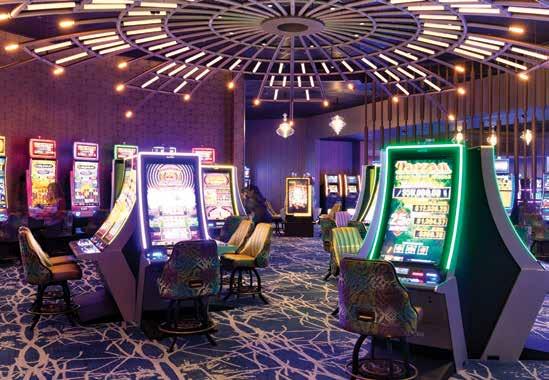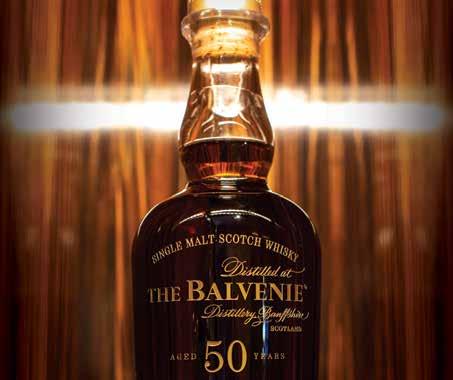THE MAGAZINE OF THE SAN MANUEL BAND OF MISSION INDIANS
H amiinat
H amiinat
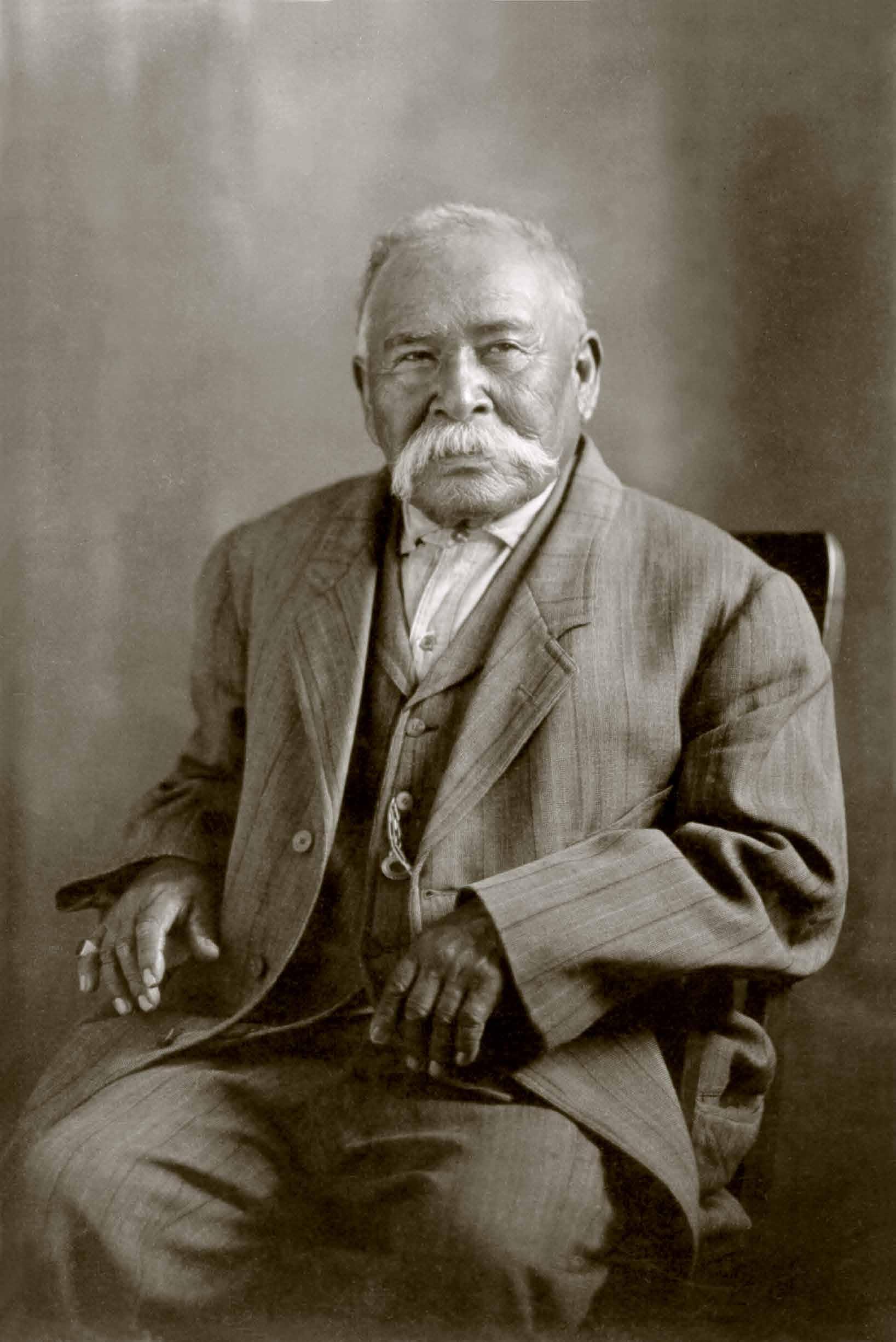
Santos Manuel
SAVING HIS PEOPLE, SAFEGUARDING THE CULTURE
CELEBRATING


Welcome to our inaugural issue of Hamiinat,
the magazine of the San Manuel Band of Mission Indians. The title translates to “hello” in the Maara’yam (Serrano Indian) language, and that is just what we want to extend to you – a warm hello.
On the cover, we proudly feature Santos Manuel, Kiika’, or leader of the Yuhaaviatam people. We share the story of how Santos Manuel showed great leadership and took the action necessary to protect our ancestors when they were in the most danger. If it hadn’t been for him, we wouldn’t be where we are today: on the verge of exciting new changes.
As one of 109 sovereign Indian tribes in California recognized by the U.S. government, we have the authority to operate government gaming on our lands. It is for this reason that we have been able to enhance the well-being of our people, revitalize our culture, support our neighboring communities and continue to build out entertainment experiences for our guests. And we believe that the best is yet to come.
In July we unveiled our newly expanded gaming space, which features more than 1,300 new slots and 40 new table games, plus a high limit room, three new bars and three high-end retail boutiques. We are also adding two additional dining venues. This winter, we will complete our expansion by putting the finishing touches on our first luxury resort. And in May, the Tribe announced it had entered into a definitive purchase agreement for the Palms Casino Hotel in Las Vegas, NV.
We invite you to learn more about our heritage and our history within these pages. Along with our profile of Santos Manuel, we share how we keep the Serrano culture alive today: the celebrations, the people and the art. And finally, you’ll meet the people who make San Manuel Casino great: tribal citizens, mixologists, chefs, cherished team members and first responders.
We thank you for being our guest and can’t wait to share our hope for our Nation’s future and our enthralling new experiences with you.

Chairman Ken Ramirez San Manuel Band of Mission Indians


A NEW THRILL TAKES SHAPE
EXCLUSIVELY AT SAN MANUEL CASINO. DECEMBER 2021.

Heritage Indulge Together
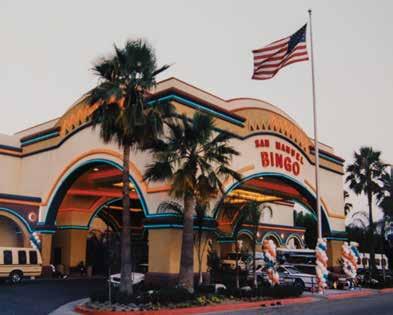


In the aftermath of colonization, with only a few dozen surviving tribal citizens, Santos Manuel leads his people to safety.
The history of the People of the Pines.
Once used for cooking, carrying water and collecting herbs, Serrano baskets are defined by expert craftsmanship and intricate design.
Meet the four girls who have raised their voices for missing and murdered Indigenous people and the leaders addressing the crisis.
A tribal elder’s reflection on reservation life – from the late ‘30s to today.
Beautiful, handcrafted ribbon regalia connects tribal citizens with their ancestors.
From poverty to prosperity: how the fight for gaming on tribal lands transformed the Tribe and the surrounding communities.
Immersed in the Tribe’s most important values, the Youth Committee is poised to carry those values into the future.
Ancestral motifs from Native designers bring deeper meaning to the fashion scene.
More than crafts, food and dancing, the San Manuel Pow Wow brings together people from all nations.
Helping each other up: the story of San Manuel Band of Mission Indians and Loma Linda University Health.
Keeping the Reservation and surrounding communities safe: the first responders of San Manuel.
Raiders’ Tom Flores – head coach, assistant coach and quarterback – finally gets inducted into the Hall of Fame. Now he shares his journey.
The possibilities are endless as a team member of San Manuel Casino.
A day-one employee shares why she loves working at San Manuel Casino.
Stylish ways to protect the things that matter to you.
San Manuel Casino is on the verge of becoming a stand-alone dining destination.
Find a menu chock full of locally sourced, seasonal dishes at Bear Springs Bistro.
The pastry chef behind those hard-to-resist sweet treats shares the recipe for his favorite dessert.
82
There’s a burgeoning cocktail culture in the Inland Empire. Now the men driving the transformation share their vision. 86
New lounges offering the highest limits on the West Coast elevate the gaming experience.
Hit this study guide before hitting the felt: the ins and outs of table gaming at San Manuel Casino.
Get a peek at San Manuel’s new luxury resort before it opens this winter.
The inspiration behind the scrumptious desserts.
Strictly for whiskey aficionados: the extravagance of a lifetime.
San Manuel Gaming and Hospitality Authority stakes a claim in Las Vegas with their newest acquisition: Palms Casino Resort.
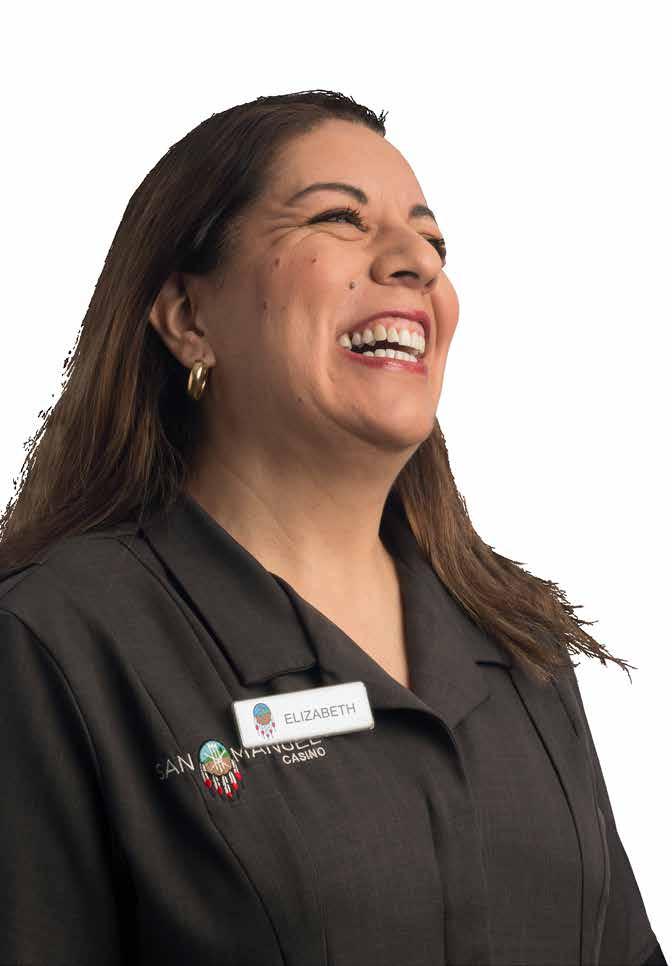



H amiinat
Fall 2021
BUSINESS COMMITTEE
CHAIRMAN Ken Ramirez
VICE CHAIRMAN Johnny Hernandez, Jr.
SECRETARY Audrey Martinez
TREASURER Latisha Casas
MEMBER AT LARGE Alexis Manzano
MEMBER AT LARGE Karina Torres
MEMBER AT LARGE Ed Duro
CONTRIBUTORS
Kyle Anderson
Peter Arceo
David Bentley
Afsi Bird
Jenna Brady
Lee Clauss
Jacob Coin
Kyle Corcoran
Christopher Ditico
Melissa Duro Hernandez
Timothy Evans
Andrea Ferguson
Stevie Goldstein
Steven Gomez
Joey Gottesman
Kenji Hall
Serena Harper
Cathy Knowles
Gerri Manzo
Chelsea Marek
Summer Massoud
Jessica Mauck
Pete Mateo
Tonya Oatman
Michelle Olden
Anthony Olivas
Chris Rosano
Brigitte Saria
Dianna Scina
Ryan Sharpe
Ken Shoji
Stephanie Short-Smith
Michael Smith
Robert Tager
Jasmine Takeshita
Rikki Tanenbaum
Adam Torres
An Tran
Brandi Vega
Laurens Vosloo
Chuck Williams
Oliver Wolf
Wendy Zhu
Loma Linda
University Health
Las Vegas Raiders
San Manuel
Gaming Commission
A VERY SPECIAL THANK YOU TO THE FOLLOWING:
Jamie Barron
Presley Calderon
Becky Campos
Jayden Casas
Raven Casas
Shila Chacon
Destiny Duro
Henry Duro
Nicole Fields
Alyssa Guerrero
Annabella Hernandez
Gauge Hernandez
Johnny Hernandez, Jr.
Alexis Manzano
Deron Marquez, Ph.D
Audrey Martinez
Alaina Mathews
Dodie Morongo
George “Boy” Murillo
Jordan Murillo
Ken Ramirez
Hawk Ramos
James Ramos
Tom Ramos
Lynn Valbuena
Cultural Advisor Working Group
EDITORIAL
EDITOR-IN-CHIEF Audrey Martinez
MANAGING EDITOR Alyssa Guerrero
VP TRIBAL BRAND MARKETING Jessica Stops
TRIBAL BRAND MARKETING Darcy Gray
TRIBAL BRAND MARKETING Julie Lopez
PUBLISHER Peter Gotfredson
CREATIVE DIRECTOR Lauren Clulow
EXECUTIVE EDITOR Jessica Villano
Thank you to the San Manuel Band of Mission Indians and the entire tribal community for sharing their stories: past, present and future. We extend a special thank you to those who contributed to the development of the first issue.
eritage
HISTORY p8 PROGRESS p14 ARTISTRY p16 AWARENESS p18 PERSPECTIVE p24 TRADITION p25 SUCCESS p28 ON THE HORIZON p32 FASHION p34
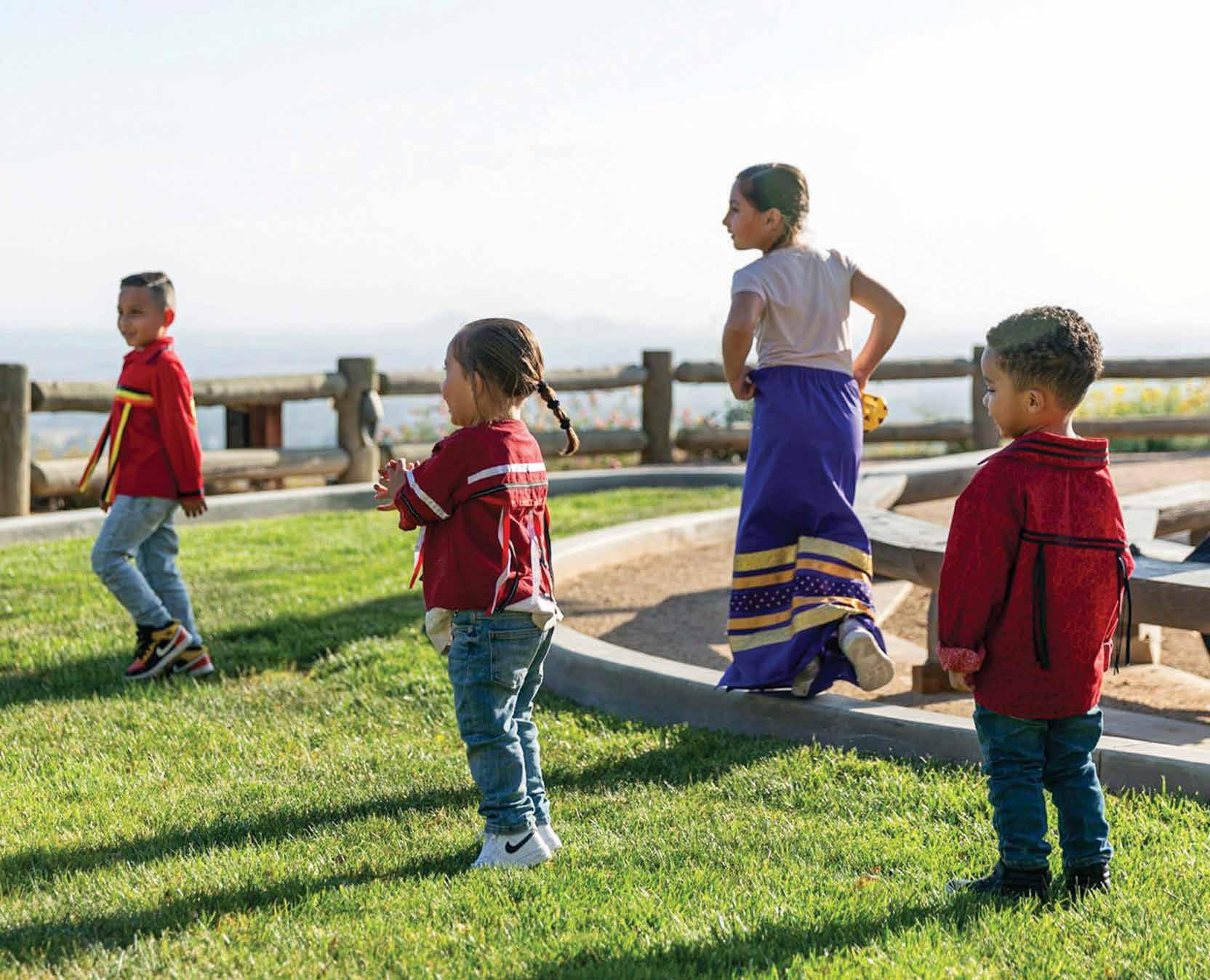
In this section we celebrate the Yuhaaviatam people. Meet the man whose decisive action saved the Tribe after the turmoil of colonization; get a glimpse of how events have unfolded over the centuries; and step into the modern era to explore current issues as well as the craftmanship and artistry honoring the Yuhaaviatam ancestry today.
SANTOS MANUEL
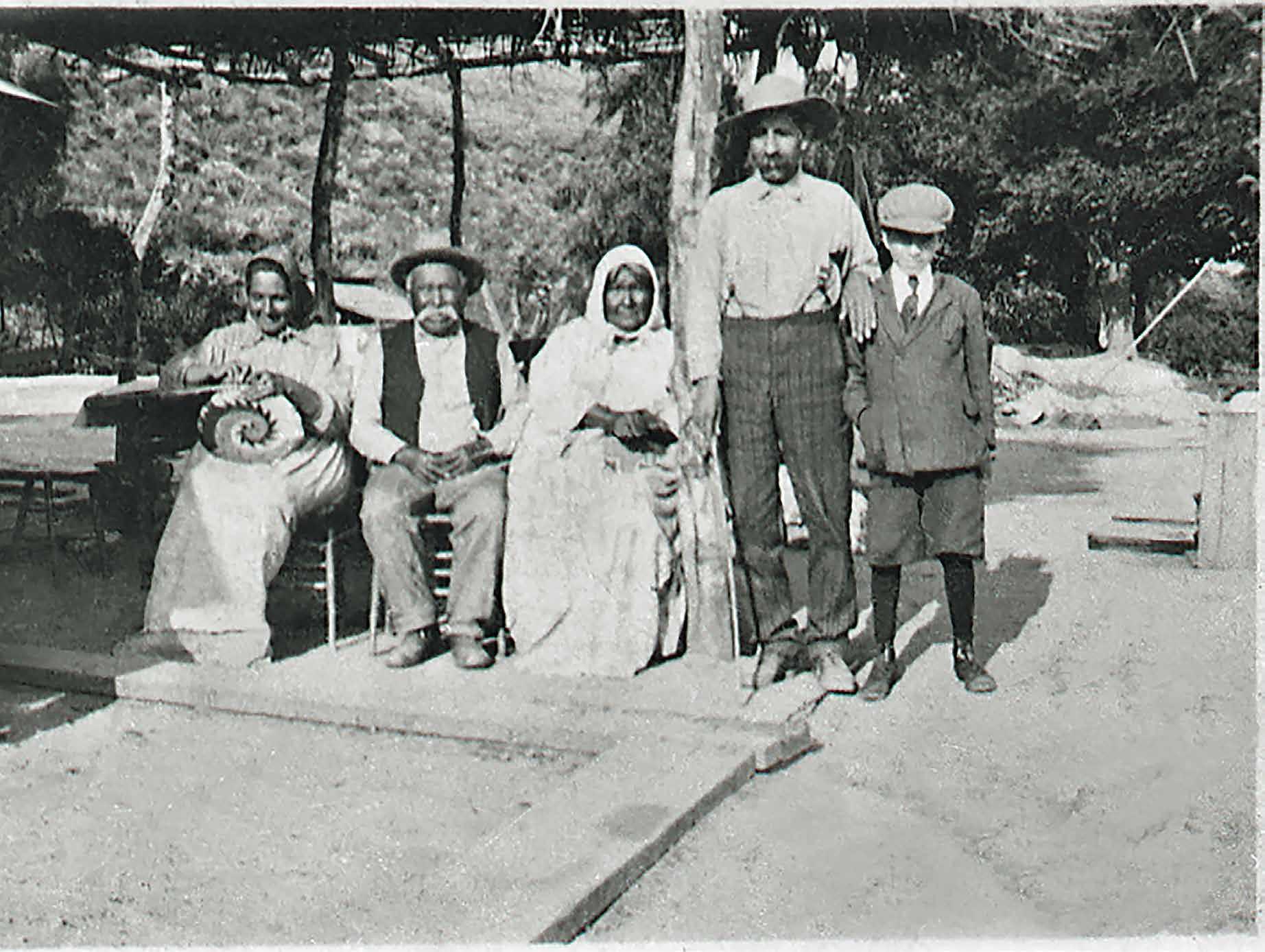

A.K. Smiley Public Library, Gerald Smith Collection
KIIKA’
OF THE YUHAAVIATAM CLAN OF SERRANO INDIANS
The leader, healer and friend who saved the people and safeguarded their culture for generations to come.
By Clifford E. Trafzer
At the beginning of time, the Creator gave the land, water, plants and animals to the Yuhaaviatam, or Pine Tree people of Southern California. The domain was vast and included the San Bernardino Mountains, lands north and east of the mountains in the Mojave Desert, much of the San Bernardino Valley and the northeastern portion of the San Gabriel Mountains.
This place on earth was more than property: It was the only place that the Creator had designated for the Yuhaaviatam; and the people had obligations of stewardship and reciprocity to all things in their homelands. The Creator taught the first people how to live with each other and with the plants and animals. ———
As a young boy, Santos Manuel was taught by his elders how to live in harmony with the environment and follow the Creator’s laws. He learned the sacred songs and stories of his people, and where those stories are embodied across Serrano territory.
He was born in 1814 into the village of his father in the San Bernardino Mountains and named Paakuma’ by his parents. Since the Spanish had given his father the surname Santos, some people called Paakuma’ by the name Manuel Santos or more commonly, Santos Manuel. The Spanish also named the people Serrano, indicating they were from the mountains or highlands.
Santos Manuel distinguished himself as caring, thoughtful and intelligent when he was still a child. Elders saw him as a future leader, so they expected much of him. His parents and other elders among Yuhaaviatam people treated him with respect but demanded more from him as a way of preparing him for leadership.
About the age of 12, Santos Manuel and other boys experienced their puberty rites ceremony. Elder men met with initiates to prepare them for a future life of service. At that moment, they had no idea about the enormous challenges Santos would have to navigate for the survival of his people.
Even as a young man, it was clear Santos Manuel would lead his people: he was the recipient of a song that described the huge landscape the Creator had given his people, the Maara’yam – of which his clan, the Yuhaaviatam, are a part. This song served as an oral deed to the land and resources, which Santos Manuel held for his people and passed on to his son, Tom Manuel.
During the middle of the 19th century, Santos Manuel became the Kiika’ of Yuhaaviatam people, and one of the great Native leaders of Southern California. In addition to his natural talents as a leader and healer, the Creator gave Santos Manuel a strong body and keen mind, all of which he used generously to help others.
He was an exceptional deer hunter and, following the traditions of his people, Santos Manuel made his

first deer kill at a young age and gave away the venison. As the leader of the Yuhaaviatam, he had the responsibility of caring for and sharing with all his people.
George Murillo, the husband of Santos Manuel’s great-granddaughter, Pauline Murillo, explained, “He always made sure his people had food.”
Native Americans far and wide understood that Santos Manuel controlled all the resources within the Yuhaaviatam landscape. If others wished to hunt or gather on this landscape, they had to ask permission.
But he always shared the natural bounty, including many acres of black oak, live oak and piñon trees, which provided acorns and pine nuts. As long as his people had food, Santos Manuel graciously gifted the Gabrieleno (Tongva), Kitanemuk, Kawaiisu, Chemehuevi, Cahuilla, Luiseño, Mojave and others with foods from Serrano lands.
Tlogging, mined for precious stones, polluted water and allowed livestock to decimate the natural world. All of these incursions destroyed the Serrano way of life and their subsistence- and trade-based economy.
By the 1860s, California settlers had enslaved American Indian men, women and children and, in 1866, the pivotal moment in Serrano history occurred: the murder of two Native boys by a group of settlers, leading to an unprovoked war against not only the Yuhaaviatam, but all Native people from the San Bernardino Mountains to the Colorado River.
Santos provided the will of survival in the face of great danger…he taught the people resilience.
The 32-day massacre, conducted by a settler militia supported by the California governor, resulted in an untold number of deaths. It was a gruesome and inhumane act. By one account, a volunteer soldier bragged about killing two Indians with one bullet. He shot a young woman in the back as she ran away, the bullet passing through her body, killing her and her baby.
———
he Yuhaaviatam lands and resources were a perpetual gift from their Creator, but in the 18th century, the Spanish claimed to have discovered these lands and later, in the 19th century, Mexican and American governments claimed them as their own.
For over 100 years, settlers moved onto Yuhaaviatam lands, built homes, removed trees for
The Serrano knew how to fight enemies, but Santos Manuel counseled his people not to fight the settlers. Instead, in order to save the remnant of his people, which numbered less than 30 at this time - Santos Manuel gathered his people and moved them out of their mountain home to the San Bernardino Valley.
“Santos Manuel took action,” said tribal Chairman Ken Ramirez, a great-great grandson of Santos Manuel. “He acted quickly and saved many lives.”
His descendants often remark about how Santos


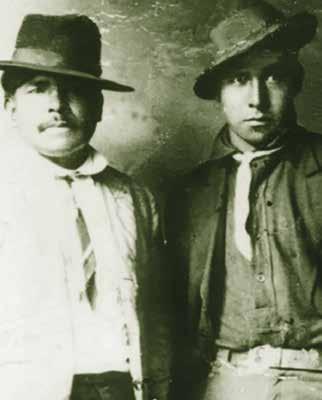
People of the Pines
High in the San Bernardino Mountains at Yuhaac, in an area of pine trees near present day Baldwin Lake, Küktac the Yuhaaviatam Creator lay dying. When Küktac died, the people began to mourn and their grief turned them into pine trees, enriching the land with vegetation and allowing future generations to thrive. Every winter the people gathered to tell this story and learn the songs of their people.
Today, the Yuhaaviatam still learn these stories and share them with the younger generations.

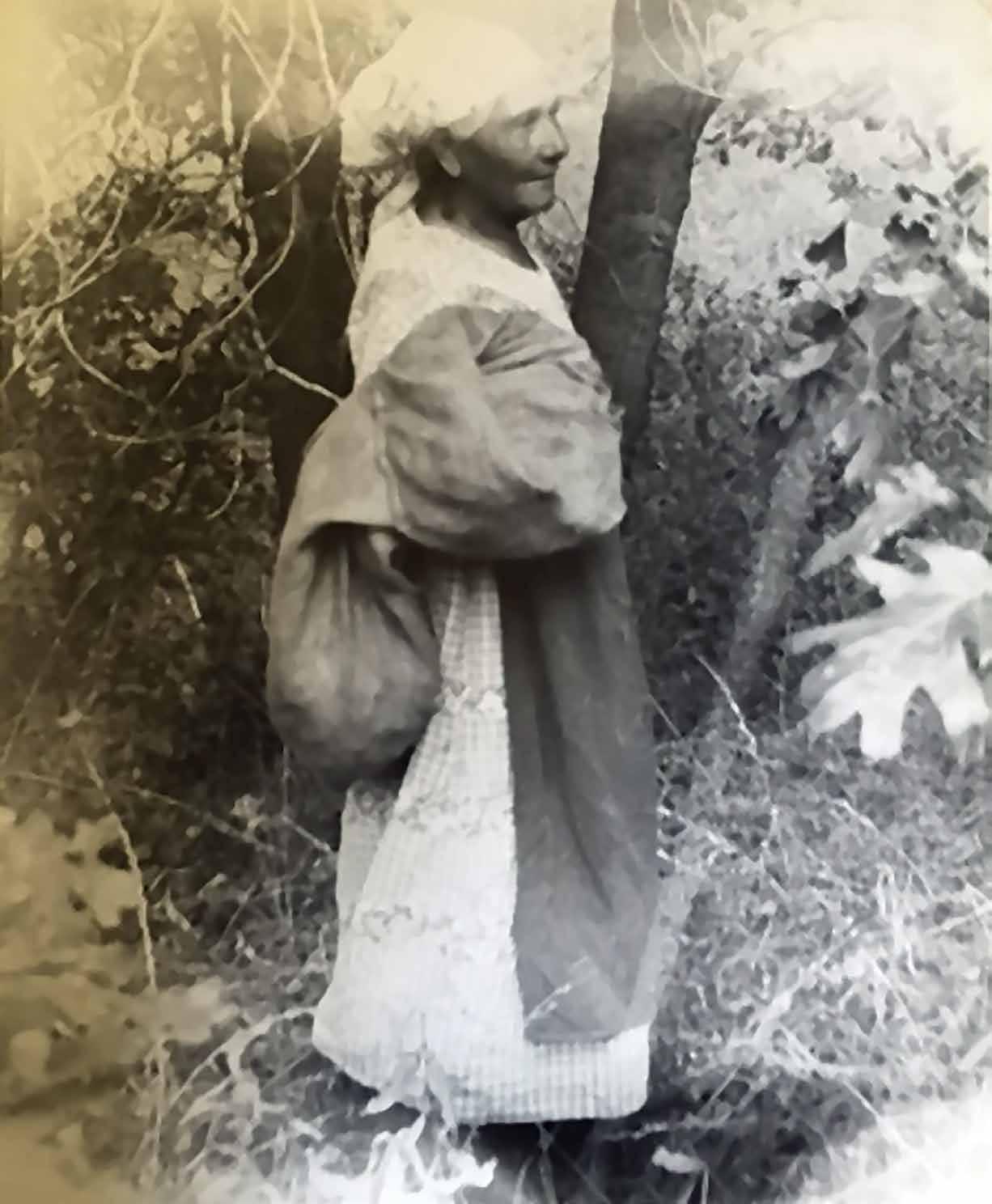
Manuel knew intuitively when settlers planned to harm his people. At those times, tribal elder Pauline Murillo said the leader would advise tribal citizens to stay out of town. Santos Manuel would also take villagers into the mountains to hunt and gather natural items for tools, baskets, houses and weapons, thereby avoiding settler violence.
Chairman Ramirez said, “Santos Manuel saw things before they happened and acted to protect his people, his tribal family.”
After being chased out of the mountains by a murderous militia, Santos Manuel and his remaining band lived a refugee existence for three decades along the banks of Warm Creek. The leader then established a permanent village in the foothills above present-day Highland, where the Tribe has lived since the late 19 th century. California Assembly Member and tribal citizen James Ramos remarked, “Santos Manuel provided the will of survival in the face of great danger…he taught the people resilience.”
The San Manuel Reservation, established by a Presidential proclamation in 1891, had a commanding view of the San Bernardino Valley where residents could watch for approaching visitors. Tribal elder Dolores Crispin told her family, “Look now you see that I am telling you this, so you can pass it on to your children. Hear me well, see that faint little speck of light way down there from the homes of whites. Someday, there will be more and more.” ———
In addition to his skill as a leader, Santos Manuel had a powerful connection with the spiritual world, which informed his relationship with his homelands, his people and his neighbors. He was a holy man, and a remarkable healer who called on the spiritual world to heal the sick. Even after he passed, he appeared in spirit to heal his granddaughter, Martha Manuel.
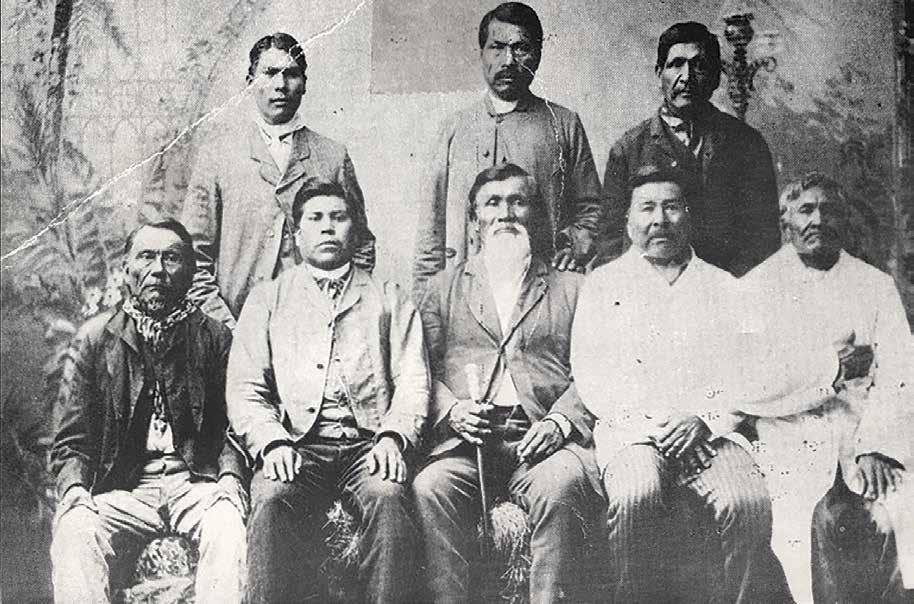
because we are loyal and dedicated stewards of this land – our home. Like Santos Manuel, we bridge our Native American world with other residents of our homelands.”
Santos Manuel died in October 1919. He lived through Spanish missionization, the MexicanAmerican War, the California Gold Rush and the Civil War, as well as the American settlement of Southern California, the coming of the citrus industry, urban development and World War I.
Santos taught his people the traditional values that live within every tribal member today.
In spite of all this upheaval, change, uncertainty and pain, he maintained his culture and responsibilities, passing on his leadership traits to his people. Today, tribal leaders honor him and follow in his footsteps.
Santos Manuel oversaw ceremonies in the Big House or Kiič Atiü’ac on the reservation. He was strong as a bear and when he blessed and cleansed the Big House, he crouched like the fierce animal as he prayed and sang. Some say it made the earth shake.
But even with this strength, Santos Manuel expressed peace and friendship to settlers as well as his loyalty to the United States. In fact, every Fourth of July, he dressed in clothing made from an American flag and traveled by train, shaking hands with passengers.
“In my home, we have the picture of Santos Manuel dressed in the American flag with his top hat. He showed kindness and reached out to others, as we still do today,” Chairman Ramirez explained. “The San Manuel Tribe is very much part of our Inland area. We are deeply and proudly patriotic
Assembly Member James Ramos, who is also the great-great grandson of Santos Manuel, said, “People in California, and around the country, should know what happened to Serrano people and other California Indians. They should know the truth about the fighting, killing and genocide. The Yuhaaviatam population was down to thirty people at one time. Our people were nearly exterminated…without Santos Manuel we might be extinct today.”
Chairman Ramirez shared that Santos Manuel and other tribal elders urged the people to always remember who they were and where they came from. The elders wanted them to remember their ancestral land had been gifted from the Creator and to hold onto their traditions, their way of life.
“Our elders saved our culture and language, bridging the old ways with new ways. Santos Manuel refused to carry the bitterness of the past but created a new path for the sake of seven generations to come,”
Chairman Ramirez explained. “He taught his people the traditional values that live within every tribal member today. This is the spirit of Santos Manuel and we want our children to know this spirit. That is why we pay homage to Santos Manuel.”
Holding on to Heritage
Rich in culture and tradition, the Tribe shares its heritage in order to preserve it. Once reduced to a handful of Serrano speakers, today the language has been safeguarded through the Serrano Language Revitalization Program. The Tribe also partners with government agencies and conservation groups to protect important places in the ancestral territory and share the story of the San Manuel Band of Mission Indians with the public. The cultural traditions can be experienced at the annual San Manuel Pow Wow, a three-day celebration of music and dance, which highlights an enduring Serrano culture such as bird singing and dancing.
From Then to Now
A look at the resilience and determination of the Yuhaaviatam to remain self-sufficient and sovereign
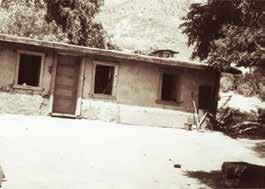
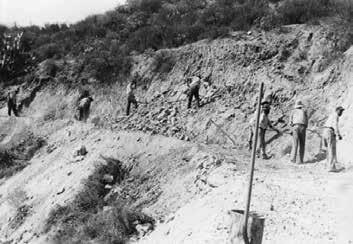
1700s-1820s
Spanish missionaries and military encounter the Yuhaaviatam (one clan of the Maara’yam), which they call “Serrano” or “highlander.” Many Maara’yam are forced into the mission system as slave labor for Spain.
CREATION
Since Time
Immemorial Maara’yam people inhabit the mountains, valleys and deserts of Southern California.
1850s-1860s
American settlers invade Serrano territory. CA governor instructs militias to exterminate Native people. Yuhaaviatam are killed and chased out of their territory.

1880s
Native American boarding schools are established in the U. S. with the primary objective of “civilizing” or assimilating Native American children and youth into Euro-American culture, while destroying and vilifying Native American culture.
TREATY MAKING
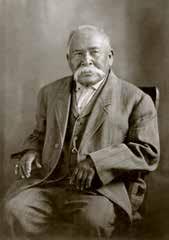
1866
Raids and bloodshed decimate the Tribe. Kiika’ Santos Manuel makes decision to courageously bring the remnant of his people from the mountains to safety on the valley floor.
Early to Mid-1900s
Tribe adapts and adjusts to reservation life. U.S. government continues to dictate what the Tribe can and cannot do.
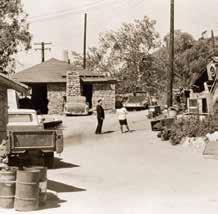

1975
1966
Articles of Association are adopted by San Manuel Band of Mission Indians.
President Ford signs the Indian SelfDetermination and Education Assistance Act, a federal policy of Indian selfdetermination, first declared by President Nixon.
THE NEW DEAL
ASSIMILATION
1934
1891
U.S. government passes the Act for Relief of Mission Indians, which recognizes the Tribe as a sovereign nation and establishes the Reservation. The Tribe chooses the name San Manuel Band of Mission Indians.
Indian Reorganization Act is enacted by U.S. Congress, aimed at decreasing federal control of American Indian affairs and increasing Indian self-government and responsibility.
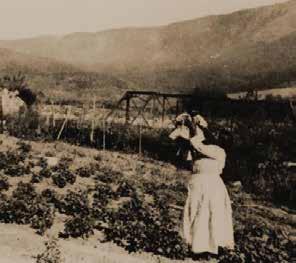

1970
In address to Congress regarding the federal policy of terminating relationships with tribes, President Nixon states, “This policy of forced termination is wrong.” He then outlines a policy of self-determination rather than termination.
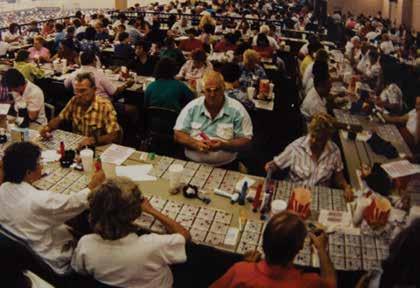
1986
San Manuel Indian Bingo opens.
1987
1978
Indian gaming movement begins with Seminole Tribe of Florida.
California v. Cabazon: U.S. Supreme Court landmark decision affirms right of tribal governments to conduct gaming on their lands.

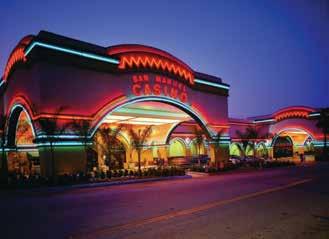
1990s-2000s
Tribe takes an active role in passing Proposition 5 and Proposition 1A.
1998

Proposition 5 is supported by 63 percent of voters in favor of gaming by Indian tribes in California. A lawsuit by a labor union causes the measure to be struck down by California Supreme Court.
SELF-DETERMINATION
1988
Indian Gaming Regulatory Act passes, creating statutory framework for Indian gaming.

1980s
SMBMI seeks new business opportunities to strengthen sovereignty and journey towards self-sufficiency.

1994
San Manuel Indian Bingo adds gaming operations and advances goal of economic selfsufficiency.


2000
Residence Inn by Marriott opens in Washington, DC. The project is from the Four Fires intertribal economic partnership, which includes San Manuel Band of Mission Indians.
2017
Tribe transforms bingo hall into Rockin’ Casino area.
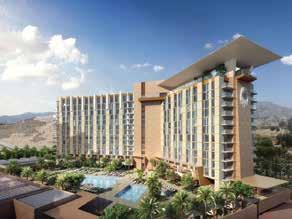
2021
2019
San Manuel Gaming and Hospitality Authority forms to explore economic growth opportunities.
First phase of San Manuel Casino Resort expansion finishes.
STRENGTHENING OUR FUTURE
2006
San Manuel Band of Mission Indians breaks ground on San Manuel Village in Highland, CA, a mixed-use, off-reservation, commercial development.
2007
Residence Inn by Marriott opens in Sacramento, CA. The project is from the Three Fires intertribal economic partnership, which includes San Manuel Band of Mission Indians.
2008
Hampton Inn and Suites Hotel opened in Highland, CA, at San Manuel Village, a development of the San Manuel Band of Mission Indians.
Proposition 1A, supported by 65 percent of California voters, changes the state constitution and provides exclusive right to Indian tribes to operate a limited scope of casino-style gaming on Indian lands, in accordance with federal law.
2018
Opening of the Autograph Collection, The Draftsman Hotel, in Charlottesville, VA, a joint venture that includes the San Manuel Band of Mission Indians.

2016
SMBMI acquires sacred lands in San Bernardino Mountains with purchase of Arrowhead Springs Hotel.
2021
San Manuel Gaming and Hospitality Authority announces agreement to purchase the Palms Casino Resort in Las Vegas.
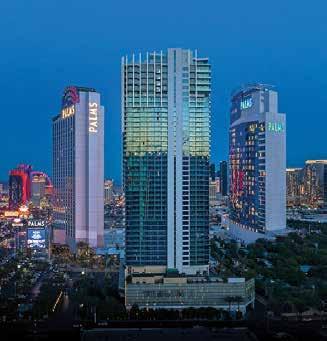
Woven History
WHERE INGENUITY, NATURE AND CULTURE INTERSECT, WE FIND THE BASKETS OF THE MAARA’YAM (SERRANO) PEOPLE.
Made of plants native to their ancestral territory – such as deergrass, sumac, willow, yucca and juncus fibers – Maara’yam baskets were used to collect materials such as acorns and healing herbs, as well as to cook and carry water.
Some baskets were woven so tightly that when soaked, the fibers would expand, making them watertight. Others were lined with a malleable material – such as asphaltum – to make them impermeable. Oftentimes people would put fire-heated rocks in the baskets to heat water for cooking.
The baskets have great meaning to the Maara’yam people, and many are considered sacred. Tribal Vice Chairman Johnny Hernandez, Jr. explained, “Their blood, sweat and tears went into them. We see them as ancestors. Their spirits are in them.”
Basket weavers were, and still are, respected within their communities for their skills portraying the plants, animals and landmarks of their ancestral home within their intricate weaves.
These patterns and techniques, passed down through generations, keep tribal citizens connected with the culture of the Maara’yam people.
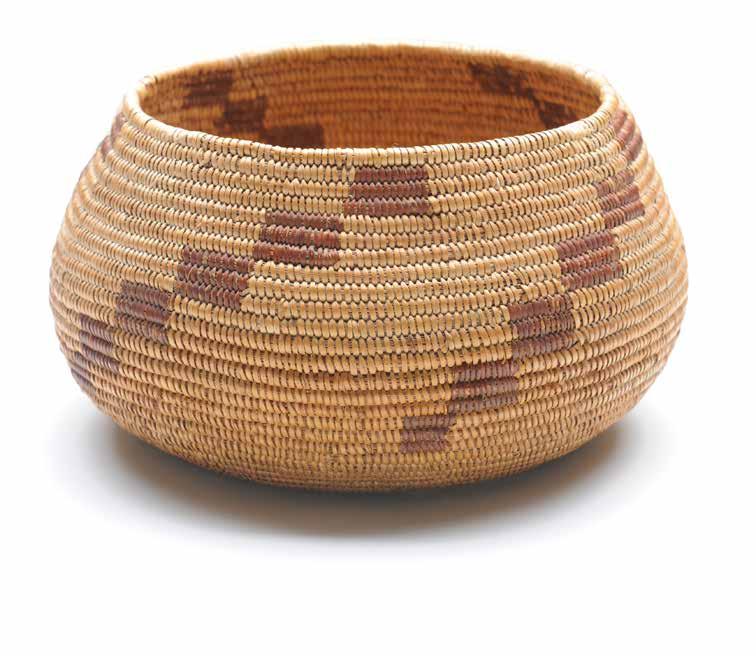

Basket weavers harvest and preserve plants native to their ancestral homelands for their craft and pass this knowledge down for future generations.

Coiled baskets can take several months to complete, depending on the size and complexity of its pattern.
Speaking for Those Who Can’t Speak for Themselves
w Silent No More


FOUR YOUNG
WOMEN
wwSPEARHEAD THE EFFORT FROM THE SAN MANUEL BAND OF MISSION INDIANS TO BRING AWARENESS TO THE CRISIS OF MISSING AND MURDERED INDIGENOUS PEOPLE.
On a warm August day nearly two years ago, three young Native women courageously prepared for a monumental day. They dressed in red ribbon skirts and wore black shirts boldly printed with red handprints as they appeared before the California state legislature. The issue they were testifying about: the disproportionate rates of violence that Native women and girls face.
By Aliyah Chavez
Even though the advocates – Destiny Duro, Raven Casas and Annabella Hernandez – were just in middle and high school, they traveled to Sacramento to speak before the state’s select committee on Native American affairs – a feat that ultimately spurred momentum to pass AB 3099, a key piece of legislation from Assembly Member, and San Manuel tribal citizen, James Ramos.
Together, the trio’s testimony outlined data showing that Native women and girls were going missing or being murdered at a higher rate than any other ethnic group. In fact, statistic after statistic showed Native women and girls are 10 times more likely to be victims of crimes, including assaults and human trafficking.
“These statistics are unacceptable,” Annabella Hernandez said.
Not Just Women and Girls, but Men Too
Lisa Craig is a relative of Nick Patterson, a 26-yearold male who went missing from his home on the Pit River Reservation. It’s now been more than a year since Nick was last seen.
In the early days of Nick’s disappearance, Craig and family went to law enforcement with concern and urgency, only to be met by several roadblocks, one of which was working with non-Native law enforcement agencies.
Her family was pushed off after being told Nick was among a crowd who did drugs, so “he basically didn’t matter,” Craig said. She then added, “this issue affects not just women and girls, but men too.”
While people may be familiar with the name MMIWG (Missing and Murdered Indigenous Women and Girls), the issue is now more commonly referred to as Missing and Murdered Indigenous People (MMIP) or Missing and Murdered Indigenous Women and People (MMIWP) to be inclusive of gay, non-binary and transgendered people as well as Indigenous males.
The young advocates agreed that it’s important to understand the breadth of the issue that has been plaguing Indian country for years. “We want to bring awareness to what’s happening to Native
people – male and female,” Calderon said after hearing Nick’s story.
The group’s advocacy now includes another voice, Presley Calderon, a cousin of the girls whom they encouraged to get involved in their work. In October, the four young girls gained recognition for their advocacy work with the “30 under 30” award from Assembly Member Eloise Gómez Reyes.
When asked why this work was so important to them, Hernandez said, “You can feel empathy at any age.”
The issue first came to their awareness in 2019, when Casas, Hernandez and Duro attended a workshop on the crisis at a national conference for tribal youth. Shocked, upset, sad, tragic were some of the words they used to describe how they felt when they learned the statistics. This was quickly followed by glaring concern. “This issue is not being talked about enough,” said Hernandez.
Since that experience, the teenagers donate time at least twice a month to discuss upcoming plans. And much of their advocacy is represented by wearing red, a color that has come to be emblematic of the MMIWP crisis, along with the red handprint.
The MMIWP crisis in California
California is home to more Native American and Alaska Native people than any other state across the country, with more than 109 federally recognized tribes and over 70 non-federally recognized tribes in the state.
Experts say there are many issues plaguing the state in addressing the MMIWP crisis, mostly stemming from a lack of quality data; it’s estimated the crisis is actually much larger than is being reported.
Other issues include problems with law enforcement jurisdictions, cases that go unreported for fear of retaliation and victims who are racially misclassified.
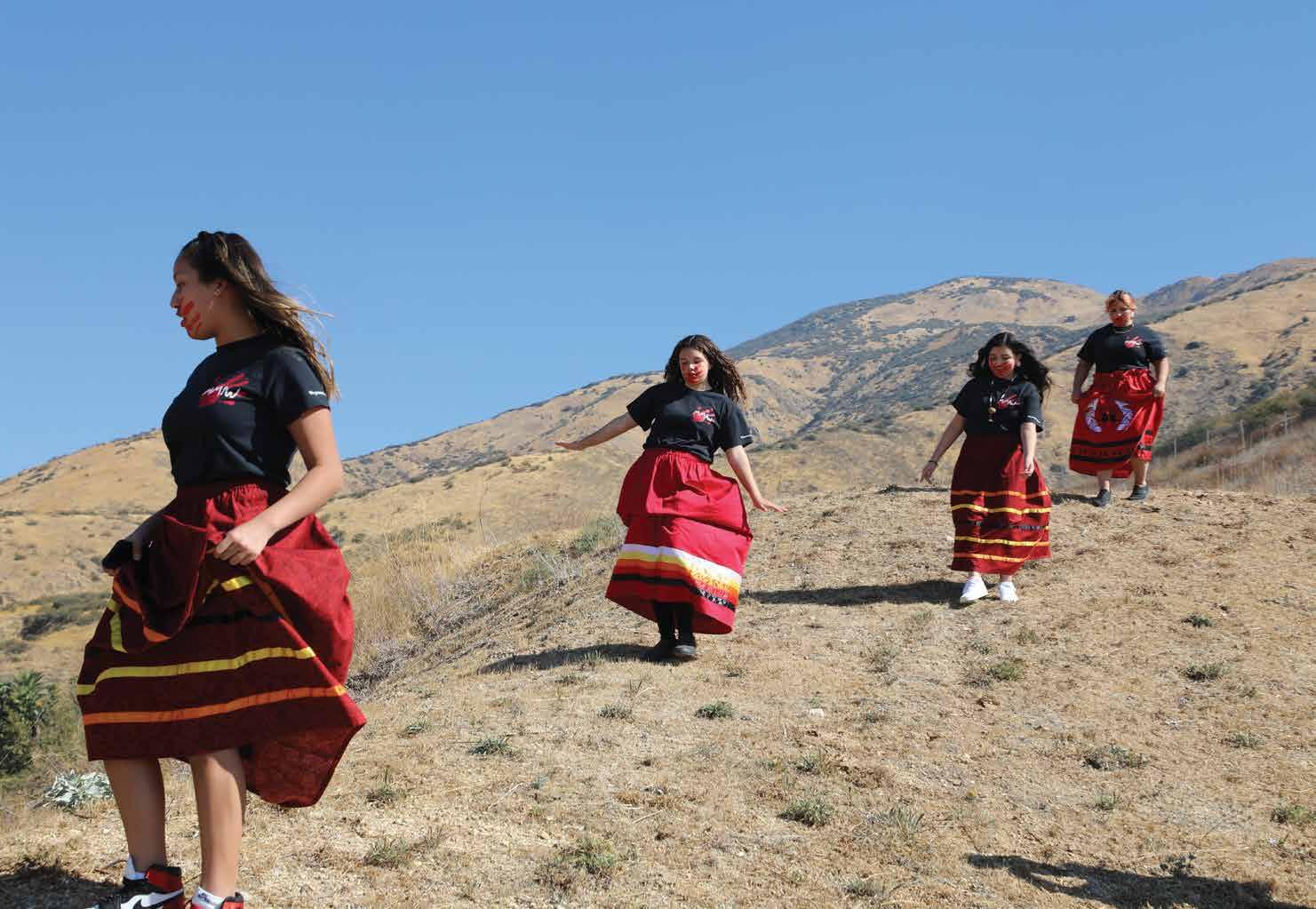
All of these subjects were front and center during an awareness event for the MMIWP crisis hosted by Assembly Member James Ramos and livestreamed on his Facebook page in March.
In the Tule River Tribe of California, a tribal nation located some 51 miles north of Bakersfield, Chief of Police Joseph Campos shared that he regularly sees violence play out and shared the story of a young female Tule River tribal citizen, who was placed in an off-reservation foster home. She ran away from the home in February 2020, but it wasn’t until 10 months later that Tule River tribal law enforcement was notified their citizen was missing. Instead, a local agency had conducted
an investigation to find her whereabouts but came up empty handed.
When the tribal law enforcement agency inquired why they weren’t contacted about the case, they learned the agency in charge didn’t think tribal police were a certified law enforcement agency, despite the fact that tribal nations govern themselves and protect their citizens.
Finally, the Tule River tribal law enforcement was brought in to find the missing girl. The same day they were notified, they issued a missing juvenile poster and posted it to their social media pages. The young female was located

Did You Know?
At the end of the day, we would like to see that the moment a Native American woman goes missing, the resources afforded to investigate and to find them are instantaneous. It’s no longer waiting three months to see if they come back to the reservation or not.
More than 90 percent of sexual assaults against Indigenous women are committed by nonNative men. While that often means efforts to bring such non-Natives to justice by tribal law enforcement fall short, a recent ruling by the U.S. Supreme Court could strengthen tribes’ ability to deliver offenders to outside jurisdictions for prosecution. In May 2021, the court delivered a unaminous ruling confirming tribal police officers have the authority to stop, detain and search non-Natives before transferring them to outside law enforcement agencies, even on non-tribal land running through a reservation, if the non-Natives are suspected of breaking state or federal law. The ruling will almost certainly assist tribal police officers in seizing evidence and detaining and handing over non-Indian suspects for prosecution. Still, unless a tribe is authorized by Congress to exercise criminal jurisdiction over non-Indian offenders (as, for example, by certain provisions in the 2013 reauthorization of the Violence Against Women Act), these offenders must still be turned over to state or federal authorities for prosecution, who may or may not prosecute the offenders.
Deb Haaland is the first Native American to serve in a cabinet position. As Secretary of the Interior, she created the Missing & Murdered Unit (MMU) within the Bureau of Indian Affairs Office of Justice Services (BIA-OJS) to increase cross-departmental and interagency communication.
In 2019, six bills addressing the tribes crisis were introduced but none were passed by Congress. Finally in 2020, Savanna’s Act and Not Invisible Act were signed into law. Both bills aim to fix the jurisdictional problems in getting justice for Indigenous people.
within hours. Unfortunately, Campos said, “the girl reported being abused while on the street before gaining help and shelter with a family member.”
In other instances, Campos said domestic violence is a “significant component” of cases when women and girls go missing and are murdered. In the last year and a half, he says there have been 35 issues of domestic violence on his reservation. “You can bet, though, fifty percent of those issues have gone unreported,” he said.
Campos added that in most cases citizens don’t report abuse or violence out of fear of retaliation.
Legislation from motivation by young advocates
Stories from victims are what spurred California state Assembly Member James Ramos, the first California Native person to serve in the state’s legislature, to take action.
Last year he introduced AB 3099, a bill mandating the state determine the scope of the MMIWP issue by submitting a report to the legislature with data collected for case numbers and barriers preventing aid. It was signed into law by Governor Gavin Newsom in 2020.
“This is just a start,” Ramos said.
While introducing the bill in his first year in office, Ramos said he faced hurdles in getting the legislation passed, particularly with educating nonNative legislators about California tribes and their issues.
To bring colleagues up to speed, he handed them news articles and held hearings with the young female advocates and law enforcement agencies. He invited families to bring photos of their loved ones and to share stories of what happened to them.
“Part of it is a task to educate legislators that have no understanding of what truly is happening in Indian Country,” Ramos said.
A key ask from legislators was: show us the data. The problem, however, is that it’s difficult to understand the scope of the issue because good data does not exist.
Annita Lucchesi is Executive Director of the Sovereign Bodies Institute, a nonprofit research center that is home to one of the largest databases of missing and murdered Indigenous peoples in the Americas. The research center recently released a report in California, identifying 165 cases of missing women, girls and LGBTQ+ individuals. Of those cases, 105 cases came from the northern half of the state.
The institute used interviews with victims’ families as well as public records requests to gather its data, saying many of their requests are denied or sometimes they never hear back.

They found, however, that over a quarter of victims are not from California tribes, further complicating the process because some law enforcement officials are not trained or don’t ask for a victim’s tribal affiliation. These errors result in racial misclassifications.
Each family in the study shared experiences of difficulty in reporting their loved one’s case to law enforcement. Many cited being told their loved one was “out partying” or that they had to wait at least 48 hours to file missing persons documentation.
“All of these barriers tell us one thing: the state has fundamentally failed Native communities and is continuing to do so,” Lucchesi said.
Lucchesi herself is a survivor of domestic and sexual assault – and hopes AB 3099 will help families and survivors.
Assembly Member James Ramos said, “At the end of the day, we would like to see that the moment a Native American woman goes missing, the resources afforded to investigate and to find them are instantaneous. It’s no longer waiting three months to see if they come back to the reservation or not.” Ramos continued, “If they’re missing, we need to make sure we’re going out there tracking
their steps to make sure they’re safe. We do that for others in the state of California. Why is there so much lag time when dealing with California’s first people?”
The young advocates agree, saying that moving forward, their work will focus on educating the general public about the issue because that’s when real change will happen.
Looking forward: a future at the Capitol?
When asked how Assembly Member Ramos felt about the young women from San Manuel testifying at the California State Capitol, he responded, “It was so heartwarming to see the young ladies giving up their time and testimony because, as they continue to grow, they’re going to see this issue expand.”
In fact, it was beyond heartwarming. When Destiny Duro, Raven Casas and Annabella Hernandez sat before the lawmakers, several of those lawmakers described the event as powerful. So powerful in fact that Ramos hopes their passion for advocacy continues to grow and, one day, results in a run for office where they can create change on an even larger scale.
Honoring our traditions
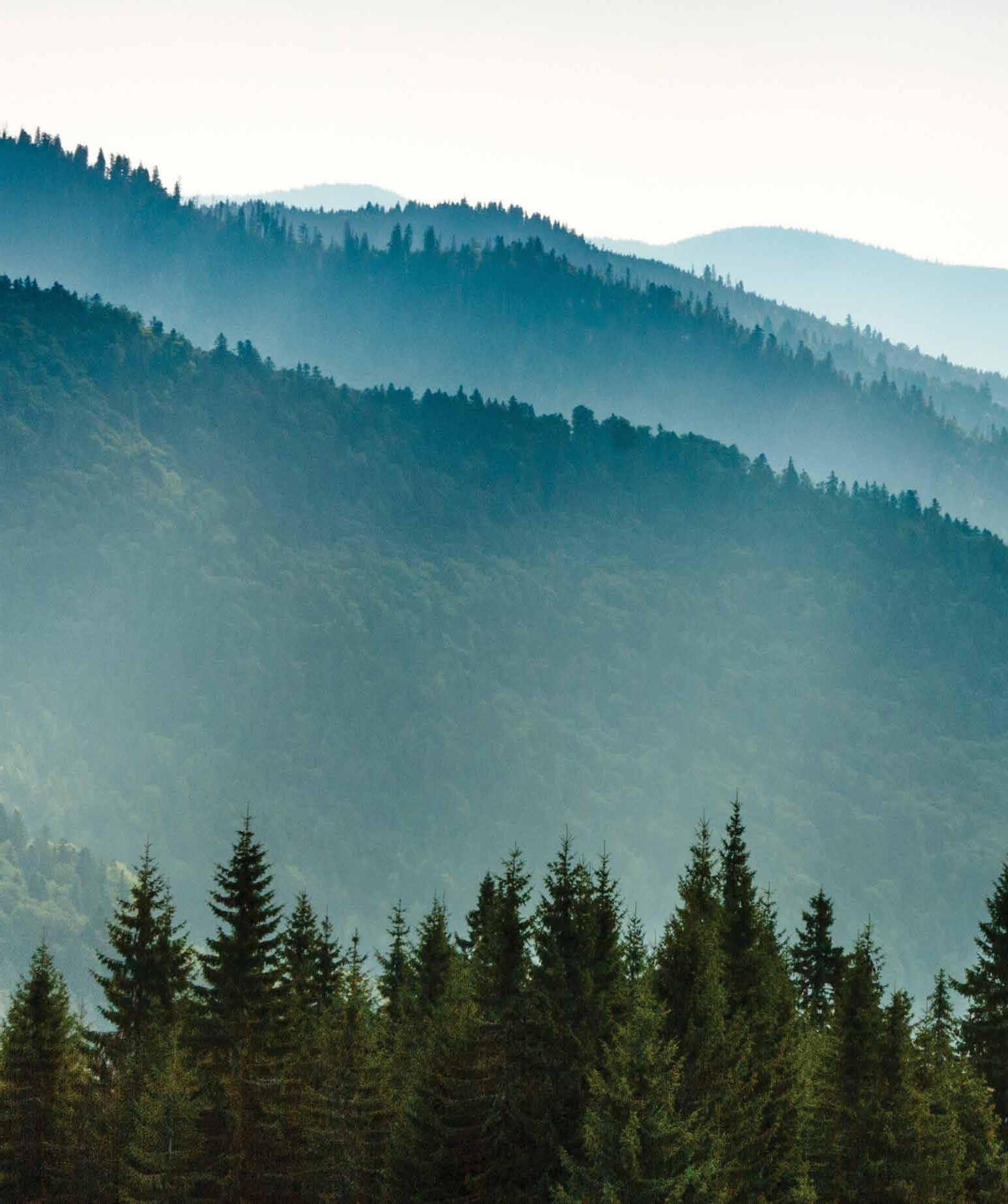
Guiding future generations
For generations, our Tribe has called the Inland Empire region our home, and we take pride in supporting our neighbors and the world around us.
Throughout today’s challenges and tomorrow’s possibilities, our Tribe will always be here for this community. Honoring our history. Celebrating our culture. Building a brighter future for us all.
REFLECTION
One of San Manuel’s most respected tribal elders shares about her childhood growing up on the reservation and in her hometown.
Dodie (Geraldine) Morongo was born March 2, 1939 on the San Manuel Indian Reservation. Her father was an enrolled member of the Tribe; her mother from the Cahuilla Reservation. Dodie, the eldest of three children – Bopey (Gail) and Max (Duane) – grew up on the Reservation and attended school in Highland, CA.
Dodie married Domingo Campos, an enrolled member of the Fort Mojave Tribe, and had four children – Laurie, Becky, Frank and Shelby. When asked about her mother, daughter Becky shared that while Dodie is a woman of few words, she expresses her great love for her family through her dedication and selfless actions.
An avid reader, Dodie loves everything from romance to sci-fi. And, in her younger years, she loved to go out dancing. Dodie worked as a Certified Nursing Assistant as well as at San Manuel Indian Bingo and Casino when it opened in 1986. Today, she lives in Highland – not far from the San Manuel Reservation – and enjoys spending time with her family.
QWhat is one great lesson you’ve learned from your ancestors?
I learned to be proud of my heritage and who I am.
Q What are your favorite memories growing up on the reservation?
How free we were as kids, running around the whole rez. Nobody saying, you have to go in now. We ran around the mountains. We learned how to live simply with what we had because we didn’t have much.
Q What was it like growing up in San Bernardino as a teenager?
We wanted to meet boys and dance! I had a record player and people would come up for dances.
Q

Can you talk about changes to the reservation that you’ve heard about over time, as well as those you’ve personally experienced?
The most significant change was having electricity and gas. Growing up, we didn’t have lights. There were just a couple places to get water. Grandma’s house on the corner had a little faucet. She would go to the
spring when we ran out of water. Once I realized we were very poor, it never entered my mind that we’d one day have a flourishing casino with income from it.
Q What does perseverance mean to you? What does it mean to your Tribe and its story through time?
To do the best with what we had, no matter what. Opposition always comes in life, but you pick yourself up and keep going.
Q As you think of how much you’ve seen change in your lifetime, what are you most proud of?
How the younger people are bringing our traditions to life.
I’m incredibly proud of Assembly Member James Ramos, how far he’s come, and how he’s helping our people in the career that he’s chosen.
QWhat is one piece of advice you’d like to pass on to the younger generations?
I would tell them to follow and respect the rules of the Tribe.

The Ties that Bind
Traditionalribbonregaliaconnects tribalcitizenswiththeirheritage
Native Americans have always donned clothing that represented their lands, their creation stories and their ancestors: each pattern told a story, each color carried meaning. On the Plains, the people wore buckskin decorated with paint, fringe and beadwork; in Southern California, the moderate climate meant people could use plant-based fabric such as yucca to weave their clothing.
For the tribes on the West Coast, their traditional dress changed with the arrival of the Spanish, when the missionaries brought with them linen, cotton and calico fabrics. Showing adaptability and ingenuity, they took the scraps of fabric and added brightly colored ribbon, transforming it into beautiful pieces full of cultural significance. Today, ribbon shirts, dresses and skirts are still worn during tribal gatherings to celebrate tradition and maintain a connection to their heritage.


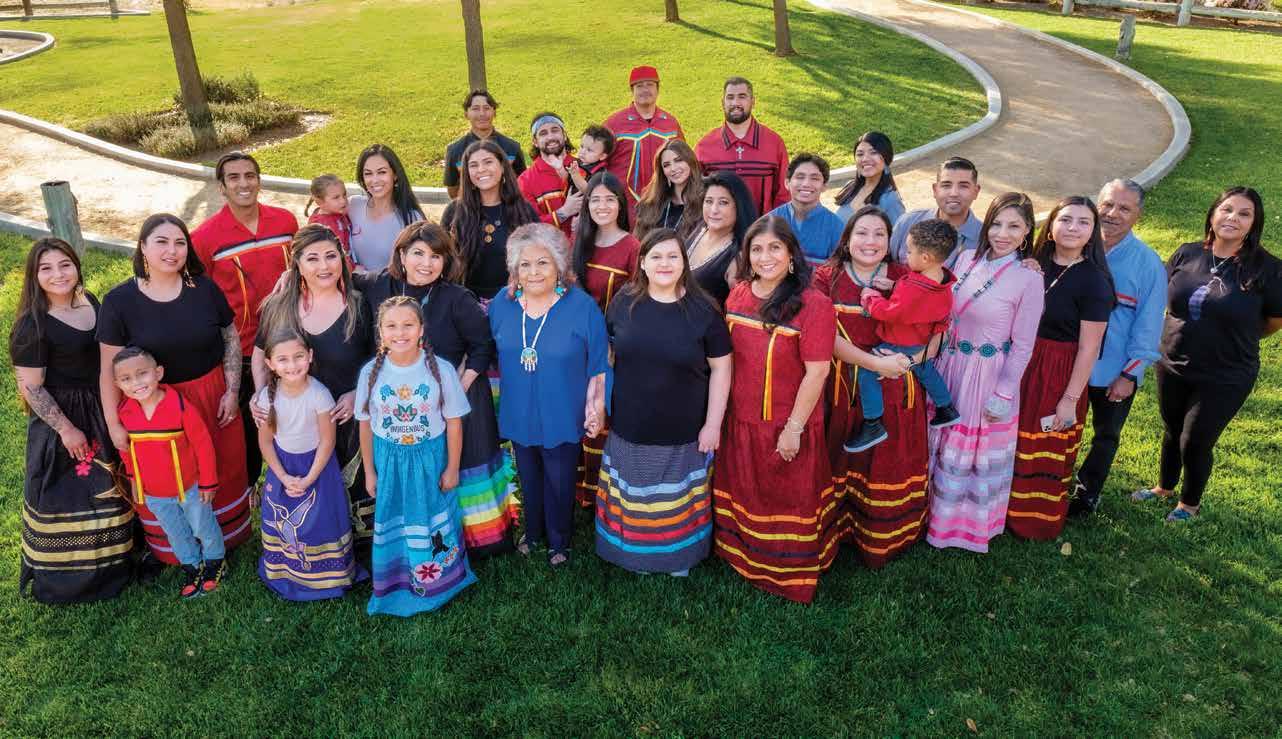
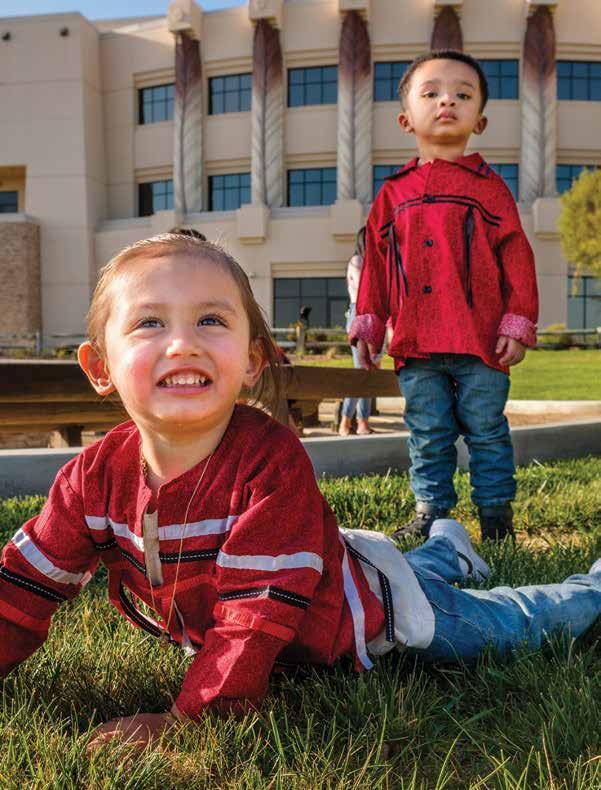

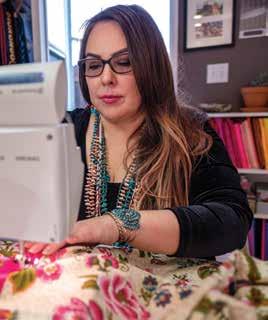
Master of Her Craft
Working in her artist studio, Navajo artist Bridgid Pulskamp quietly works on custom pieces for Southern California Native American tribes, including ribbon shirts and skirts for tribal citizens of the San Manuel Band of Mission Indians. “This is a way to connect with our ancestors through art, wearable art.” Pulskamp takes pride in her work and sees value in carrying on the tradition of regalia making. She wants to help erase the myth that Native Americans are stuck in the past. “A lot of people think our culture is stagnant. It’s important to remember: our culture is living and breathing, just as we are,” Pulskamp said.
RO D
to POSPERITY
How tribal gaming brought the San Manuel people out of poverty and helped them enrich their community and beyond
By Theodor P. Gordon, Ph.D
Before the humble bingo hall and the bustling casino, the people of the San Manuel Reservation relied on low-paying day labor and charity to make ends meet. “Financial resources were limited, but there was never a shortage of food, shelter or the love and caring that bonded our families,” Chairman Ken Ramirez explained. “We learned as children about our history, our relationships with other tribes, our culture and values, including Yawa’, which is the foundation for our philanthropy today.”
Yawa’ means to act on one’s beliefs and a core belief of the Tribe is to support and care for its community in any way they can. But by the mid-19 th century through the late 20 th , caring for themselves and those around them was difficult.
Former Chairwoman Lynn Valbuena explained that while the reservation was her childhood playground, rich with areas to explore freely, they were constrained by poverty. “We would wait for welfare trucks to drop off canned food and powdered milk,” she recalled.
In fact, the only way the San Manuel people could raise funds was through bake sales, which never came close to providing the resources they needed. Overcoming the limitations of poverty to be able to help themselves and their community would take decades of hard work and ingenuity.
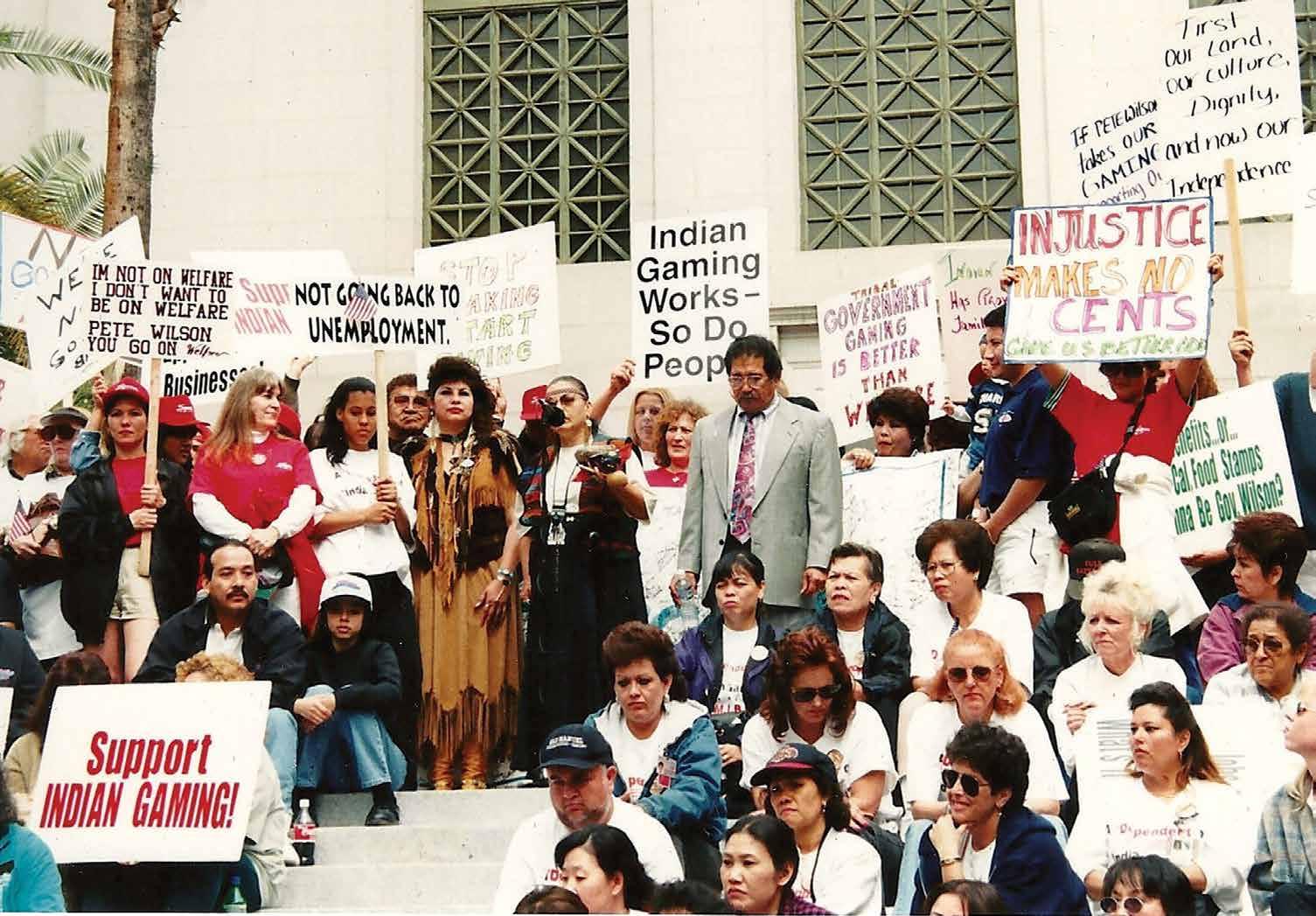
The people of San Manuel are Yuhaaviatam, the People of the Pines. Their clan home was in the Big Bear area. Serrano people are the original stewards of the San Bernardino Mountains and valleys as well as a large portion of the Mojave Desert.
When California became part of the United States, it declared war against Indigenous people. In 1866, a militia raided the San Bernardino Mountains with the goal of exterminating every Native inhabitant.
Santos Manuel, leader of the Yuhaaviatam, led his people out of harm’s way, settling in the southern foothills. They established a village just outside the city of San Bernardino. In 1891, the United States formally recognized their village as the San Manuel
Reservation, named after Santos Manuel. With only a few hundred acres of dry foothills, it pales in comparison to their vast and varied ancestral homelands.
When the United States took their land, it took their lifeblood. Most governments tax income and property to pay for services. But the tribal government faced a catch-22: without much land or personal wealth, there was no tax base and without tax revenue, they couldn’t provide services needed to help their community succeed.
The Tribe patched together its budget through a combination of small donations from tribal citizens, grants and bake sales. But they still didn’t have the resources to be self-reliant, let alone to help others –as was (and is) integral to their culture.
“We learned as children about our history, our relationships with other tribes, our culture and values, including Yawa’, which is the foundation for our philanthropy today.”
Aglimmer of hope appeared in the early 1980s: then-tribal Chairman Henry Duro learned that the Seminole Tribe of Florida found success in hosting bingo to raise revenue. As a tribal government, the Seminoles had the legal authority to establish their own bingo enterprise.
Duro collected newspaper articles on the Seminoles and shared them with his community. “It really had to be everyone’s decision; it couldn’t be just mine to pursue bingo,” recalled Duro.
With his people’s support, Duro and San Manuel’s Business Committee traveled to Florida to observe Seminole bingo in action. He was awestruck. The immense bingo hall was filled with busy tables; the walls were lined by guests eagerly waiting for a seat to open. They flew home knowing that bingo could secure prosperity, but that it would be a long road. They first needed to understand the bingo industry. Then they needed the money to build and run the bingo hall. And they needed to vet partners. When San Manuel Indian Bingo opened in 1986 they were overwhelmed with the community’s support as guests streamed in.
Tribal citizens put in long hours ensuring it ran smoothly. “I would come home each day from my job as a police assistant for the San Bernardino Police Department, change uniforms and start my shift supervising the counting room for the bingo hall,” Valbuena said.
The 1980s were a time for growth and risks for San Manuel – and other tribal governments venturing into gaming. To the east, the Cabazon Band of Mission Indians was fighting an attempt by Riverside County to shutter their card club.
In 1987, the Supreme Court ruled in favor of Cabazon, recognizing that tribal governments can legalize and regulate gambling on their reservation lands. The next year, Congress passed the Indian Gaming Regulatory Act (IGRA), but it had limitations and constraints. IGRA only allowed tribal governments to offer certain types of gaming, including slot machines and house-banked games such as blackjack, if tribes entered into a binding agreement, known as a compact, with the state. For San Manuel and others, the 1990s would be a decade-long struggle to secure compacts. Then-Governor Pete Wilson refused to negotiate, so San Manuel launched its casino in
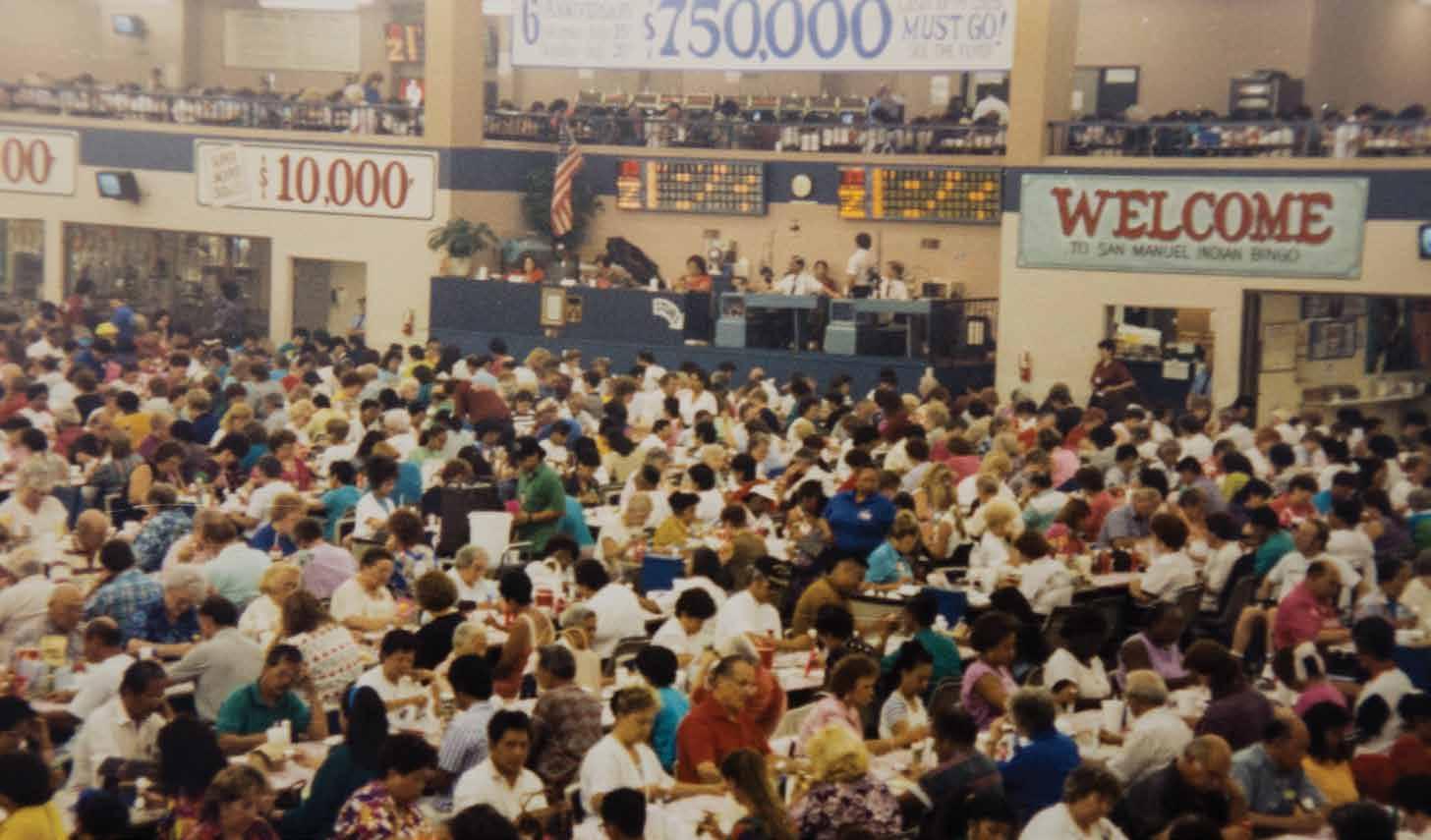
1994 without a state compact.
Wilson insisted that one compact serve as a model for all tribal governments in California, ignoring the diverse needs and goals. He threatened to send law enforcement to shut down tribal casinos, but San Manuel knew it was worth the fight.
Facing a governor unwilling to negotiate, San Manuel joined a coalition of tribal governments to take the issue of tribal gaming directly to the people of California. They gathered the signatures needed for tribal gaming compacts to become a ballot measure, giving California voters the final say. The ballot referendum became known as Proposition 5.
Ramirez, Valbuena, Duro and other tribal leaders traveled across California to educate the public. In 1998, Proposition 5 passed by a 63%-37% vote. A few months later the Supreme Court of California ruled Proposition 5 violated the state constitution. Tribes would need to petition for another ballot measure, Proposition 1A, which would amend the constitution to permit tribal gaming compacting.
In 2000, voters passed Proposition 1A by an even wider margin, 65%-35%. Reflecting on the victory, Duro said, “Never in my lifetime would I imagine so many people would come together to

support us.”
Even with the compact secured, other threats remained. The Metropolitan Water District of Southern California drilled a pipeline underneath San Manuel. Not only did the Tribe challenge the legality of the pipeline, it drained a core component of San Manuel’s self-reliance: access to their own water. San Manuel sued the district and won. The fight was a stark reminder that many government officials still lacked respect for tribal governments.

“Never in my lifetime would I imagine so many people would come together to support us.”
Deron Marquez, Ph.D – who became tribal Chairman in 1999 – said, “I took over at a moment when gaming was synonymous with tribe.” The successes of gaming meant that the public saw San Manuel not as a tribal government but as a casino-driven enterprise.
There was concern that the misrepresentation could lead to ill-informed policymakers intervening in the Tribe’s sovereignty. Under Marquez’s leadership, San Manuel began a public education campaign showing that they were first and foremost a tribal government, engaged in securing water rights, developing a fire department and building their nation. Gaming was just one of many tribal government activities.
According to Valbuena, the Tribe built relationships with the local community and surrounding cities through outreach and town hall meetings. They kept communication open with neighbors so there were no surprises. And they helped a struggling city to flourish, creating economic opportunity for all who live and work there.
Describing San Manuel’s efforts, Marquez said, “We simply refused to allow local politicians and residents to define us; we engaged and negated their claims, stood in the fire and never blinked.” Much of his outreach focused not on advocating
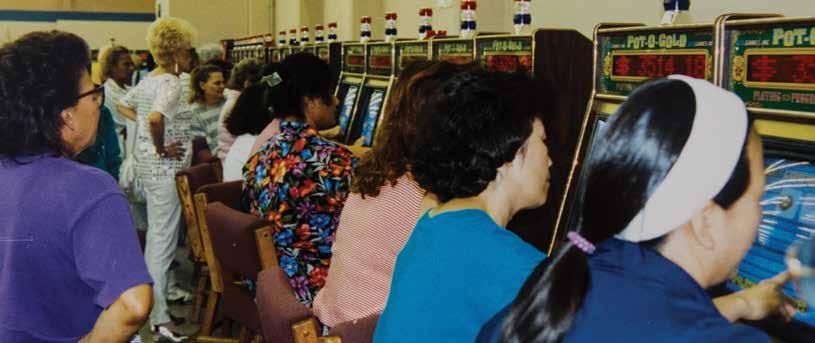
for policies, but on educating others about the benefits of letting tribal governments make their own decisions.
This drive to serve and educate the public created an unforeseen benefit: the Tribe established a wide range of partnerships with educational institutions. For more than 20 years, San Manuel has hosted the California Indian Cultural Awareness Conference at CSU San Bernardino, bringing thousands of teachers and students across the region for a celebration of California’s Indigenous heritage.
The Tribe has also partnered with San Bernardino Community College District to launch First Nations Experience (FNX), the nation’s first television station dedicated to Native American and World Indigenous content. For Ramirez, FNX fills an important need. “Conventional media have not been inclusive of Indian Country and FNX is beginning to serve a key role by improving communication among Indigenous communities and increasing Native representation,” he said.
San Manuel continues to expand its partnerships with institutions, including the Autry Museum of the American West, University of Nevada, Las Vegas (UNLV), CSU San Bernardino, University of Redlands, Claremont Graduate University, Arizona State University and Northern Arizona University. Ramirez explained, “Education is a key building block to the future of our citizens. Every nation needs an educated citizenry to progress in a world that is increasingly more competitive than ever before.”
Ultimately, tribal gaming allowed San Manuel to be self-reliant again and, in turn, to practice Yawa’. “Caring for one another is one of the basic values that enabled our community to survive and grow,” Ramirez said.
Because of gaming, and the prosperity it has created, San Manuel was able to build a world-class fire department that responds to emergencies across the region; provide supplies to local schools; help other tribes across the nation through their charitable giving; and create food security for families in need through the tribal citizens’ donations.
The prosperity also has allowed the Tribe to help itself out of the poverty that plagued them since the mid-1800s. And while they have come a long way, Lynn Valbuena says words of wisdom from their elders are always in the forefront of tribal citizens’ minds: “Never forget who you are or where you came from.”
But the people of San Manuel are looking to the future as well.
“Caring for one another is one of the basic values that enabled our community to survive and grow.”
“Universal among tribal nations is the concept of seven generations. It means we plan our growth today to positively impact generations yet to come. It also guides the expansion of San Manuel’s economic development well beyond the casino,” said Ramirez.
With this in mind, the Tribe has embarked on several lucrative business ventures:
In 2002, the San Manuel Bottled Water Group began production of Big Bear Mountain Premium Spring Water. And in 2008, San Manuel Village opened, a mixeduse commercial site two miles from the reservation that is home to one of four hotels owned wholly or in part by the Tribe.
Today, San Manuel Casino is in the midst of its biggest venture yet: the expansion of their operation to include more gaming as well as a resort, complete with luxury pool, spa and concert venue, ensuring prosperity for future generations.
On the Horizon Building a Future
San Manuel’s Youth Committee carries on the mission and values of the Serrano People
BY TERRIA SMITH
With an eye toward the years to come, San Manuel Band of Mission Indians actively instills into the younger generation the Tribe’s most important values: generosity, culture and leadership.
And nowhere is this clearer than in the San Manuel Youth Committee, where each meeting begins with the recitation of the mission, values and vision of the Tribe.
“Serving on the Youth Committee, and all that it entails, is a way to give back to the Tribe, to repay it for the opportunities it has given me,” Youth Committee representative Nicole Fields said.
The seven members of the committee – all of whom are under the age of 20 – are tasked with continuing and advancing San Manuel’s legacy.
An important part of that legacy is charitable giving.
Most years, the Youth Committee raises money by making crafts and selling them at their booth during the annual San Manuel Pow Wow. Those earnings are then donated to the charity of their choice.
However, pow wow was canceled in 2020 due to safety concerns surrounding COVID-19.
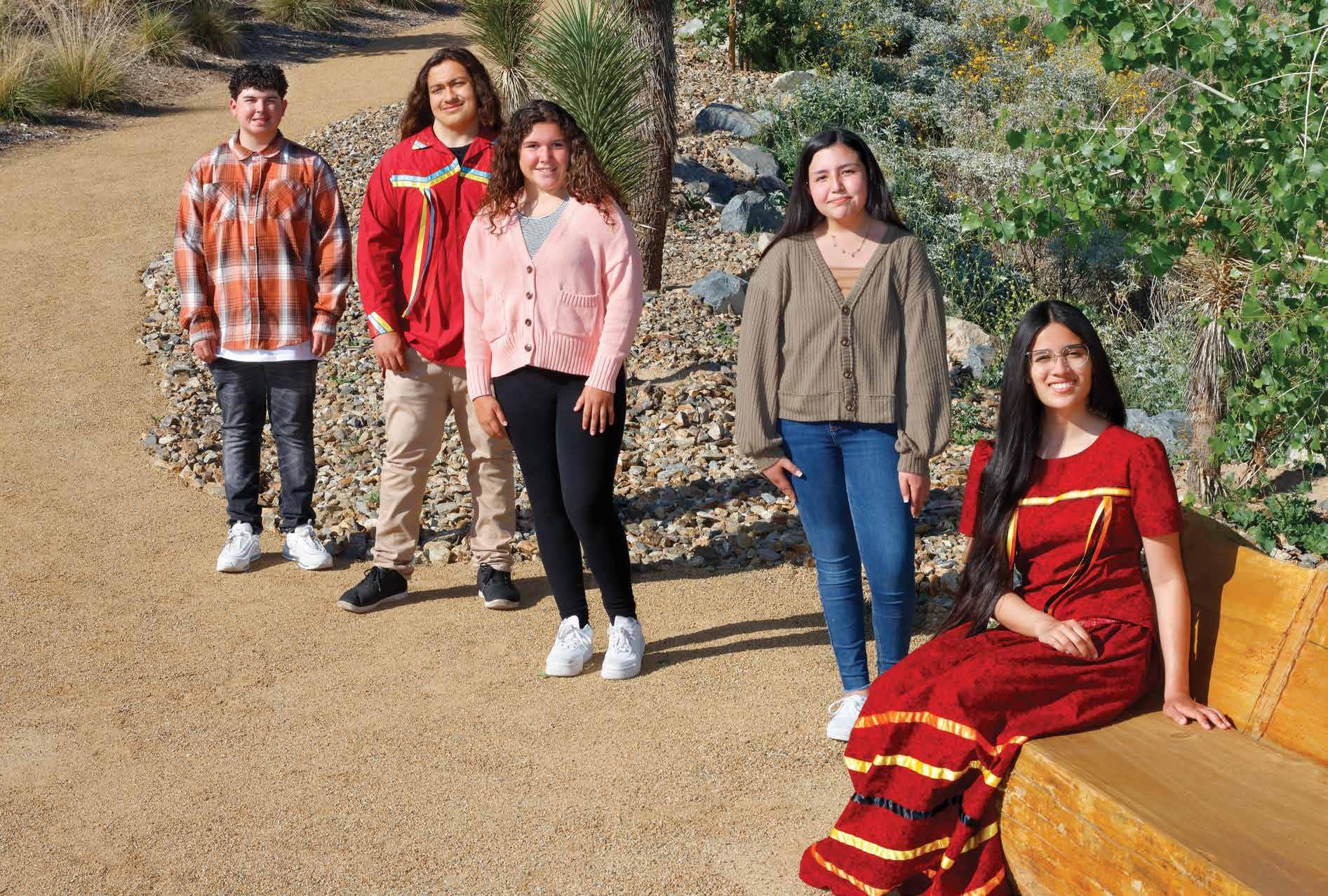
OUR MISSION
To promote our culture, protect our land, and sustain our tribal government through education for the advancement of our tribe and community.
OUR VISION
To honor our ancestors, culture and sovereignty for all generations.
OUR VALUES
Culture, Sovereignty, Unity, Education, and Spirituality
“Since there wasn’t a pow wow and the Youth Committee couldn’t raise money like we usually do, we did a Halloween movie night,” Youth Committee representative Presley Calderon explained. “All proceeds from that event went to the Pink Ribbon Place.”
The Pink Ribbon Place – a nonprofit organization in Riverside – offers support to women battling cancer and their families by providing counseling and health and wellness workshops as well as facilitating support groups.
In addition to helping the local community, the committee helps other tribes throughout
the country.
This past fall, the Youth Committee coordinated a winter clothing drive at the suggestion – and with the help – of Destiny Manzano, another young tribal citizen.
The drive was for 1,500 fellow Native American youths living halfway across the country on the Cheyenne River Sioux Tribal Reservation in South Dakota. There the winters drop below freezing and the region receives nearly 40 inches of snowfall.
Upon learning that the young people walk to and from school, often without adequate cold-weather gear, the Youth Committee requested donations of

hats, gloves, boots, winter jackets and scarves. They also asked for unwrapped toys for kids of all ages to bring a little joy for the holidays.
“Getting things together was very rewarding,” Nicole said. “Destiny and I were able to work together and get closer while we reached our common goal: to help other people.”
Through the generosity of the tribal citizens, the donations filled 65 boxes, which were collected at the Tribe’s Community Center and then shipped to the Cheyenne River Sioux Tribal Reservation.
Youth Committee Secretary Annabella Hernandez explained that carrying on this type of
work is a priority. “Continuing to stand with others and raise our voices together to address needs is important,” she said.
Charitable giving is just one of the values the Youth Committee champions. They also learn tenets fundamental to the Serrano. One of these is cultural preservation.
“My culture and heritage are my identity, who I am, what I stand for and my pride,” said Youth Committee Chairperson Hawk Ramos.
Members of the Youth Committee take part in a number of activities surrounding cultural engagement – most notably, learning their
Serrano language.
“I think it’s really cool that we’re all learning the language,” said Nicole. “It will carry on for future generations.”
At one time, there were only two people who spoke the Serrano language. Today, there are more than 70 tribal citizens who participate in the language-learning program.
“I love learning about our history and our culture,” said Annabella. “When we grow older, we’ll be able to teach the language to our own grandchildren. Even now it’s becoming more common.”
Along with language, leadership is passed down from generation to generation. In fact, for some of the Youth Committee, it is a part of their lineage.
Some have parents who have served or currently serve on the Business Committee – the leaders elected to govern the Tribe – and others have parents who serve in other leadership capacities. And collectively, the Tribe has been a leader in Indian Country for decades.
In the most fundamental sense, members of the Youth Committee are being prepared for the roles they may one day choose to take in tribal government. Here they experience how to define a common goal and work together toward the good for all.
“The committee is a way for the young people to get involved,” Presley said. “It’s a way to do what’s best and what’s right.”
When asked what leadership meant to him, Vice Chairperson Gauge Hernandez said, “It means to take action, to inspire people to change for the better, to encourage them and the community.”
As long as there are young people dedicated to seeing the Tribe move forward in its success, San Manuel Band of Mission Indians’ future will continue to be bright.
In the short term, Hawk said he would like to see kids younger than him take on leadership roles as well.
“I hope the next generation of our Tribe can see what we’ve done and continue where we left off,” he said.
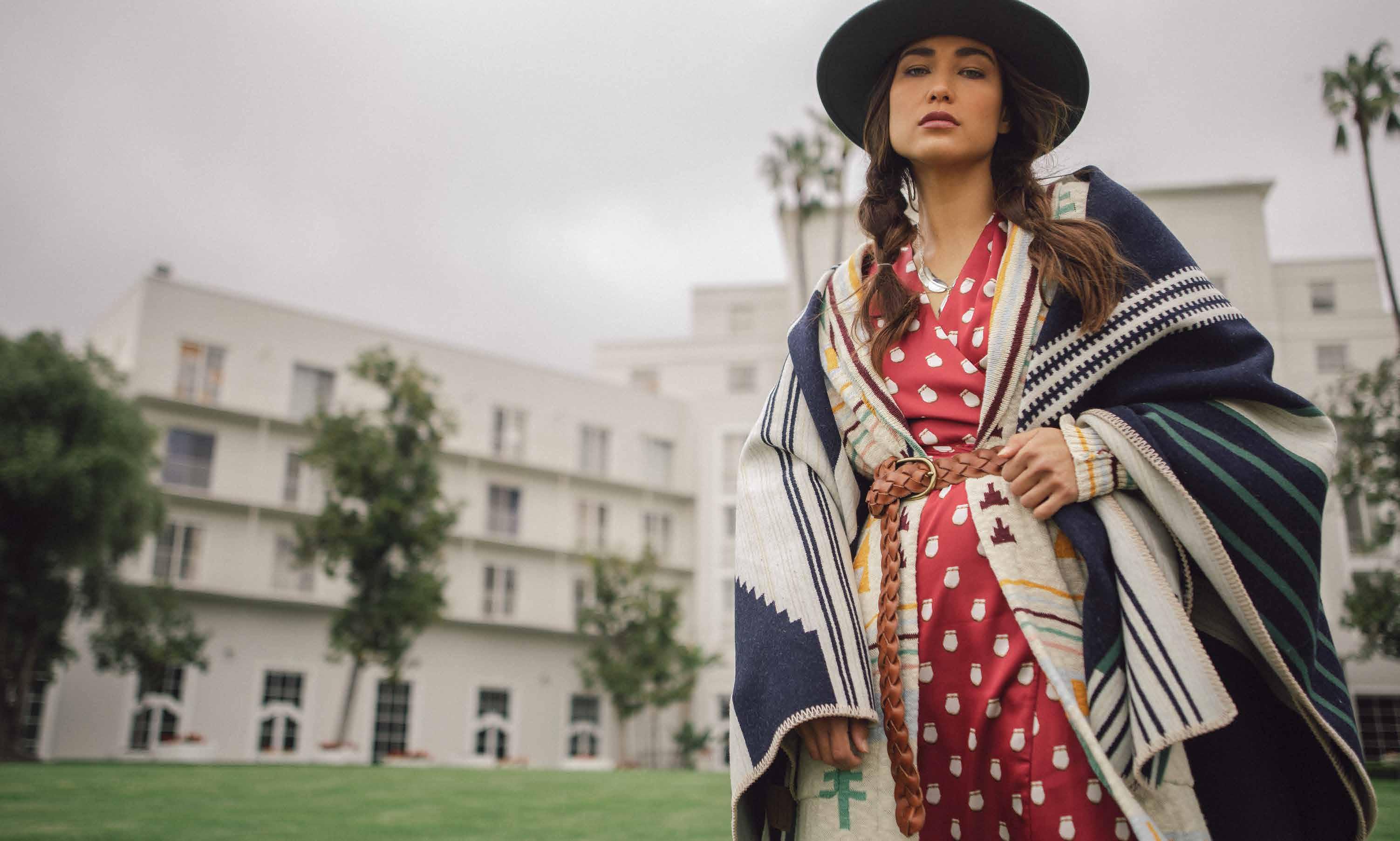
Style
Significance + THE INTERSECTION OF
PHOTOGRAPHY
BY ROBERT JOHN KLEY
When is a motif more than a motif? When it’s an ancestral pattern that tells the story – and shares the history – of a people. In the following pages, discover the work of three Native designers who are reclaiming their motifs, reimagining their patterns and retelling the stories of their ancestral lands.




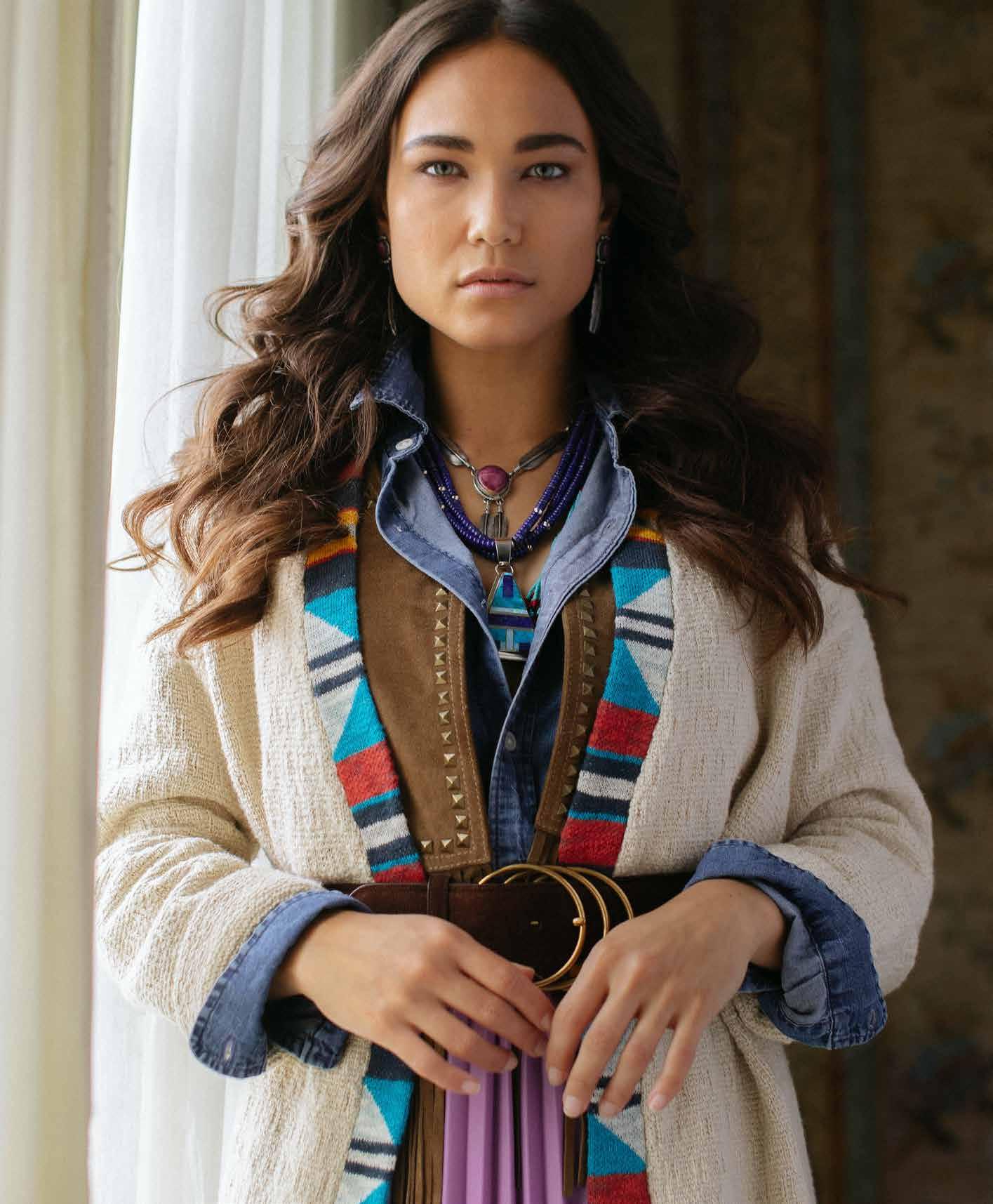
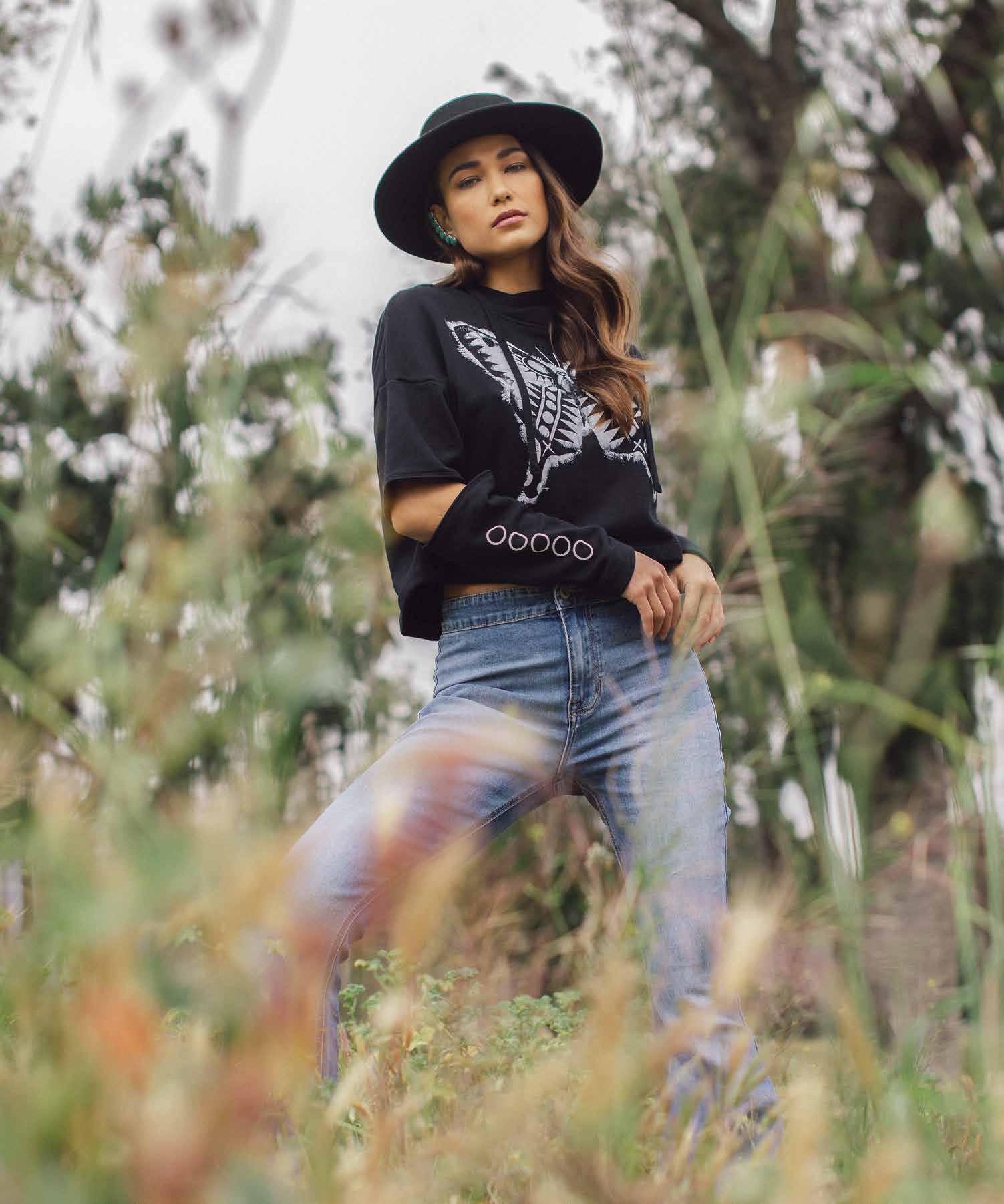
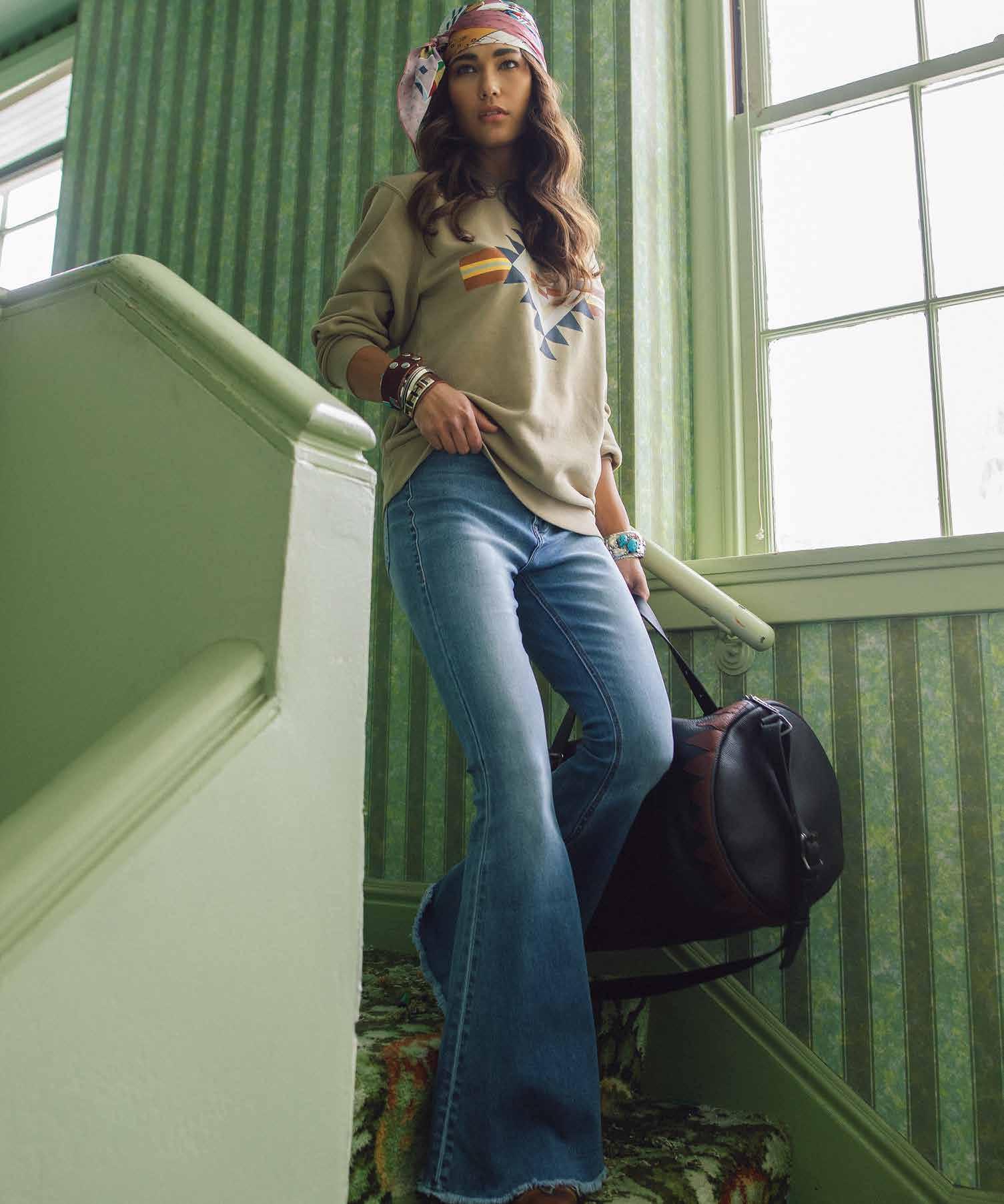


All Thrill®. All The Time.


Together
CELEBRATE p44 PHILANTHROPY p50 PROTECT p56
PARTNERSHIPS p60 FAMILY p66 HELLO p68

Our people make us great. In this section, we tell the story of the those who helped the Yuhaaviatam over the decades –and how the Tribe repays this kindness. We also meet the first responders who safeguard our communities, the tribal citizens who celebrate our culture and the team members who help us thrive.

HEARTBEAT People of our HEARTBEAT People
ENTER INTO A THRIVING CULTURE THROUGH THE SAN MANUEL POW WOW
Rain began to fall over the San Manuel Pow Wow grounds, threatening to muddy moccasins and dampen regalia. Thunder boomed like a big drum. Dancers and bird singers left the floor to seek shelter from the downpour. >
BY RICHARD ARLIN WALKER

The Serrano people had been through storms far more menacing: an unratified treaty, loss of land, displacement, the Termination Era. And yet the culture survived.
“Our land got smaller and we got pushed off,” said Tom Ramos, who with his late cousin Cruz Chacon founded the San Manuel Pow Wow 25 years ago. “Our bears became extinct. We’ve had other things that have disappeared, other animals that are no longer here. But slowly enough – as we hear up north, the wolves are starting to make their way back – the world has a way of healing itself. It lets us know that we’re not in charge. So always keep that in mind and move forward. We’ll weather the storm.”
On this day, as rain fell on San Manuel Stadium, Ramos saw something that symbolized the strength that had carried the people through those tumultuous times: an elder from Cahuilla put on her shawl and walked out into the arena. She didn’t flinch as lightning tore across the sky. She stood there as if to say, We’ve faced all the storms that have come our way and we’ve always come through
About 100 people joined her in the arena: dancers and bird singers from Cahuilla, Mohave and Kumeyaay, from Torres Martinez and the Colorado River Tribes. “We sang for almost three hours,” Ramos said. “There was a lot of power in that moment and that time. It’s something we’ll talk about for years to come.”
The San Manuel Pow Wow, which takes place in October, has proved powerful in so many ways –as a showcase of Indigenous cultures, as a symbol of Indigenous resilience, as a builder of bridges between Native and non-Native communities and as a reflection of the generosity of the San Manuel people.
The pow wow is free and open to the public. San Manuel feeds all dancers and singers over the course of the three-day gathering. Dancers and drum groups pay no entry fees and prize money is generous. Vendors pay no booth fees.
“Some of the elders that have passed on now, one of the things they pressed upon us is to always treat other people with respect and they’ll give you respect,” Ramos said.
“They told us, ‘You’re not someone looking in from the outside; you’re on the inside with everyone else. You have first-hand knowledge of what our struggles are.’ We could charge someone a fee to have a booth, but we know what they have to go through to make a dollar, so we’ve kept to the elders’ teachings.”
In other words, a rising tide lifts all boats. To understand why that teaching is so important to the San Manuel Band of Mission Indians, one must understand just how far they’ve come.

The Yuhaaviatam people lived and thrived since time immemorial throughout the highlands, passes and valleys of the San Bernardino Mountains. In the 1850s, they and other Indians in California signed a total of 18 treaties with the U.S. government, making millions of acres of land available for non-Native settlers. But the U.S. Senate failed to ratify those treaties, rendering the First Peoples – including the Yuhaaviatam – landless.
In 1891, U.S. President Benjamin Harrison ordered 657 acres north of San Bernardino returned to the Yuhaaviatam people for their sole use. The reservation was named San Manuel in honor of Santos Manuel, the prominent Yuhaaviatam leader. But the U.S. government’s assault on Indigenous identity and sovereignty would continue in the century to come.
Children were sent to boarding schools. Native languages and religions were banned. The U.S. government began to end its relationship with the Indigenous nations with whom it had signed treaties. A federal relocation program lured Native people away from their homelands with the promise of jobs in urban areas. The U.S. government gave the State of California the power to assume criminal and civil jurisdiction over reservations, including San Manuel.
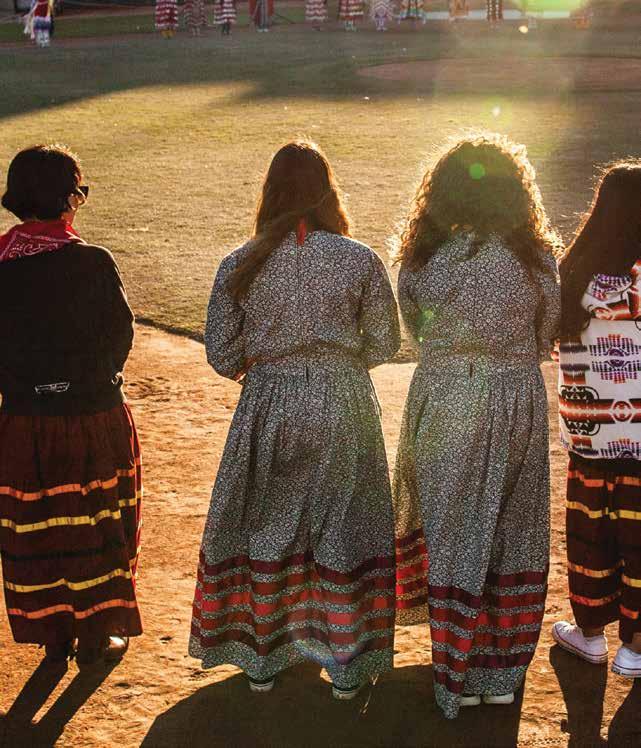
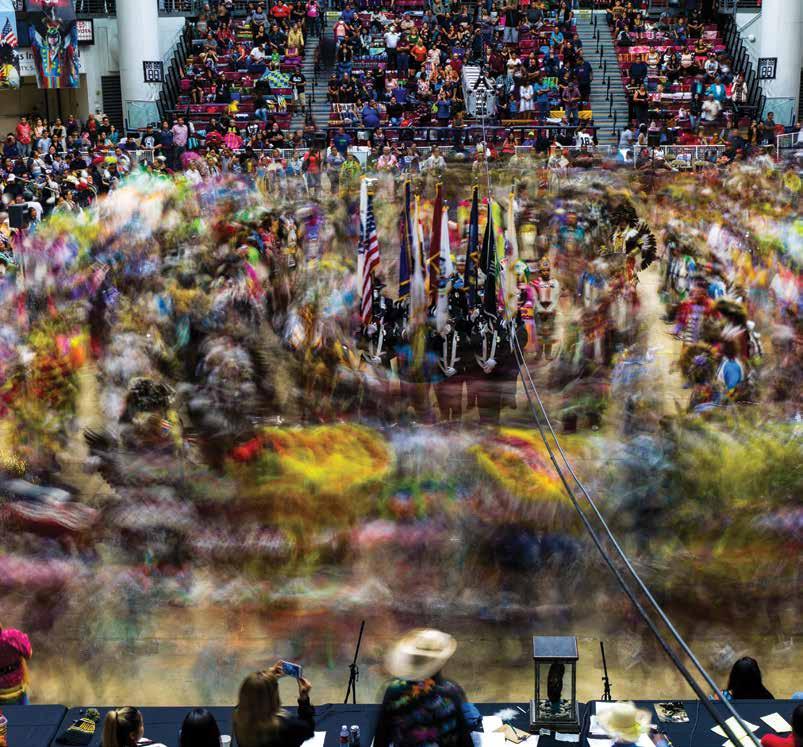

President Richard M. Nixon ended the disastrous Termination Era policies in 1970, ushering in a new era of self-determination and self-governance. The American Indian Religious Freedom Act followed in 1978, the Indian Gaming Regulatory Act in 1988.
Gaming operations regulated through the 1988 Act – first bingo, then casino gaming – provided the revenue that spawned more than 30 years of economic development and investment and made the San Manuel Band of Mission Indians one of the largest employers in the Inland Empire.
All told, the band employs nearly 5,000 people. Its charitable giving includes $25 million to Loma Linda University Children’s Hospital; $9 million to the University of Nevada, Las Vegas; and $600,000 – with the Morongo Band of Mission Indians – to a relief fund established after a domestic terrorist shooting in San Bernardino that claimed 14 lives.
But the annual San Manuel Pow Wow, which first took place in 1996 as the Tribe’s economic stature was growing, has had a large role in changing the local narrative about who the San Manuel people are, Ramos said. For thousands of people, the pow wow has been a doorway into a culture that they may have


lived near but did not know.
“At one point, it seemed San Bernardino was ashamed of who we are, ashamed that there is a reservation here. We went through many struggles just to have bingo,” Ramos said.
“Our pow wow has been an outreach to a lot of people in San Bernardino and the Los Angeles region – to let them know that San Manuel is here, that there is a reservation here, that we were very poor at one time but we found our way through that. We found success, but we keep one foot on the ground at all times. We all stick together to make our community a better place.”
Highland Mayor Penny Lilburn said the pow wow has dispelled stereotypes and given the San Manuel Band of Mission Indians a platform through which
along the way they have been diligent about teaching the culture as well.”
AN EMPOWERING EXPERIENCE
Cousins Shila Chacon and Alyssa Guerrero are two beneficiaries of the elders’ teachings. They were born one year before the first pow wow. They are now part of the team that plans, coordinates and promotes the event.
“My grandpa’s generation did a great job of teaching all of us, because any time we had questions, they would share their knowledge, they would teach us the old ways and tell us stories that they were told,” said Shila, daughter of the late Cruz Chacon. “I think that’s kind of the only way we can do it, by doing the same thing.”
Cruz Chacon and Tom Ramos were traditional
It educates people of all ages on so many levels. To see people at the pow wow want to engage with the culture is really nice to see.
they can tell their own story.
“It educates people of all ages on so many levels,” Lilburn said. “To see people at the pow wow want to engage with the culture is really nice to see.”
Lilburn said the pow wow is an example of the generous and welcoming spirit of the San Manuel people. “They’re very generous and they are very good at giving,” she said. “They have been displaced and they have worked hard to get where they are, yet
dancers in their 20s, traveling to different pow wows. San Manuel had hosted local fiestas, but not a regional pow wow. “They felt they needed to bring that to our tribe. It was something they became very passionate about,” Shila said.
Shila danced jingle dress at the pow wow beginning when she was three and traveled the pow wow circuit with her family, helping to spread the word about San Manuel’s event. “I have memories of going to pow
wows in Santa Barbara, in Arizona and New Mexico and passing out flyers,” she said.
The San Manuel Pow Wow grew to be one of the largest in Southern California, with 475 dancers, 80 vendors and more than 20,000 visitors over three days. It last took place at San Manuel Stadium, home of the Inland Empire 66ers, the minor league baseball team.
“I remember being eight or nine years old and being so inspired by the pow wow,” Shila said. “The fact that I’m working on it now, as I’m older, I think my
I remember being eight or nine years old and being so inspired by the pow wow. The fact that I’m working on it now, as I’m older, I think my younger self would be pretty happy with that. I only see it inspiring more younger people.
younger self would be pretty happy with that. I only see it inspiring more younger people.”
And so it is.
In 2019, eight Serrano teens organized the Red Jingle Dress Special Dance to call attention to Murdered and Missing Indigenous Women and People. Each jingle cone on each dress represented a prayer.
The teens had attended a youth conference where they learned about the issue of Murdered and Missing Indigenous Women and People. “They said, ‘Why don’t we do something about this issue? Why don’t we
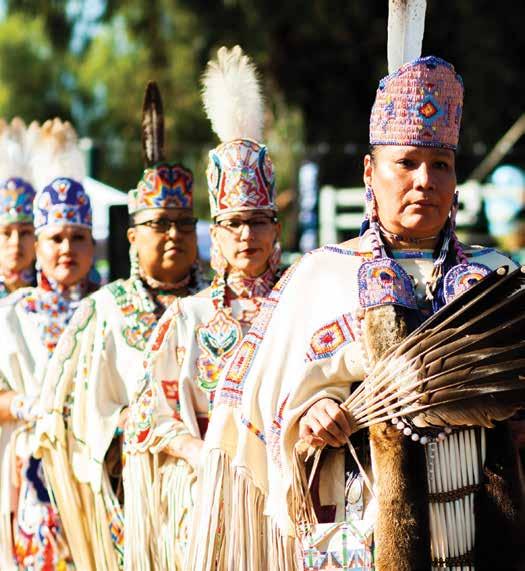
use our voice?’,” Shila said. “They brought it up to the pow wow committee. And we said, ‘You know what? You’re right, let’s do it.’ That’s what it takes – being full of your culture, being proud of your culture, always willing to learn but always being willing to share.”
The pow wow takes place over three days: noon to midnight Friday and Saturday, and noon to 6 p.m. Sunday.
Shila and Alyssa’s ancestor, Santos Manuel, looks over the pow wow grounds from a large banner bearing his image. The arena is sacred ground; an elder offers a prayer and sage in a closed ceremony on Friday. Then, at noon, the grand entry: an honor guard
of Native military veterans carries the colors, followed by a procession of pow wow participants in beautiful, elaborate regalia: bird singers and fancy dancers, gourd dancers and grass dancers, jingle dress dancers and other northern and southern styles. Contest, exhibition and intertribal dancing takes place on the pow wow floor until midnight. San Manuel Casino’s food and beverage service feeds dancers, drummers and singers at no cost all three days, although other foods can be purchased at vendor booths.


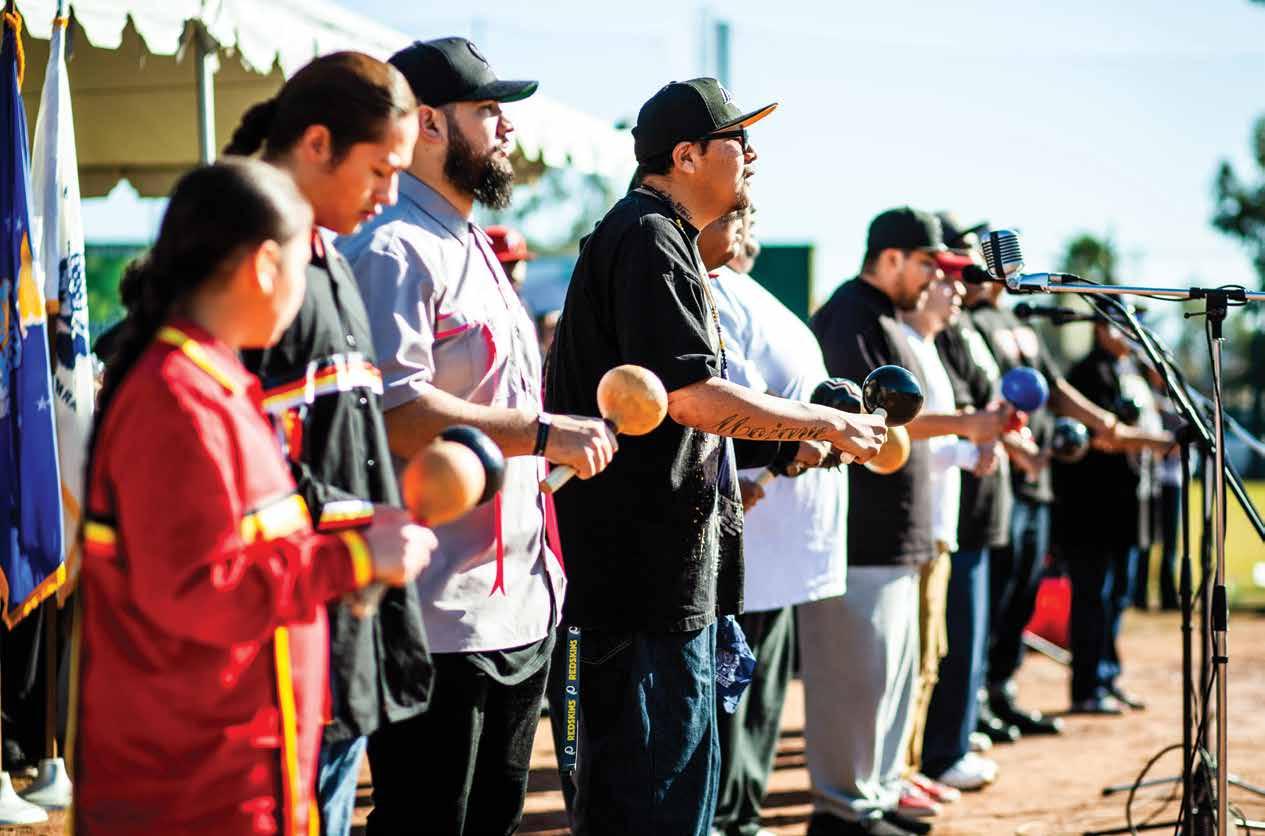
Saturday draws approximately 13,000 visitors, the most of the three days, Shila said. The day features exhibitions of gourd dancing, bird dancing and bird singing; contest, exhibition and intertribal dancing; and an audience participation dance, in which all members of the audience – Native and non-Native –are invited to go out onto the floor.
Sunday, the final day of the pow wow, features exhibitions of gourd dancing, bird dancing and bird singing; followed by contest, exhibition and intertribal dancing. This is the last opportunity for the competitors to impress the judges; after the final round, the judges’ votes are tabulated, the winners announced and prizes awarded. The pow wow concludes with a formal spiritual closing ceremony.
Guerrero said planning for next year’s pow wow begins as soon as the current pow wow is wrapped up. The planning committee meets throughout the year: vendors are confirmed, food and beverage services are reserved and volunteers are scheduled. Most volunteers are students from California State University, San Bernardino.
Much of the pow wow set-up is seamless. “We’ve used the same vendor, a party rental place, for years, so they already know what to do – where to place the tents, where to place the booths,” Guerrero said. “We use the same crew and everyone knows what to do. You don’t have to go over it again. They’re like, ‘I got you,’ and everything’s there.”
After attending the pow wow, people always want to come back. They tell me they felt a connection – When I hear that drum, I feel something.
Guerrero said. “It lets us get down to the core of who we are, that we respect our culture. It’s a platform to show people who San Manuel really is, besides the casino and the developments we have done. It’s more about staying humble and sharing our beliefs. I feel like when you’re there, you feel the love. When you’re there, you see everyone just connecting.”
Visitors have told Guerrero that they were touched by their pow wow experience and want to return.
The most difficult challenge of pow wow planning: the weather.
“The weather is always something that is just crazy,” Guerrero said. “We’ve had rain, we’ve had fire, we’ve had floods and storms and winds. Two years ago, we had to postpone because the winds were so bad. The weather is so unpredictable. The day before it will be so beautiful and nice, then – whoa – something happened. That’s always a challenge.”
HEARTBEAT OF OUR PEOPLE
Many people in Highland and San Bernardino have visited or worked in a San Manuel business, or have a relative or friend who has. But it’s the pow wow, Guerrero said, that represents who the people are. The pow wow “is more than just an event,”
“After attending the pow wow, people always want to come back,” she said. “They tell me they felt a connection – When I hear that drum, I feel something And I say, you know, that drum is the heartbeat of our people. That is a feeling that you have to be there to experience.”
“And the singing – a lot of people don’t realize Native people are still out there singing, are still living their culture. A lot of people think there are no Natives out here. So when a non-Native person attends the pow wow, they get a whole new perspective of Native people and respect for our culture.”
Shila Chacon added, “Native history and culture are not taught in schools. Going to pow wows definitely opens up visitors’ eyes and normalizes a culture that isn’t normal to them.
It definitely shows that we’re still here, we’re keeping the culture alive. By hosting pow wows, we’re bringing people in. In a sense, it’s like reclaiming our land and reclaiming our culture.”
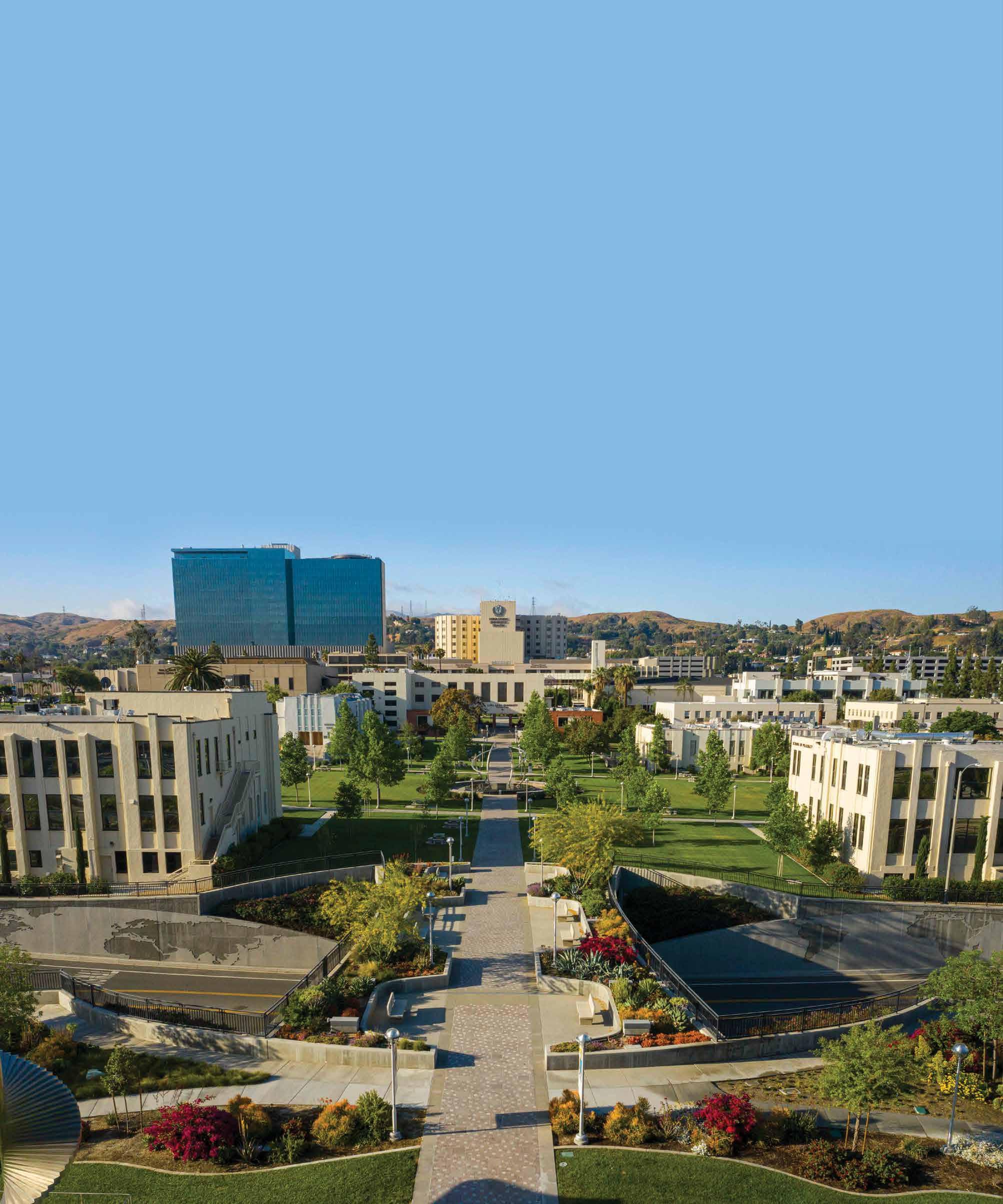
LIFTING ONE ANOTHER UP
HOW THE SAN MANUEL BAND OF MISSION INDIANS AND LOMA LINDA UNIVERSITY HEALTH HELP
EACH OTHER AND THEIR COMMUNITY THRIVE – FROM THE 1900S INTO THE MODERN ERA
BY MATT JACOB
Here’s the thing about long-lasting relationships – particularly those that span more than a century; with milestone events dotting a neverending linear continuum, it becomes increasingly difficult to pinpoint just one and say with absolute certainty, that’s the most significant.
Such is the case with the unique partnership between the San Manuel Band of Mission Indians and Loma Linda University Health, two historic institutions separated by roughly 10 miles in Southern California’s Inland Empire. Sure, you could go back to the very beginning, when an obstetrician whose unyielding compassion and determination to care for those who couldn’t care for themselves first linked the two entities in the early 1900s. Or you could land on the complete opposite end of the spectrum and focus on recent philanthropic gifts that have resulted in the San Manuel name being attached to multiple Loma Linda University Health buildings and initiatives.
Without question, this relationship wouldn’t be what it is today if not for those bookend milestones. And yet, when you widen the lens and take a broader view, you begin to realize the reason this particular partnership has endured has nothing to do with a single moment or achievement. Rather, it’s likeminded philosophies that have shaped the core values of both the San Manuel Tribe and the Loma Linda University Health community, guiding them along separate but parallel paths for multiple generations.
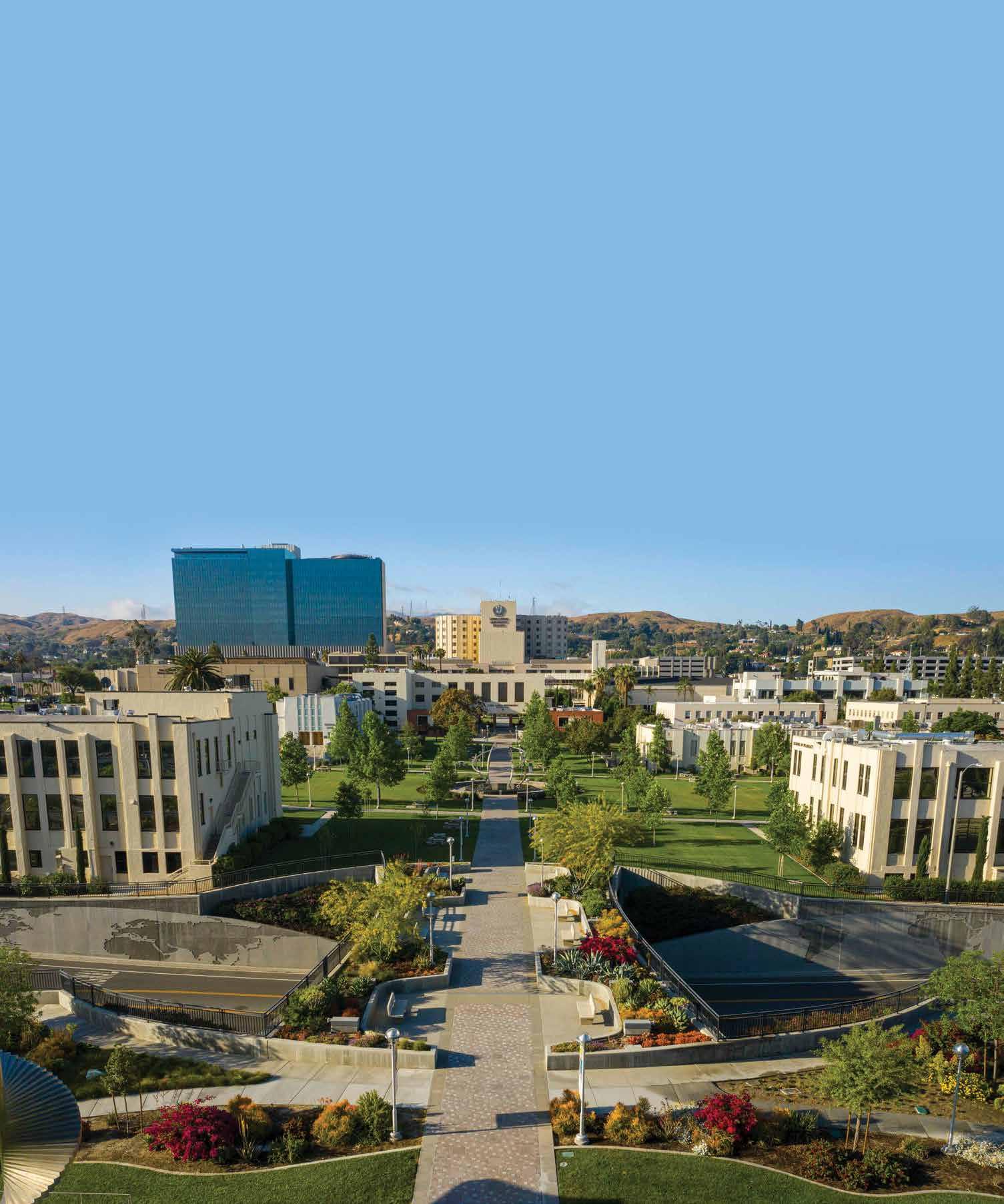
YAWA’ LIGHTS THE WAY
Long before a spectacular, Las Vegasstyle casino became the focal point of the San Manuel Reservation (and a symbol of economic independence), the Tribe and its people experienced hardships so significant that surviving from one day to the next was a primary goal. Despite this ongoing adversity, the Tribe held firm to the concept of Yawa’, which comes from Serrano Indian language and means “to act on one’s beliefs.”
the medical school’s faculty. Initially, George’s wife and fellow physician, Lyra George, remained in Tennessee with the couple’s three children. But as the hospital’s need for an obstetrician grew, Dr. Lyra George soon joined her husband in Loma Linda.
She had two primary duties: administer anesthesia for her husband (who was a surgeon) and care for expectant mothers. But when she learned of a nearby Tribe of Serrano Indians, one that lacked access to substantial medical care, Lyra George
“There are many traditional values that I learned growing up on the reservation, and one that has been a thread through multiple generations is Yawa’”
“There are many traditional values that I learned growing up on the reservation, and one that has been a thread through multiple generations is Yawa’,” said Ken Ramirez, Chairman of the San Manuel Band of Mission Indians. “This concept is the clearest statement that the Yuhaaviatam were people of action. That is, it’s not enough to just hold beliefs; you must act on those beliefs.”
Today, Yawa’ informs all of San Manuel’s philanthropic efforts. But around the turn of the 20th century, with the Tribe struggling, it had to rely on others “to act on one’s beliefs” for basic survival.

leapt into action – or, more accurately galloped. Traversing more than 10 miles by horseback across the valley, she regularly visited the San Manuel Indian Reservation to tend to pregnant women and provide additional medical care, often delivering babies by candlelight or lantern because the reservation
lacked electricity.
Besides her medical bag, George brought along students from both the nursing and medical schools. Those students assisted with patient care, and in the process received important hands-on experience. These visits continued for nearly two decades, during which time George’s mode of transportation eventually shifted from literal horsepower to figurative horsepower. After gaining access to a car, she would drive to the reservation and deliver babies under much better lighting conditions, thanks to a mechanism rigged to the car’s battery.
“When I was a kid, my grandmother and my Aunt Pauline always talked about Dr. Lyra and how she would come out to the reservation and deliver babies,” said San Manuel tribal citizen Alaina Mathews, Ramirez’s sister. “This wasn’t anything the Tribe solicited. It was simply a genuine desire to care for our people, and it’s something the Tribe and its leaders never forgot.”
Unwittingly, George and her nursing and medical students were following the tenets of Yawa’. They also were following a core mission that has defined Loma Linda University Health,
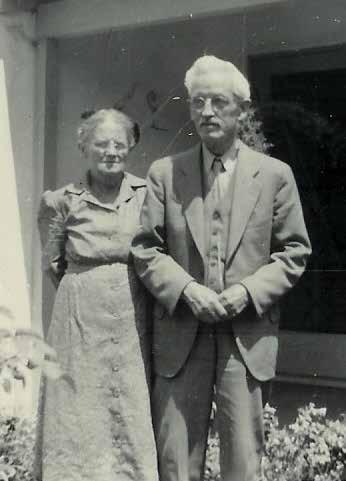
founded as a faith-based institution, which was to make man whole.
“When we see patients, it’s not just about caring for them physically,” said Randy Possinger, Executive Director for Philanthropy at Loma Linda University Health. “It’s also about helping them from a holistic perspective – mentally, spiritually, physically – so they can have the best possible quality of life.”
In other words, “to make man whole” is to Loma Linda University Health
Enter what was then known as Loma Linda Sanitarium. Founded in 1905 on the site of a failed resort hotel in what was then desolate San Bernardino, Loma Linda University Health opened its doors to care for patients and train healthcare professionals. Nursing was the first professional school, with the medical school following shortly after in 1909.
Two years later, Dr. William George moved West from Nashville to join
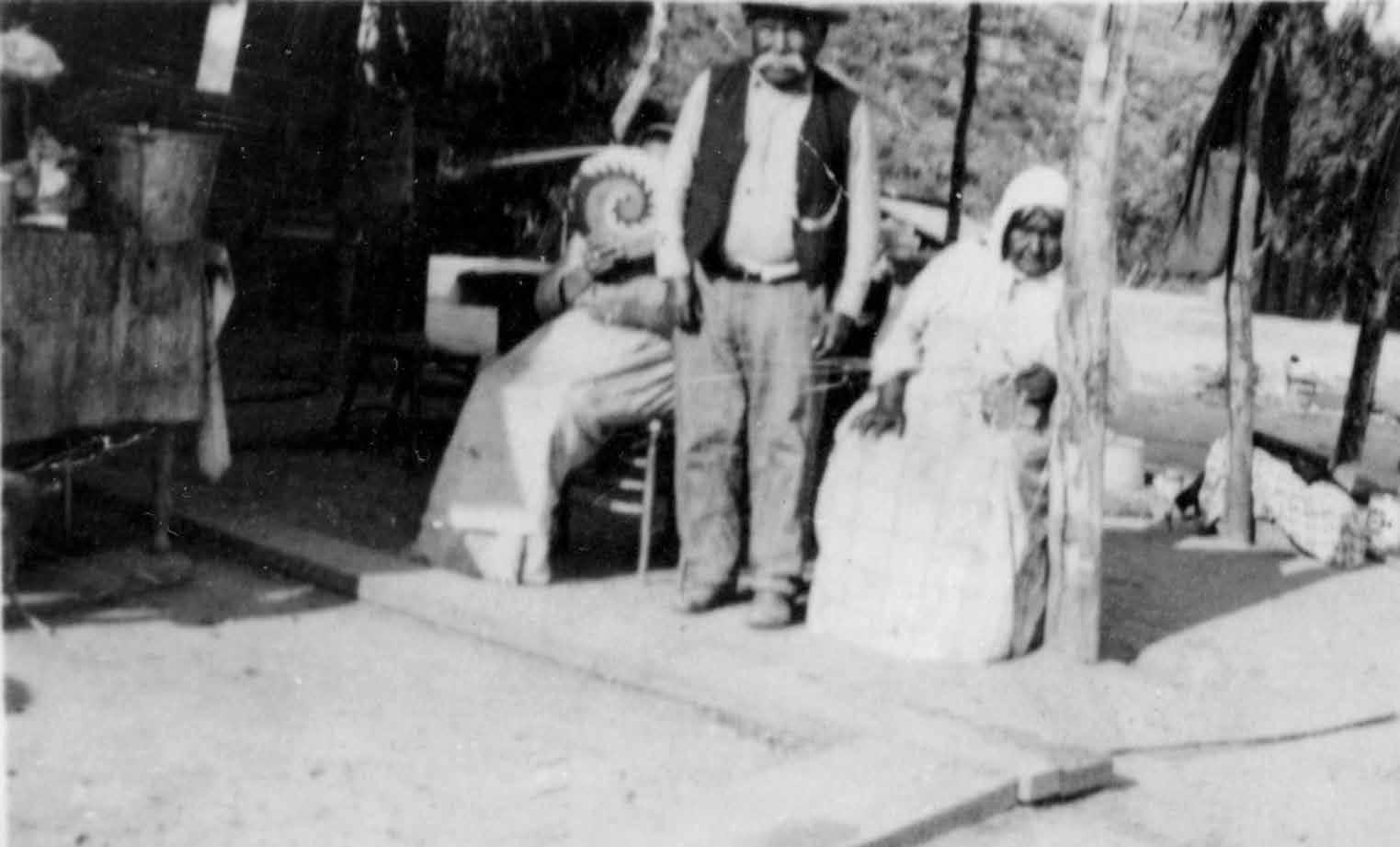
what Yawa’ is to the San Manuel Tribe.
“It’s basically the same thing, just in different languages,” said Dr. Richard Hart, President of Loma Linda University Health since 2008. “It’s that steadfast commitment to service that bonds the San Manuel Tribe and Loma Linda University Health.
“Through most of our shared history, the Tribe was the recipient of our services, with Dr. Lyra George being the most telling example. But in the last twenty years or so, as San Manuel has moved into the donor world, the relationship has become very reciprocal, and the obvious parallelism of our journeys has become so clear.”

‘THIS IS OUR HOME’
Looking back at the empathy Dr. Lyra George had for the San Manuel Tribe –and the overall good work Loma Linda University Health did in pursuit of its goal “to make man whole” – it’s easy to lose sight of the fact that the institution had its fair share of growing pains.
“We actually came from very humble beginnings, encountering a lot of challenges early on,” Possinger said. “It was the strong leadership of a few people who got us to where we are today. Same thing is true about San Manuel: humble beginnings, strong leadership and a commitment to community.”
For Loma Linda University Health, that commitment reached new heights in the late 1960s with the launch of Social Action Corps (SAC). The brainchild of concerned medical students, SAC provided quality healthcare to local underserved citizens, including migrant workers and Native Americans. Students volunteered in the evenings at makeshift clinics (including one in the basement of a Salvation Army church), offering free health services to those who couldn’t afford care through traditional means.
This outreach continued for nearly
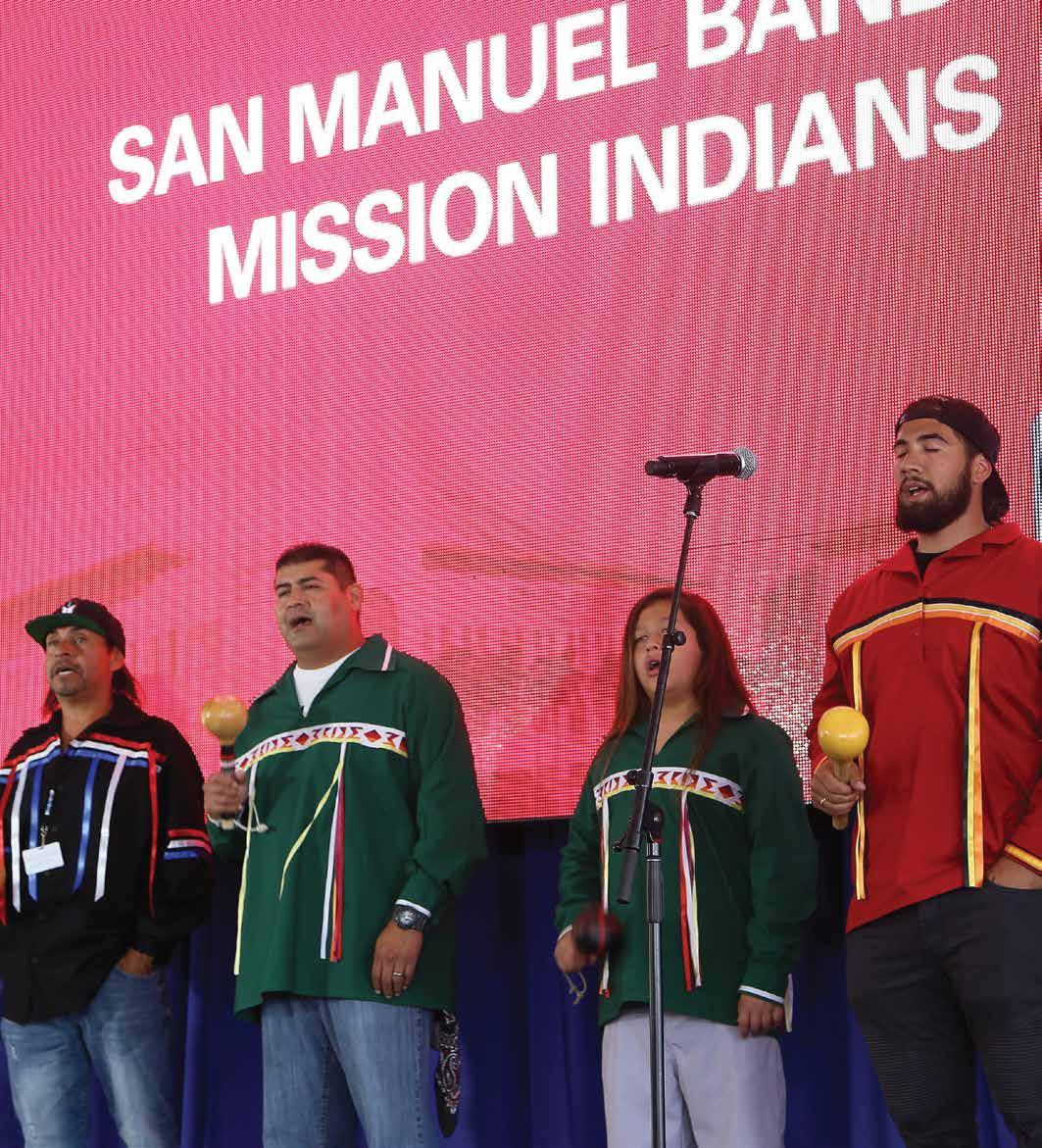
three decades until 1995, when Loma Linda University Health gained access to a 43,000-square-foot facility on 6.5 acres at Norton Air Force Base, which had closed the previous year. Upon moving into the new location, Social Action Corps was rebranded as the Social Action Community Health System (SACHS), which today sees as many as 200,000 patient visits annually.
Of course, SACHS is hardly the only chapter in a success story that – given those humble beginnings – almost reads like fiction. In fact, over the past half century Loma Linda University Health has set the standard for medical
care, medical education, community involvement and economic diversification.
Just as importantly, Loma Linda University Health’s growth has coincided with that of the area it serves, as the Inland Empire’s population now exceeds 4 million.
Among the eye-popping statistics:
• More than 100 education programs offered in a university setting that features eight healthcare schools, a combined 4,500 students and nearly 800 physician residents/fellows from around the globe
• Nearly 1,000 physicians in virtually every specialty and spread across six hospitals, including a comprehensive Cancer Center and the only Children’s Hospital and Level 1 adult and children’s Trauma Center between Los Angeles and Phoenix
• More than 1,000 hospital beds, which regularly serve patients from as far west as L.A., as far east as Arizona and as far north as Southern Nevada


“This is our home; it’s where we started,” Possinger said. “So we’re deeply invested in the growth and success of those who share that home with us. It’s our mission to help our citizens have the best possible quality of life.”
It’s a mission with which the San Manuel Band of Mission Indians can certainly identify.
OFFERING A HELPING HAND
If there truly is one specific milestone for the San Manuel Tribe that surpasses all others in terms of significance, it would have to be a date on the calendar: July 21, 1986. That’s the day San Manuel – following a sevenyear legal battle – opened its bingo hall, thus beginning the Tribe’s march toward economic prosperity.
The bingo parlor was the precursor to a card room, which opened in 1994 and was followed in 2005 by the casino.
As their financial standing improved, tribal leaders remained committed to the principles of Yawa’. And when it came time to put together a list of community partners with whom to spread some of their newfound wealth, those leaders couldn’t help but conjure the image of Dr. Lyra George trekking to the reservation on horseback to bring new tribal citizens into the world.
Naturally, Loma Linda University Health shot to the top of that list.
“While the Tribe’s relationship with Loma Linda University Health dates back well over a century, our capacity
PossAbilities, an outreach program Loma Linda University Health launched in 2000 to provide support and resources to those with permanent physical or intellectual disabilities. To date, nearly 7,000 individuals (including almost 1,000 veterans) have benefitted from the program.
The Tribe also was an early and consistent philanthropic supporter of Loma Linda’s Children’s Hospital, as well as its Cancer Center. In fact, in 2010, the Tribe raised the bar with a $3 million gift earmarked
space at the former Norton Air Force Base, the decision was made to build a new facility in San Bernardino. As the discussion advanced to consider how a new building could benefit the region beyond just medical care for the less fortunate, the outside-the-box thinking began.
“We actually came from very humble beginnings, encountering a lot of challenges early on. It was the strong leadership of a few people who got us to where we are today.”
to make meaningful charitable gifts is recent,” Ramirez said. “Following the establishment of the bingo hall, one of our earliest gifts was a major donation to the Ronald McDonald House, which serves Loma Linda’s patients. From there, our approach to developing a commitment to Loma Linda University Health was incremental; as our businesses grew, so did our ability to make substantial gifts.”
Substantial is putting it mildly.
In addition to the contribution to the Ronald McDonald House, San Manuel was a founding sponsor of
for the San Manuel Band of Mission Indians Medical Oncology Center and Biospecimen Laboratory. The facility within the Cancer Center supports patient oncology services and research while ensuring that comprehensive treatments are available for all types of cancer.
As the second decade of the 21st century dawned, the Tribe’s revenue streams continued to expand, as did its commitment to its longtime partner. Case in point: When Hart and his team determined about 10 years ago that the SACHS clinic had outgrown its
“We had decided to commit to San Bernardino, which at the time was a bankrupt city, and the question came up, ‘What does San Bernardino really need?’” Hart recalled. “Health care was absolutely essential, but by itself, it doesn’t break a city out of poverty. What was needed were meaningful jobs. At that point we thought, ‘Why don’t we add a third floor to this building for a Gateway College that would provide actual job-entry skills to high school graduates in and around San Bernardino?’”
After crunching the numbers, Hart knew he’d need significant financial support to take the Gateway College from concept to reality, so he reached out to his friends at San Manuel. After an initial presentation and a brief follow-up, the Tribe committed $10 million to the project, and the San Manuel Gateway College was born.
“It was not a tough sell,” Hart said. “They recognized the value of our long-time partnership. Plus, they realized that young tribal citizens, as well as other kids in the surrounding community, stood to benefit greatly.
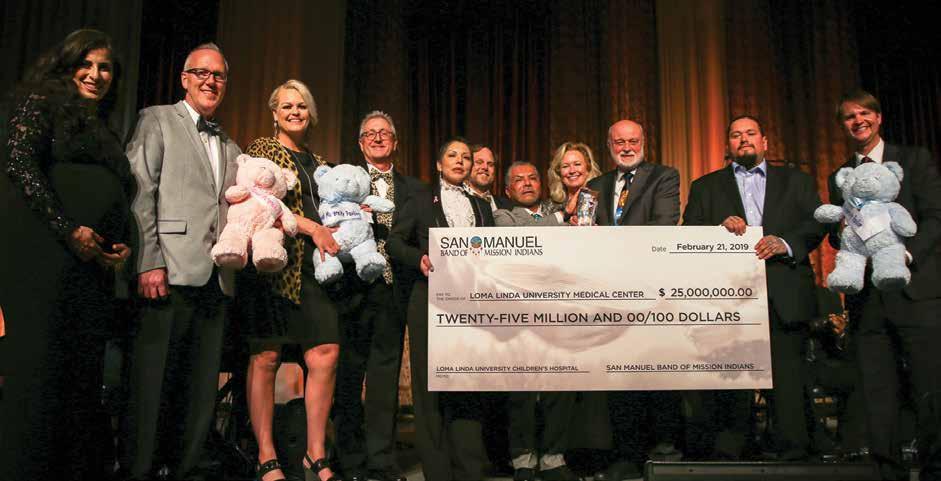
Their donation was a prime example of Yawa’ in action.”
Since the San Manuel Gateway College opened in 2014, nearly 320 students have earned certificates in seven programs, including medical assistant, pharmaceutical technology, certified nursing assistant, surgical technologist and community health worker. Some 90 percent of those students are currently working in the healthcare industry or have gone on to pursue a higher-education degree in healthcare.
“Almost every student who comes out of one of these programs and doesn’t go on to college walks right into a well-paying job in the health field,” Hart said. “That’s significant, because the sociological data suggests that if you can employ one person from an impoverished family, it leverages the whole family out of poverty. That was one of our goals, and that’s exactly what appears to be happening.”
COMING FULL CIRCLE
The concepts of Yawa’ and “make man whole” converged once more, with a bit of a historical twist. At the 2019 Children’s Hospital Foundation Gala, the San Manuel Tribe announced a $25 million donation to establish the San Manuel Maternity Pavilion at Loma Linda University Health’s newest hospital facility, which is slated to open this summer.
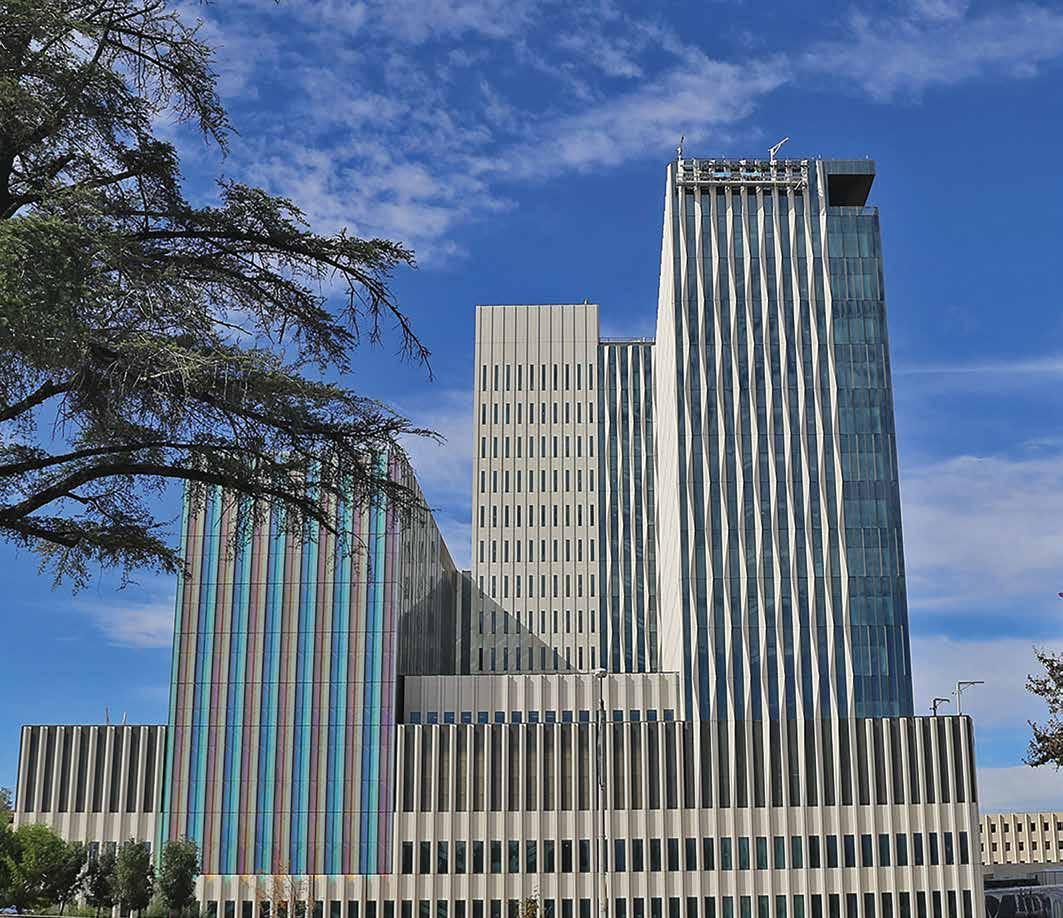
The Maternity Pavilion, which encompasses the entire fifth floor of the hospital, features the latest and greatest technology, which is key because it’s anticipated that 50 percent of the pavilion’s patients will be expectant mothers dealing with at-risk pregnancies and/or newborns who need immediate neonatal care.
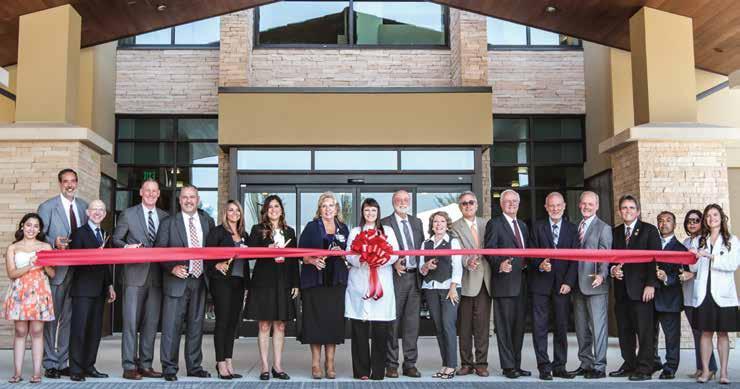
So not only is the $25 million gift the largest San Manuel has ever bestowed, but as Possinger noted, it’s “literally a lifesaver.”
And that’s where the historical twist comes in.
“Our relationship with San Manuel began with Dr. Lyra George delivering babies for the Tribe,” Hart said. “And it has come completely full circle to having a maternity pavilion funded by San Manuel in our new hospital.”
Of course, the connection between Loma Linda University Health and the San Manuel Tribe goes far beyond philanthropy. For instance, Ramirez sits on both the SACHS and President’s Advisory boards. Also, the Loma Linda University Children’s Hospital Foundation Board of Directors is comprised of multiple tribal citizens, including Ramirez’s sister, Alaina Mathews.
“As a Tribe, it’s so important that we not only look out for the well-being of our citizens, but also our neighbors,”
Mathews said. “It’s why we’re so proud and fortunate to support Loma Linda University Health. Together, we’re lifting up not just our people but this entire community.”
The best part? This is just the beginning. Guided by mutual principles and a shared history that dates back more than a century, San Manuel and Loma Linda University Health are determined to spend the next several decades strengthening their bond –and adding more milestones to that linear continuum.
“San Manuel, by far, is the most generous Tribe in North America,” Hart said. “And it goes without saying that we’ve directly benefitted from their generosity. But we’ve also benefitted from our parallel missions to serve the community. This is much more than a donor-recipient relationship; it’s a true partnership. Which is why we’re committed to working together for years to come to ensure the health and welfare of our citizens.”

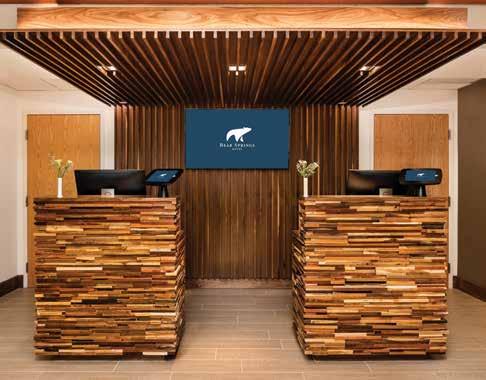
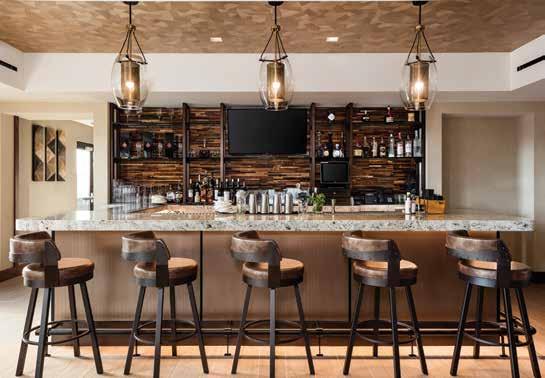
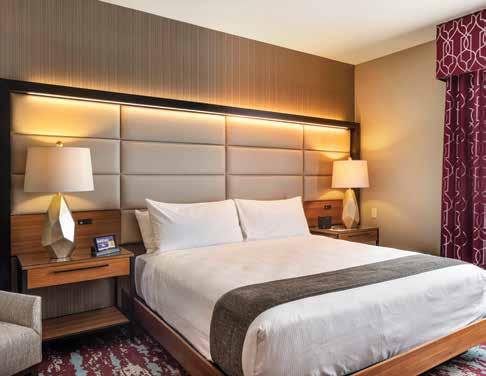
HELP
Before the San Manuel Band of Mission Indians established its own emergency services in 2003 – an ambitious effort that included not only the creation of firefighting and emergency medical services, but law enforcement as well –its citizens had to meet help halfway.
“Emergency vehicles would not come onto the reservation,” said Tom Ramos, Senior Vice President of Tribal Community Services.
He got firsthand experience of that failing one night, when his mother took ill: “Even though our house was right there, the first house on the reservation, we had to carry her to the ambulance. And other tribal citizens had to get rides, as sick as they were, before the ambulance would take them.”

The San Manuel Band of Mission Indians had trouble getting emergency services to show up on time, so they built their own.
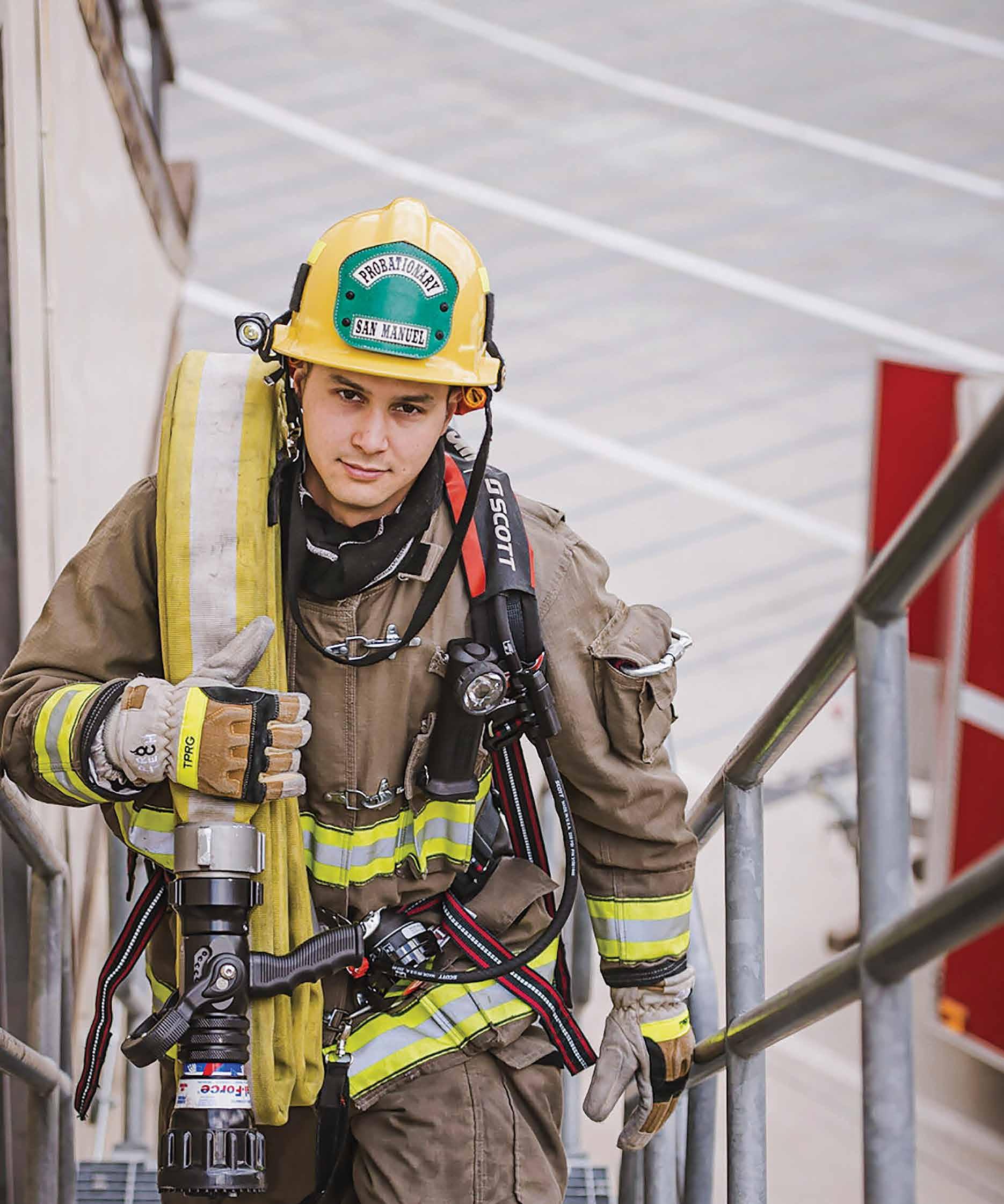

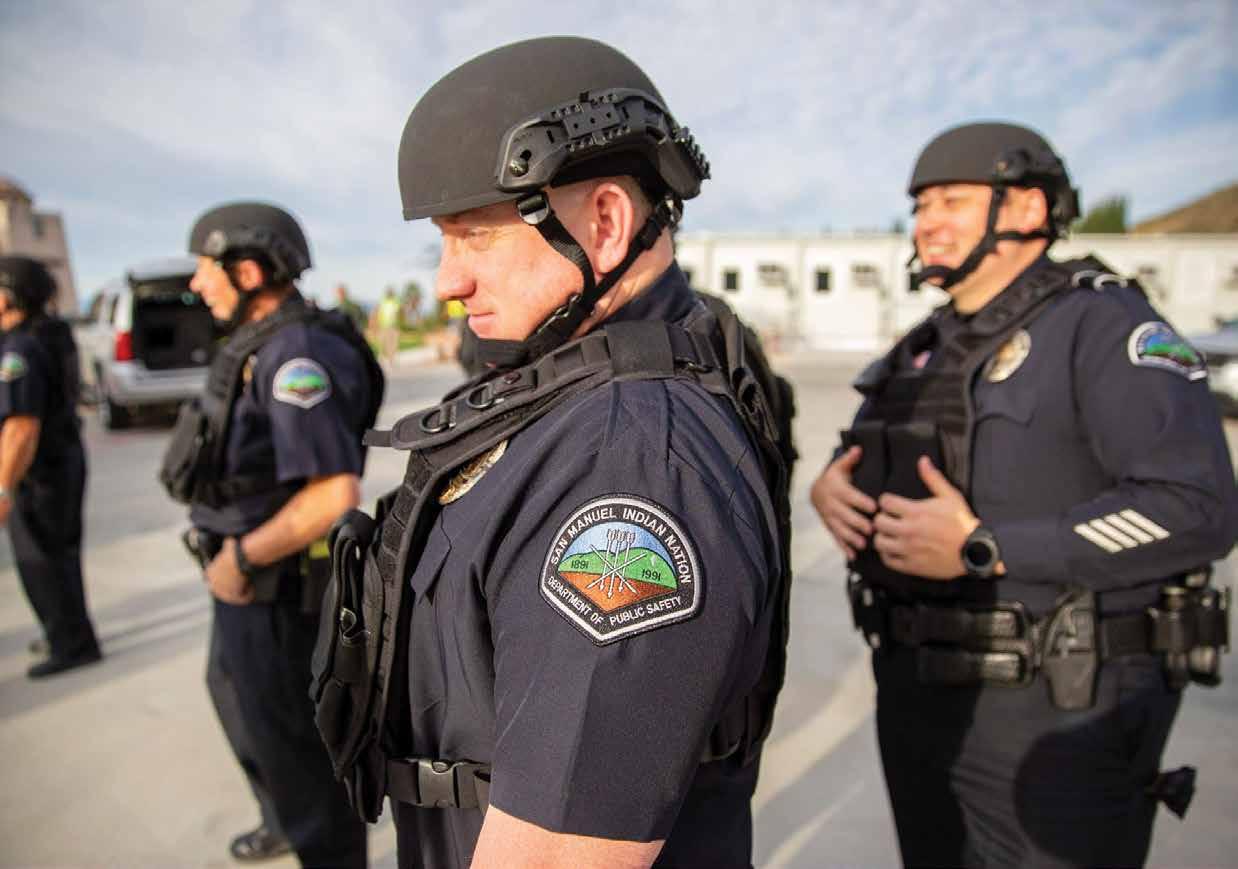
Ramos began working on the Smoking Eagles BIA Wildland Firefighting Hand Crew. His hard work eventually contributed, along with Cruz Chacon, to the founding of the San Manuel Fire Department – an effort spearheaded by Chris Duro – and the recruiting of City of Highland firefighter Michael Smith, who serves as the Tribe’s Fire Chief to this day. Ramos, Chacon and Duro are all San Manuel tribal citizens.
The timing couldn’t be better. When the San Manuel Fire Department was still in its infancy, it literally had a trial by fire with the 91,000-acre Old Fire of 2003. The members of the department jumped into action immediately, protecting the Tribe and the surrounding areas.
The Old Fire ultimately destroyed nearly a thousand homes elsewhere, but thanks to the department’s efforts, each of the reservation’s homes was spared even though the fire burned through the entire reservation. At an absolutely critical moment, when the prevailing wind aimed disaster directly at the Tribe, San Manuel finally had the steadfast protection it had long needed.
“There’s a lot of growth and expansion here. This Tribe is very visionary; they’re thinking years down the road, generations down the road. My goal is to constantly keep up.”
Gradually the department expanded its range of services and today, it’s not at all uncommon for this Insurance Services Office (ISO) Class 1-rated department – a rating that places it among the top 1 percent of fire departments in the nation, in terms of training, fire prevention and emergency response – to venture far beyond the reservation
to provide help wherever they’re needed.
Part of the reason for the department’s success is the wealth of experience its overseers bring to it. In addition to his firefighting experience, Ramos worked as a reserve police officer at San Bernardino City Unified School District Police Department and the San Bernardino County Sheriff’s Department in the city of Highland as well as in the Specialized Enforcement Division.
Chief Smith is a seasoned firefighter and volunteer air paramedic who aided in September 11 recovery efforts, and whose work was recognized by President Obama in 2012. And Chief Physical Security Officer Steven Gomez is a consummate law enforcement officer who’s worked with the IRS, LAPD, FBI and Joint Terrorism Task Forces, has assisted ABC News with law enforcement stories and even operated his own security consulting firm. These three professionals spoke to us about the challenge of protecting San Manuel’s citizens, homes and casino, and how they created a top-rated fire and public safety department from the ground up.
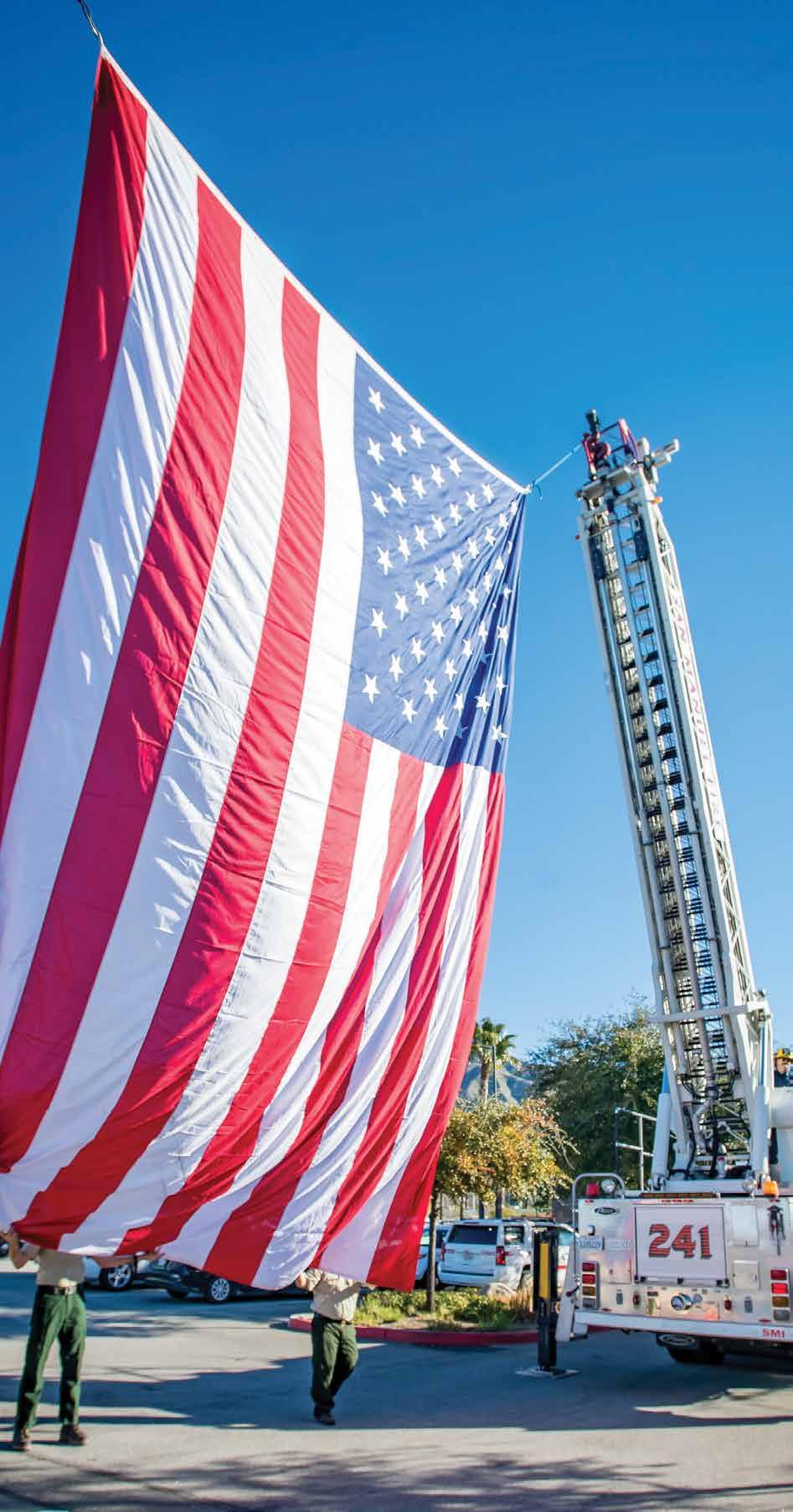
Chief Smith, you responded to calls on the San Manuel Reservation before taking this job. What were those calls like?
SMITH: We had great people coming up here, and very highly skilled professionals; they were just coming from far away. The gold standard for emergency response is to be on scene within five minutes. Fires double in size and cardiac arrest survival rates drop by ten percent every sixty seconds. A fire engine coming from five minutes away is dealing with a far different scenario than somebody coming from twelve, fourteen minutes away, which was the case before.
How difficult was it to start a department from scratch?
SMITH: I’ve been in emergency services since 1988 and I don’t know a single person who’s started a fire department. I mean, buildings and fleet and people and policies and procedures and training... You know the analogy of rebuilding the airplane while you’re flying it? We had to build the airplane from scratch while we were in the air.
What kind of emergencies constitute the bulk of calls the department receives?
RAMOS: On the reservation, the majority of our calls tend to be about our animals and wildlife, some speeding calls, medical aid from time to time. Because we’re a small community we’re able to concentrate on our elders; the fire department knows where our elders are, public safety knows where our elders are. If a call for medical aid comes from one of those areas, response is immediate.
SMITH: About eighty percent of our calls for the casino are medical in nature, stemming from the thousands of annual visitors. And all our units are paramedic-level staff. The other twenty percent run the gamut, from trash campfires to house fires to traffic collisions to rescues… In terms of jurisdiction, about sixty-six percent of our calls are on the reservation, and the other third are off the reservation, assisting our neighbors.
GOMEZ: We’re always concerned about unauthorized individuals trying to get onto the reservation. Sometimes, though, we’ll get somebody who was paragliding and they just missed their landing spot! My approach here at San Manuel has been for us to be proactive and prevention oriented. We want to prevent an incident from happening to begin with. We want to make sure the public sees a uniformed presence guarding, protecting and prepared to deal with any kind of incident.

Chief Officer Gomez, you come here from a deep law enforcement background. Has this job taught you anything you didn’t know before?
GOMEZ: Before COVID-19 we were thinking about developing a department of public health, but once the pandemic hit, it was clearly something we needed to build right away. Infectious diseases was something I was familiar with from the standpoint of the FBI’s WMD program: biological attacks. But now I’ve been able to dive into public health.
Southern California has seen a lot of destructive fires in recent years. How often are you called to provide help in other jurisdictions, and what do you send?
SMITH: California has a best-in-the-world model mutual-aid system. They’re really good about asking you for the right resource. So, it really depends on what resource they need. If it’s a wildland fire, they get a brush engine, but if it’s a wildland fire threatening structures, they may get a structure engine. Essentially, they’re going to get the best resources we have.
GOMEZ: Those mutual-aid agreements are very important, because it’s a two-way street. If we had a situation here on the reservation or at one of our properties, those mutual-aid agreements help bring resources to help us, and vice versa. We always want to be a good partner.
Do tribal citizens often come to the San Manuel Fire Department, asking if they can be involved?
RAMOS: When I first came on board with public safety, there were no tribal citizens anywhere. We started immediately working on getting some internships available for them.
SMITH: The Explorer Program – it’s not unique to San Manuel, actually; a lot of departments have them – is a youth program, age fourteen through twenty-one, that allows young people to get involved. Lots of our Explorers go on to become professional firefighters, but from my perspective, the larger objective is teaching life skills: learning to be accountable to a team, to show up on time, learning to interview, finding mentors. These are skills that are translatable to any career field.
“We’re going to continue to be ready for those low-frequency, high-impact events.”
This department has served San Manuel for nearly twenty years. Where do you hope to see it twenty years from now?
GOMEZ: There’s a lot of growth and expansion here. This Tribe is very visionary; they’re thinking years down the road, generations down the road. My goal is to constantly keep up.
SMITH: I always say we have three seasons: fire, earthquake and flood! We’re going to continue to be ready for those low-frequency, high-impact events. We’re going to grow our team to be able to maintain that high level of expectation. And twenty years from now, we’ll still be responding off the reservation every day with our brothers and sisters there, because that’s instrumental to the relationships we need to be able to meet any hazard.

Your dream is something you should treasure – don’t ever give it up.“ “
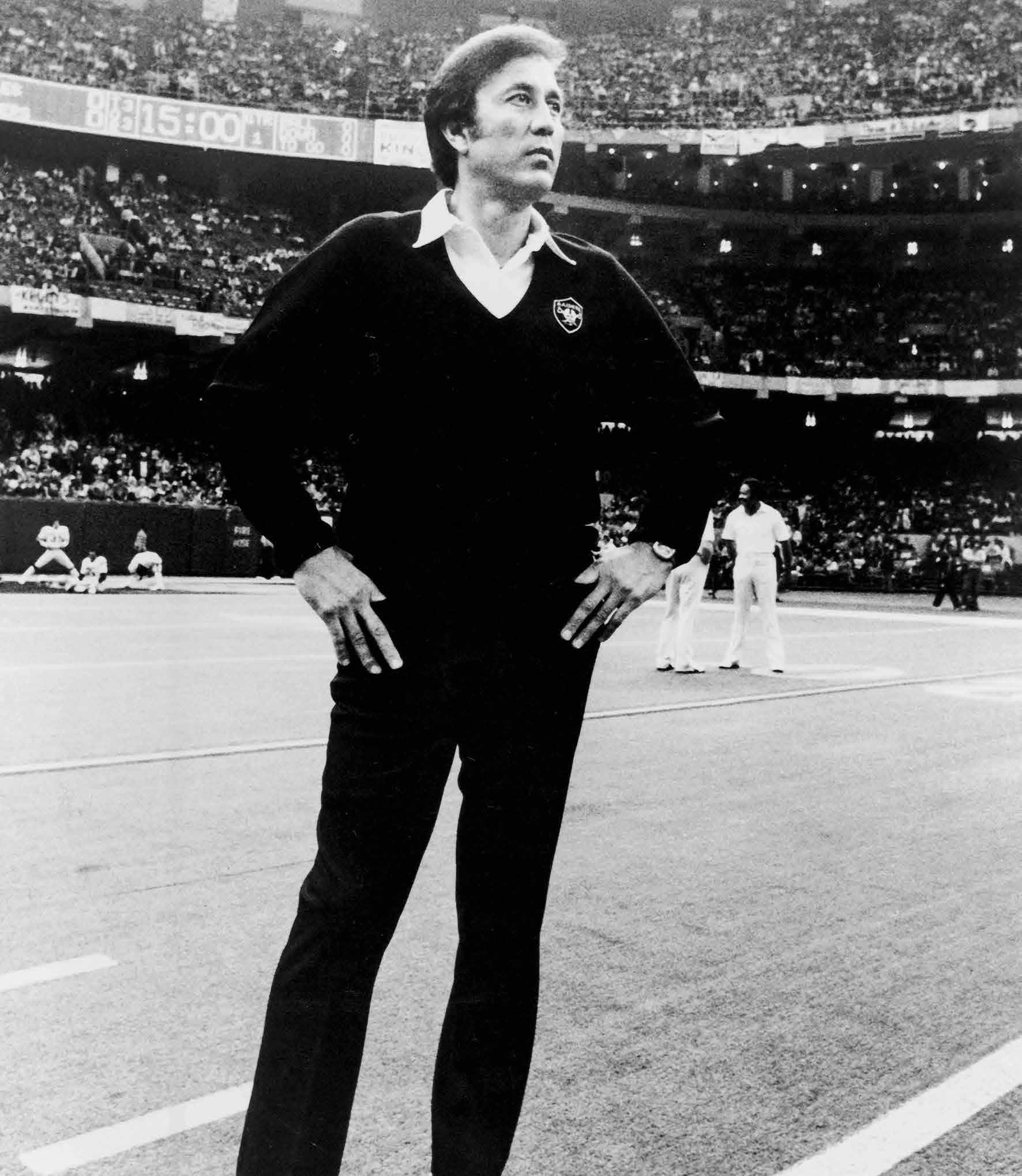

From farm work to the highest recognition in professional football, a look at how Tom Flores – who served as Raiders head coach, assistant coach and quarterback – pushed through obstacles, and made history. By Matt Jacob
om Flores waited for that knock, the thunderous knock that lands on the hotel-room doors of a select few legends of professional football the day before the Super Bowl. As an owner of four Super Bowl rings – one as a player, one as an assistant coach and two as a head coach – Tom Flores had long been hoping to hear that knock.
And in February 2019, when the Raiders legend traveled to Atlanta as a first-time Hall of Fame finalist, he hoped the moment had finally come. But as he and his wife, Barbara, waited in their hotel room, Flores heard his familiar cellphone ringtone. Cautious optimism gave way to crushing disappointment: The call was from David Baker, that 6-foot-9, nearly 400-pound mountain of a man and president of the Pro Football Hall of Fame who is responsible for knocking on the doors of newly elected Hall of Famers…and making solemn phone calls to finalists who come up short. Twelve months later, Flores again made the short list of potential inductees. And again, he got a call from Baker. Fast-forward to 2021. Flores is a finalist for a third consecutive year, but because of restrictions related to COVID-19, there would be no gathering at the Super Bowl site in Tampa. Instead, Baker would call every finalist. As decision day neared in late January, Tom and Barbara were relaxing at their home in Indian Wells, California, when they heard a heavy knock at the door.
Tom was working at his desk, so Barbara went to the door and was stunned to see Las Vegas Raiders owner Mark Davis and David Baker standing on her porch. Not wanting to spoil the surprise, she played it coy. “Tom? It’s for you,” she called. “I thought that was odd,” Flores said. “I got up, walked around the corner, looked at the front door and saw David Baker, who is pretty hard to miss. That’s when I knew I made it. I really made it.” Obviously, getting elected to the Hall of Fame – any Hall of Fame – is monumental and a thrill of a lifetime. But this particular induction? It’s more than that. It’s unprecedented. It’s culturally historic. It’s a case study in perseverance and one’s ability to overcome tremendous odds. To understand why this is true requires an understanding of who Tom Flores is. And how he got here.
Long before learning he’d finally achieved football immortality, and long before he made history as the first Latino to start at quarterback for a professional football team (the Oakland Raiders), the first minority to win a Super Bowl and the first Latino to be named general manager of an NFL team (the Seattle Seahawks), Tómas Flores, Jr. grew up in a modest dwelling in central California farm country. Actually, modest is an understatement: his home lacked indoor plumbing, so the bathroom was an outhouse.
Desperate to secure a piece of the American dream, Flores’ parents – Tómas, Sr., a Mexican immigrant, and Nellie, a U.S. citizen – worked tirelessly in the 1930s tending fields in the small farming town of Del Rey in California’s San Joaquin Valley.
As day laborers, they picked whatever grew out of the ground (cotton), on a tree (peaches, apricots) or on a vine (all varieties of grapes), getting paid for every box they filled.
Over time, Tómas, Sr. and Nellie were joined in the fields by two young assistants: their sons Tómas, Jr. and Bob. Although, as he glances back eight decades, Tom Flores admits he and his brother did more playing than assisting. “We’d take all day to pick one box of fruit. Really, we were just trying to behave while Mom and Dad did all the work.”
It’s understandable that Flores wasn’t the most dedicated worker; he was, after all, just five years old. That changed, however, as Flores matured and absorbed an invaluable life lesson. “One thing we learned at a young age was that it was OK to work –roll up your sleeves, go to work and get the job done. It was that way for a lot of our peers. It was our way of life.”
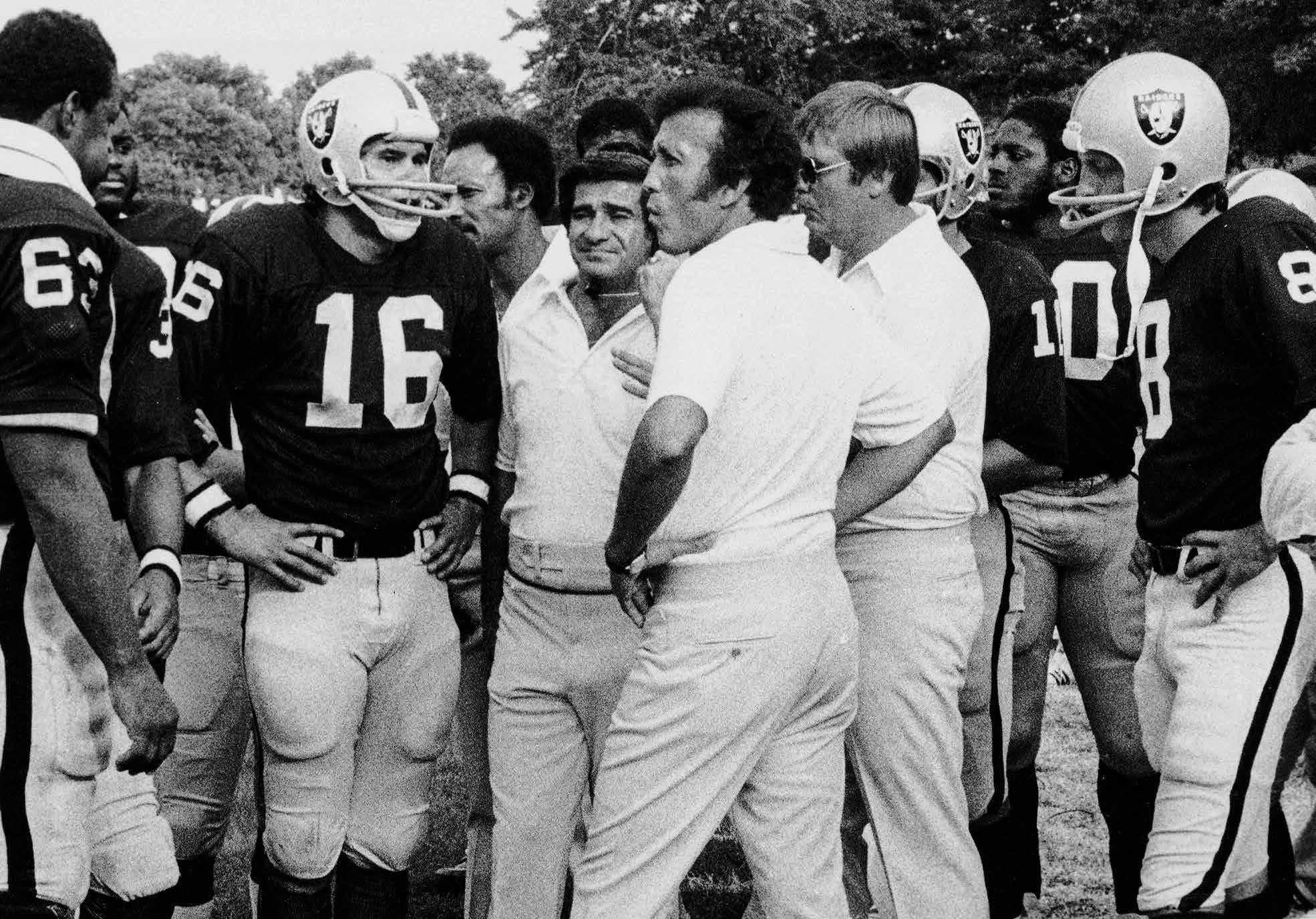
After the war ended, the family left Del Rey and moved about five miles north to the town of Sanger. It was here where Flores spent his formative years – and where one day, on the playground of
One thing we learned at a young age was that it was OK to work –roll up your sleeves, go to work and get the job done. © 2021 Las Vegas Raiders
That life wasn’t easy. But thanks to his parents’ strong work ethic, it wasn’t as difficult as it could’ve been. “We never were homeless, we never went hungry and we always had clothes on our backs,” Flores said.
In the early 1940s, the family’s living situation finally improved, and the Flores family moved into a home on the ranch where they worked. Soon after came a financial hand up when the ranch’s owner let Flores’ father and grandfather sharecrop on his land. “They were able to make good money,” Flores recalled. “Mr. Gio Vaccino, he owned the ranch. He was a man of few words, but we knew he was important to us.”
his elementary school, he would pick up a semi-flat oblong rubber ball. He didn’t know it at the time, couldn’t have known, but that weird-looking ball would change the course of his adult life.
It’s not that Flores was unfamiliar with sports – in fact, he grew up loving baseball, which at the time was America’s pastime. He played softball as a youth and later developed an affinity for basketball. Football, though? It was as foreign to him as a $100 bill. So when his eyes spotted that deflated ball in the schoolyard, he picked it up and curiosity ensued.
“I asked my friend, ‘What is this?’ And he said, ‘It’s a football.’ I said, ‘What do you do with it?’”
The two started playing catch, and Flores – blessed with large hands – discovered he could throw the pigskin with ease. And throw it deep. And on target. Soon, he learned the basic rules, and upon reaching middle school, he played organized flag football.
Still, as he neared high school, Flores was certain his athletic path would lead him to the basketball court or baseball field. The sporting gods had other ideas.
“Turns out I was better at football than the other two sports,” he said. “I always had a strong arm; I could throw the ball accurately and with anticipation. At each level, as the game got more sophisticated, it became more fun.”
During his first two years at Sanger High School, Flores played quarterback on the junior varsity team before being promoted to varsity as a junior. However, most of his playing time that year came on defense.
That changed during his senior season, when Flores earned the starting quarterback job. From there it was off to nearby Fresno City College, where he played so well in 1955 and 1956 that he earned a scholarship to what is now known as the University of

the Pacific in Stockton, California.
Flores graduated from Pacific in 1958 – becoming the first member of his family to earn a college degree – and then set his sights on a professional football career. It was a rocky start, to say the least: After a failed tryout with the Canadian Football League’s Calgary Stampeders, Flores returned home to have surgery on his ailing throwing shoulder. Another tryout in 1959, this one with the NFL’s franchise in Washington, D.C., was also unsuccessful (in part because his shoulder hadn’t fully healed).
“Well,” Flores thought, “that’s it. I’m done.”
Following each tryout, Flores was summoned by his former college coach to assist with the school’s freshman team, which he did in 1958 and 1959. He also started studying for his Master’s degree and figured he was headed for a career as a teacher, while also keeping one foot in the locker room, playing for the semi-pro Bakersfield Spoilers, which supplemented his income to the tune of $100 per game. Then came news that a bunch of wealthy businessmen, in hopes of competing with the NFL, were launching the American Football League in 1960.
In need of players, one of the fledgling league’s charter members, the Oakland Raiders, offered Flores a tryout. Before accepting, Flores tested out his shoulder, then sought his doctor’s opinion. The verdict: The shoulder was getting stronger. Flores accepted the Raiders’ invitation – over the objection of his mother, who wanted him to move on with his life.
“My mom cried because I turned down a job teaching and coaching in Fresno close to home,” Flores recalled. “I said, ‘Mom, I’ve got the rest of my life to work. I don’t owe anybody any money, I don’t own a car. Let me try this and see what happens.’”
When he arrived in Oakland, Flores laced up his cleats and trotted onto the field – along with 10 other quarterbacks who were summoned for the tryout.
“At first, my heart sank. I thought, ‘Look at all these guys!’” Flores said. “Then I saw them throw, and I was like, ‘Oh man, this is going to be easy!’ Most of them couldn’t hit the ground.”
On September 11, 1960, the Raiders took the field for their very first regular-season AFL game. Their opponent: the Houston Oilers. Their starting quarterback: 23-year-old Tom Flores.
A half-century later, that game is noteworthy in part because of Flores’ heritage: Previously, no Latino had ever played quarterback in a professional football game. At the time, though, that fact was lost on everyone – including Flores.
“Never dawned on me,” he said. “I was just happy to have a job doing what I loved.”
He would continue doing what he loved for each of the AFL’s 10 seasons, passing for nearly 12,000 yards and 93 touchdowns while appearing in 106 games with the Raiders (1960-66), Buffalo Bills (1967-69) and Kansas City Chiefs (1969).
As Kansas City’s third-string quarterback, Flores appeared in just two games and threw only five passes. Nonetheless, it was a magical season that ended with a victory over the Minnesota Vikings in Super Bowl IV.
After that game, the upstart AFL merged with the NFL, and Flores spent the rest of 1970 trying to latch on with another team. When that never happened, he was forced to confront reality: at age 33, his playing days were over. And with a wife and three kids to support, it was time to figure out a second act.
As the 1950s drew to a close, Tom Flores had flopped in two tryouts with two different pro leagues, his shoulder appeared to be shot and he was on the verge of leaving the field for good. Yet, a decade later, he had a sparkling Super Bowl ring and the historic distinction of being one of only 20 men who played in the AFL for the league’s entire existence.
Tom Flores joins Raiders great Charles Woodson as members of the Pro Football Hall of Fame’s Class of 2021. The Raiders now have 28 former players, coaches, and executives enshrined in the Hall of Fame:
Ron Mix, tackle (1979)
Jim Otto, center (1980)
George Blanda, quarterback/kicker (1981)
Willie Brown, cornerback (1984)
Gene Upshaw, guard (1987)
Fred Biletnikoff, wide receiver (1988)
Art Shell, tackle (1989)
Ted Hendricks, linebacker (1990)
Al Davis, owner/head coach/assistant coach/ league commissioner (1992)
Mike Haynes, cornerback (1997)
Eric Dickerson, running back (1999)
Howie Long, defensive end (2000)
Ronnie Lott, cornerback/safety (2000)
Dave Casper, tight end (2002)
Marcus Allen, running back (2003)
James Lofton, wide receiver (2003)
Bob Brown, tackle (2004)
John Madden, assistant coach/ head coach (2006)
Rod Woodson, cornerback/safety/ kick returner (2009)
Jerry Rice, wide receiver (2010)
Warren Sapp, defensive tackle (2013)
Ray Guy, punter (2014)
Tim Brown, wide receiver/ kick returner (2015)
Ron Wolf, executive (2015)
Ken Stabler, quarterback (2016)
Randy Moss, wide receiver (2018)
Tom Flores, quarterback/assistant coach/ head coach (2021)
Charles Woodson, cornerback/safety (2021)
So when he found himself at yet another career crossroads, there wasn’t much doubt that whatever path he chose, Flores would find a way to be successful. Just one problem: He had no clue what he wanted to do.
The only thing he knew was that, somehow, some way, football would be involved. “I had to find a way to stay in the game,” he said, “even if it was selling programs.”
One of his former teams, the Bills, provided Flores that opportunity when they hired him as quarterbacks coach in 1971. After an abysmal 1-13 season in Buffalo, Flores packed up his family and returned to where it all began: Oakland. The first quarterback in Raiders history now was the club’s wide receivers coach.
Flores held that position for seven seasons, during which time the Raiders won at least nine games each year. That includes a 13-1 record in 1976, when Oakland blew out the Vikings in Super Bowl XI to capture the organization’s first title (and give Flores his second Super Bowl ring).
Following the 1978 campaign, Flores’ boss (and future Pro Football Hall of Famer) John Madden resigned as head coach. Given his longtime ties to the organization, his familiarity with Madden’s system and his close relationship with Al Davis, Flores seemed like the logical replacement. First, though, he underwent a thorough interview process.
“I had three interviews, and I felt confident after the first one,” Flores said. “But Al brought me back again and again. At one point, I said to my son, ‘Why is he treating me this way?’ He wanted to see what I was like under pressure, so he made me jump through all the hoops.”
When Davis made the hire official, Flores once again made history, becoming one of the first Latinos to land an NFL head coaching job. Two seasons later, more history: Flores guided the 1980 Raiders to four consecutive playoff victories, culminating with a rout of the Philadelphia Eagles in Super Bowl XV.
With that win, Flores became the first to win a Super Bowl as a player, assistant coach and head coach – and the first minority head coach to capture an NFL title. Three seasons later, with the Raiders now playing in Los Angeles, Flores did it one more time, leading his troops to a blowout victory over Washington in Super Bowl XVIII.
That farm workers’ son, whose early years were spent living in a home without indoor plumbing, who picked fruit to help his family make ends meet, who had no clue what a football was the first time he picked one up, who thought his professional football career was over before it started and who came this close to becoming a teacher? He now had four Super Bowl rings. © 2021 Las Vegas Raiders
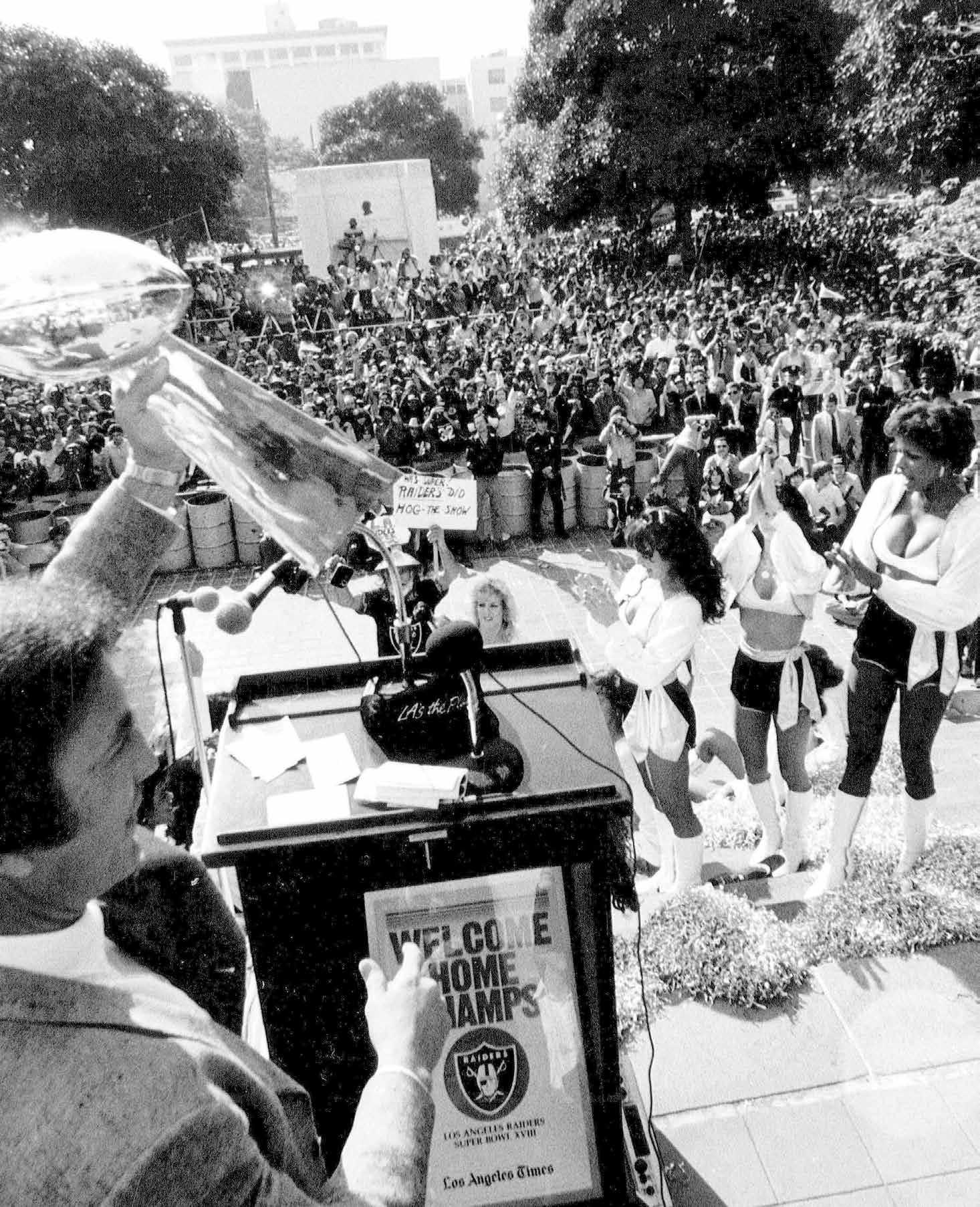

“I remember being on the sideline in New Orleans in Super Bowl XV against the Eagles,” Flores said. “And as the game was winding down, Sam Boghosian, my offensive line coach who grew up in the Fresno area and shared a similar background, came up to me and said, ‘Not bad for a couple of grape pickers, huh?’ And I said, ‘Yep, yep – not bad at all.’”
Flores served as head coach of the Raiders for nine seasons, compiling an 83-50 record (those 83 victories still rank second to Madden in franchise history). In Flores’ first seven seasons at the helm, the Raiders went 70-35, made five playoff appearances and won those two Super Bowls by the combined score of 65-19. As field general of the Silver and Black, his .727 winning percentage in 11 postseason contests (8-3) ranks second only to Vince Lombardi (9-1, .900).
Following the 1987 season, Flores left the sidelines and moved upstairs to the Raiders’ front office. A year later, the Seahawks named Flores their president and general manager, making him the first Latino to start a pro football game at quarterback and be an NFL general manager. Add the four Super Bowl rings to those historic achievements, and it appeared to many that Flores – who also spent 21 seasons as an analyst on Raiders radio and preseason broadcasts – had compiled a Hall of Fame-worthy résumé.
Yet as the decades passed, his name rarely came

who have been along for the entire ride; about all the former teammates he played with and former players he coached; about his numerous friends, fans and the numerous communities that he has impacted through his charitable and philanthropic work.
You can be sure all of them will be on his mind and in his heart when Flores travels to Canton, Ohio, on August 8 and receives his gold jacket and bronze bust and is officially enshrined in the Pro Football Hall of Fame.
“There are a lot of people who have enjoyed this moment,” Flores said. “The congratulations have come from all over the country, and it’s heartfelt. It’s really
It’s really gratifying when you have so many people who are truly happy for you. It’s an overwhelming sense of pride.
up for consideration. Then when it finally did and he reached the precipice of induction, he was twice told, “Sorry, Tom. You didn’t make it.”
As painful as those words were to Flores, they were equally devastating to his legion of supporters, Raiders and football fans, proud Latinos and many more who saw Flores for what he was: a role model, a trailblazer, and a living, breathing example that anything is possible, regardless of your background.
“When all these people are supporting you,” Flores said, “you feel sad that they aren’t rewarded with what they would like to see, which was me getting into the Hall of Fame.”
Which is why, when he first got a glimpse of David Baker standing on his porch, Flores choked up. He thought not just about himself but about his mother and father and brother, all of whom are deceased; about his wife, twin sons, and daughter
gratifying when you have so many people who are truly happy for you. It’s an overwhelming sense of pride.”
Yes, that knock was long overdue, but as Flores said, “It didn’t matter when it happened; it just matters that it happened.” Because the knock didn’t just mean that Flores, now 84, had finally achieved immortality and that his football legacy will live forever. It meant his life story – all of that history he made and all of the odds he overcame – will live forever, too.
It’s a story Flores hopes will inspire those who fear the obstacles are impossible to conquer.
“Your dream is something you should treasure –don’t ever give it up. And be prepared to fail, because you will fail before you succeed. Just don’t let failure be your dictator. And never forget that anything is possible.”
San Manuel Band of Mission Indians is a proud sponsor of the Las Vegas Raiders and is a Founding Partner and the official Southern California casino of Allegiant Stadium, home of the Raiders.
GreaterTogether
San
Manuel Casino’s wealth isn’t found
in the high limit rooms, but rather in each team member working toward making the company the best it can be – and securing their own future in the process
BY LISSA TOWNSEND RODGERS
Since its opening in 1986, San Manuel Casino has grown from a casual, locals’ bingo hall to an upscale, Vegas-style casino. And this year sees them investing over $500 million to develop a hotel, spa and events center, taking the property to a luxurious new level.
But one of the most crucial aspects of this massive building process isn’t concrete and drywall – it’s the team members, both the ones who’ve been with San Manuel from day one and those they’ll be hiring tomorrow.
“Our clientele has grown and has become so much more sophisticated – it’s a testament to Human Resources for bringing in the type of people we’ve brought in,” said Casino Manager on Duty Stephanie Short-Smith. “We’re all in unison on what the message is, what the expectation is, what the goals are.”
Currently, the Tribe has 5,000 team members, but they’re seeking to add over 2,500 more members to their team by the end of 2021, in positions

ranging from entry-level to executive suite. Jasmine Takeshita, Director of Talent Acquisition, said, “Each job has its own set of unique skills and qualities. But overall, we’re looking for those who really enjoy interacting with people and enjoy helping other people – no job is too small or too large to have a customer-focused mentality.”
That helping hand isn’t just from employee to customer, but employee to employee. General Manager Peter Arceo said, “We are a close, tightknit, familial group of team members that watch each other’s backs. Everyone is willing to do whatever it takes to ensure the success of the entire team. We help each other out and we challenge each other.”
“Working for a tribal nation is unique in many ways,” explained Michelle Olden, Deputy Chief of Staff, Office of the Tribal Secretary. “On one hand, I am working in a sophisticated tribal government, and on the other hand, I’m working for a large family.”
Brigitte Saria, Chief People and Infrastructure Officer, agrees that the Tribe’s unique ideology carries over to its business practices. “The Tribe is one that culturally and philosophically wants to lift itself and the community up and that translates into how people treat each other in the office.”
One of the things that has fueled the growth of San Manuel is the growth of the people who work there. Many team members have been with the Tribe for decades, building career paths that can take them from part-timer to senior management or from food service to entertainment, as they explore the possibilities within San Manuel – and within themselves.
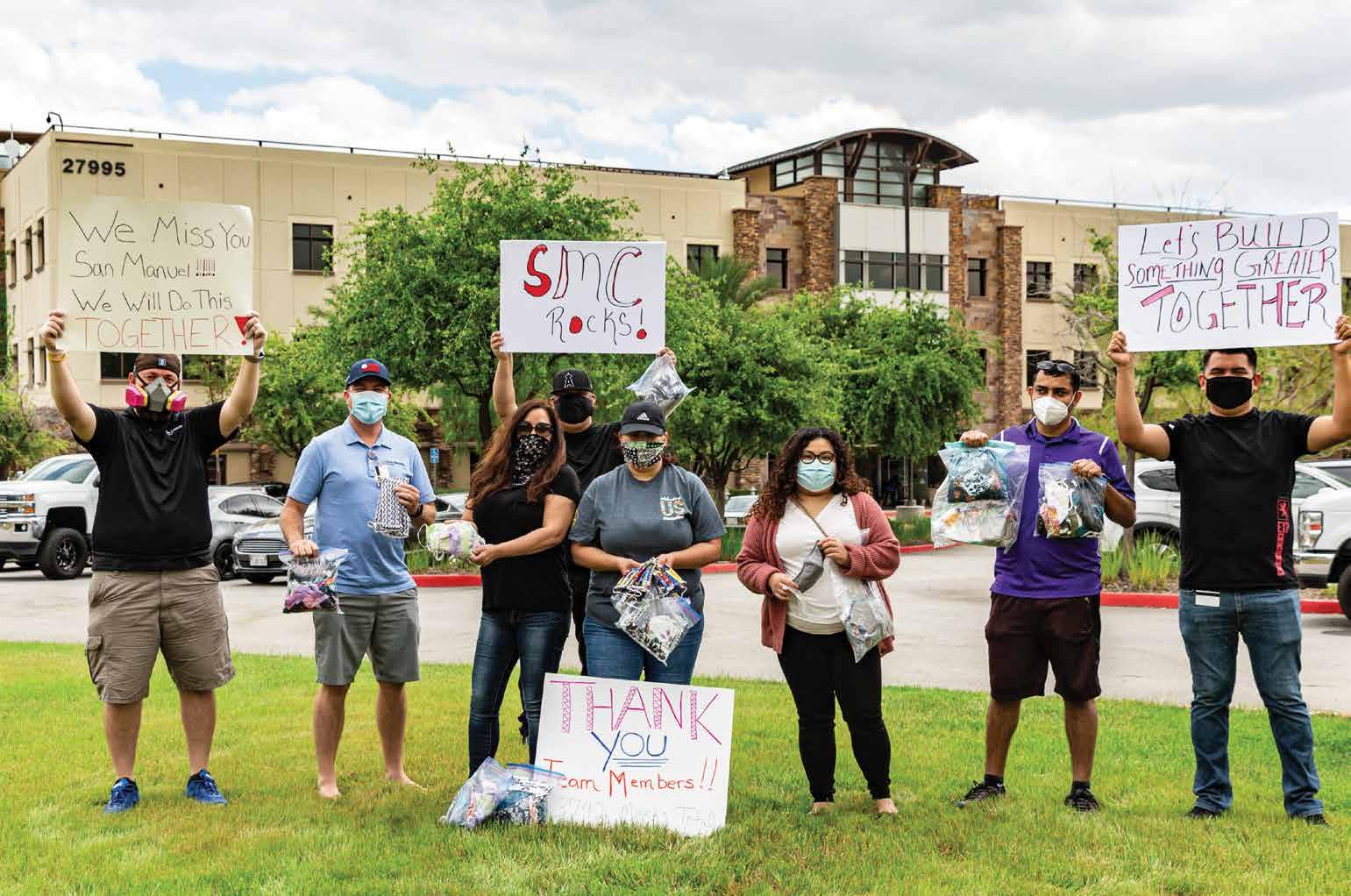
Saria explained, “There are people who come just for the paycheck and that's okay. Then there are people who come here and say ‘I want to build a career. I may be in an hourly, non-exempt role, but I see that my director was in my role several years back. Can I do that too?’ And we say: ‘Yes, you can.’”
Melissa Duro Hernandez, who recently began her first full-time job with San Manuel after an internship, agrees that the Tribe offers many opportunities. “The possibilities feel endless. If I decide human resources isn't for me right now, maybe there’s something in marketing. I feel like I have a lot of options.”
Takeshita recalled, “A team member told me that San Manuel allowed him to buy his first house, to get his degree, to put his children through school. He wouldn’t be where he is today if not for the Tribe giving him the opportunity and continuing to help him develop and grow.”
An Tran, Director of Human Resources Information System (HRIS) and HR Operations, has been with San Manuel for 25 years, going from Food and Beverage to the Cage to Human Resources. “I’ve

been through market crashes with them, pandemics – not just COVID-19, but Swine Flu way back when,” she recalled. “During the 2008 market crash, when everyone was laying off employees, the Tribe didn’t lay anyone off during that time.”
It’s not only the stability, but the personal touch that has kept her at San Manuel – like getting congratulatory letters from leadership as her career progressed, something you don’t see from stakeholders at other companies.
Olden also said the Tribe offers something more than other employers. “The Tribe treats me, and all of the employees, like family,” she said, “I appreciate how committed the Tribe is to its vision, mission and values and the fact that I get to help with executing them each day.”
That caring extends beyond the casino and the Tribe into the entire community. The Tribe’s philanthropy has included everything from providing backpacks full of school supplies to funding the Loma Linda University Health Maternity Pavilion.
“I grew up in the region and witnessed the airbase and a number of large businesses closing in
the nineties,” Public Information Officer Ken Shoji recalled. “The Tribe really uplifted the community at a critical time by creating new jobs and drawing people and investment to the county.”
In fact, when COVID-19 hit local businesses hard, San Manuel gave funds to help keep their doors open and their employees paid. Takeshita notes that the Tribe supports the community in three ways, “by the gifts of the Tribe to the community, by employing local community members and by supporting businesses around the casino.”
Arceo sees the community involvement and team member support as not just the byproduct of a successful operation, but essential to San Manuel’s mission. “You’re not talking about profits, stock prices and shareholder value over the next month, quarter or year. Instead, you’re having conversations around the generational impact,” he explained. “We’re not building to sell, not building a business for pure profit. We are building a business that will help in sustaining people forever.”
If you’re interested in a career with San Manuel, please visit www.sanmanuelcareers.com.

A MOMENT WITH
Afsi Bird
Afsi Bird is an old hand at grand openings. The Vice President of Hotel Operations has overseen numerous property openings and major renovations during her three decades in hospitality. But even with years of experience – at such illustrious properties as Montage Deer Valley and Four Seasons Hotels and Resorts, Newport Beach, Santa Barbara and Aviara – she’s excited about her new position at San Manuel and creating a “best-in-class property, a best-inclass casino.”
What brought you to San Manuel?
I’ve never worked for a casino before, so this was an amazing opportunity to learn from the best. And I love openings. You’re creating something unique and special from the ground up.
What is it like working for the Tribe? The culture here is definitely family oriented. People truly care for you. Everybody wants to see you succeed.
The hires you’ve made so far – what kind of experience do they have?
Elham Iskandar, our Director of Housekeeping, has decades of experience in luxury hospitality. Most recently she’s worked at The Plaza Hotel in New York. Linchul Shin, our Director of Food and Beverage, joined us from the Michael Mina Group. That level of experience is what’s going to set us apart. We have the product – we need to make sure we have the service to back it up.
What are you most looking forward to about the opening?
I’m looking forward to being the best. Everything we’re doing here is really high end, the top of the product, the top of the service. Some high-end luxury can be very stuffy, but we want to be a welcoming, fun place to be. We want to make sure our opening puts us on the map, and we’re recognized for what we can build here in the community.
Here from the
START
From Bingo Floor Clerk, overseeing three rows of tables, to Director of Experiential Marketing for San Manuel, Dianna Scina has come a long way from cards and daubers. But her job is still about making sure every guest’s visit is memorable.
By Lissa Townsend Rodgers
I was in the bingo hall on the first day the doors opened… that would have been July of 1986,” Dianna Scina said and smiled, reflecting on the past three and a half decades.
Today, she’s working on proposals for ticketing companies and talent buyers, having conversations about construction on the events center, negotiating with sponsorship partners, interviewing people for new positions and planning upcoming events.
She took a break from her busy schedule to share some thoughts on her journey.
Thirty-five years is a long time. What’s kept you here?
My job has evolved since the very beginning. I was a Floor Clerk and then a Bingo Supervisor and then the customer service department started, so I was given an opportunity to work there. Then we started doing promotions, and entertainment was under the same umbrella. When we moved to this building, I had an opportunity to work as a Guest Services Director for several years. There were always new opportunities and, as the business was evolving, I was also evolving. There was always room for growth.

Speaking of growth, will the new events center have an impact on what you do?
We’re really excited because it’s a dedicated space and we’ll be able to provide an elevated experience for our VIP players, for the Tribe, for the community… It’s so exciting – it’s something we’ve always hoped for and now it’s actually happening.
There are a lot of longtime employees at San Manuel, but now a lot of new ones are coming on board. How does everyone work together?
At every level, the leadership is very welcoming and has really taken advantage of what the new people on the team offer. It has allowed us to continue to grow. There are times we each have our own responsibilities and times when it’s all hands on deck. That just means everyone is going to pull together and we’re going to get it done, whatever it takes. And that is the general mentality across the property, and across the enterprise.
How do you think working for San Manuel is different than working for other casino properties?
The Tribe has done so much throughout the years –both for the community and for the team members. Many are so grateful, and they really want to give back. They show their gratitude through loyalty and doing a great job for the Tribe. It’s a partnership.
What would you say to someone considering coming to work at San Manuel?
With the current growth, there’s just so much opportunity – especially for young people. There are opportunities to work in different departments, there are opportunities to learn so many different elements of gaming – but also opportunities on the tribal side as well. I’m really excited for people joining this company now…. I just feel like there aren’t any limits to what we can do in the future.
Indulge

Taking a look at what
collected COOL
Always on the hunt for items that set themselves apart from the rest, we’ve put together a collection with one common denominator: they all protect the things you care about most. Read on to find a few things for you and your tech.


The bright Side
When form and function matter, choose sunglasses that pull double duty. Classic tortoiseshell, geo-wire and mixed material frames shield sensitive eyes from harsh UV rays and put finishing touches on your look.

Guard Your Gear
Whether you’re scrolling through Instagram, listening to your latest playlist or finally reading that novel, give your electronics a fighting chance during the inevitable drop while keeping the optics fresh with cotton-candy colors and whimsical patterns.


ideal skincare
Look to Redland, CA’s own Principle Body Care to defend and repair skin. The plant-based serums, soaps, scrubs and creams use steam and cold-press extraction methods of natural ingredients such as Elderberry, Aspen Bark Root and Hibiscus for targeted formulas to hydrate, soften and brighten your face and body.
Room to
GROW
San Manuel Casino serves up the region’s top fine dining as well as favorite casual fare spots. And now, with the expansion into the resort, it’s poised to become a dining destination in its own right.
Meet one of the people making it happen.
BY MELINDA SHECKELLS | PHOTOGRAPHY BY JAIME BIONDO
It’s one thing to cook for celebrities or compete in culinary competitions, but how many chefs can handle 24-hour dining service, a portfolio of seven restaurants and still make sure each dish is executed to perfection?
Only the best. Chef Oliver Wolf, Vice President of Culinary Operations for San Manuel Casino, happily takes on these tasks. And can’t wait to take on more.
“What really enticed me to move to casino culinary operations was the volume. There's so much more room to play since there are a multitude of cuisines and outlets that cater to guests,” Wolf said.
Wolf got his start in his native Germany at his parents’ hotel and restaurant in the countryside. From there he completed a classical apprenticeship at culinary school before he set off to travel the world. His first position took him to Bermuda and then back to Europe to work in the Bavarian Alps. Since then, he has helmed some of the world’s highest volume kitchens for major international resort brands spanning the globe from Dubai to Philadelphia. In 2019, with 30 years of experience under his belt, he joined the team at San Manuel Casino. Today he’s looking forward to the opening of the hotel, and the realm of entirely new possibilities it will bring. “The hotel will give us an opportunity to take what we’re doing in the casino and expand it at the resort level,” Chef Wolf said. “We’ll have a spa and a beautiful pool, so now we can have those spaces for al fresco lunches and special events; we’ll offer light and healthy spa
cuisine and, of course, in-room dining.” The hotel will also feature a 24-hour restaurant and high-end dining.
As of now, two venues are on the top of the list for not only casino guests but also locals seeking an exceptional evening out. The Pines Modern Steakhouse is known as the premier steakhouse in the Inland Empire. The contemporary atmosphere is the backdrop for classic fare such as Maryland-style crab cakes, oysters on the half shell, cold-water lobster tail and premium, hand-cut, wet- and dry-aged steaks. (When the hotel opens, The Pines will move to its new location, which will include a wood-burning grill.)
Hong Bao Kitchen is the other standout. Bold red hues and opulent gold accents set the scene for the region’s best Asian cuisine. The menu is balanced between classics like Whole Peking Duck – the restaurant even has its own duck drying cabinet –and wok specialties such has Shanghai Braised Pork and Orange Chicken. “I could eat the whole menu left, right and center,” Wolf said.
When asked about his food philosophy, the chef explained that San Manuel Casino’s slogan is “Best in Class” and that goes for the culinary program as well. “If someone orders a Club Sandwich, I believe it should be the best sandwich out there. The bread should be properly toasted, the bacon should be fresh, the tomatoes should be perfect. The lettuce should be crisp. Sometimes people say, ‘Oh, that's the easy stuff.’ It might seem like a simple thing but it's hard to get it right all the time. And that’s what we’re doing here. Even the simple things exceed expectation.”

BIG MO’ CAFÉ

No time to sit and enjoy a leisurely breakfast?
Pick up a pastry and your favorite (Starbucks) coffee drink and get right back into the action.
Easy Eats
When you’ve worked up an appetite and are ready for a little sustenance, pop into one of these spots for a quick and casual meal.
ROCK & BREWS
Classic rock, crowd favorites and craft beer. What more could you ask for? This high-energy, all-day dining spot starts with breakfast burritos, sandwiches and omelets before powering up for lunch and dinner. Rock out while diving into a hand-crafted burger, Southern dishes like Memphis-Style BBQ Baby Back Ribs, New Orleans Jambalaya and Cajun Ribeye or mealsized salads.
GEORGE LOPEZ’S CHINGON KITCHEN
Looking for authentic Mexican cuisine? You found it. The very first outpost of George Lopez’s wildly popular restaurant is right here at San Manuel Casino. Start the day with the Torta Aporreada or Chilaquiles for breakfast (with Café de Olla, of course); for lunch and dinner, there’s Carne Asada or Al Pastor tacos, tamales, elote and, of course, homemade tortillas.
TUTU’S FOOD COURT
If you’re short on time but long on appetite, find breakfast, burgers, sandwiches, salads, 24-hour grab-and-go options and desserts. But Chef Wolf’s favorite is the pizza. “I can never pass it up, they make the dough for the Sicilian-style thin crust fresh in house.”
THE PINES STEAKHOUSE



CHINGON
Must try: Chilaquiles

ROCK
&
BREWS
Must try: Jambalaya
Bear Springs Bistro
Something magical is happening at Bear Springs Bistro: with an enchanting patio, curated wine dinners and live entertainment, the all-day dining spot tucked into the boutique hotel just three miles from the casino has become a destination in its own right. By Jessica Villano
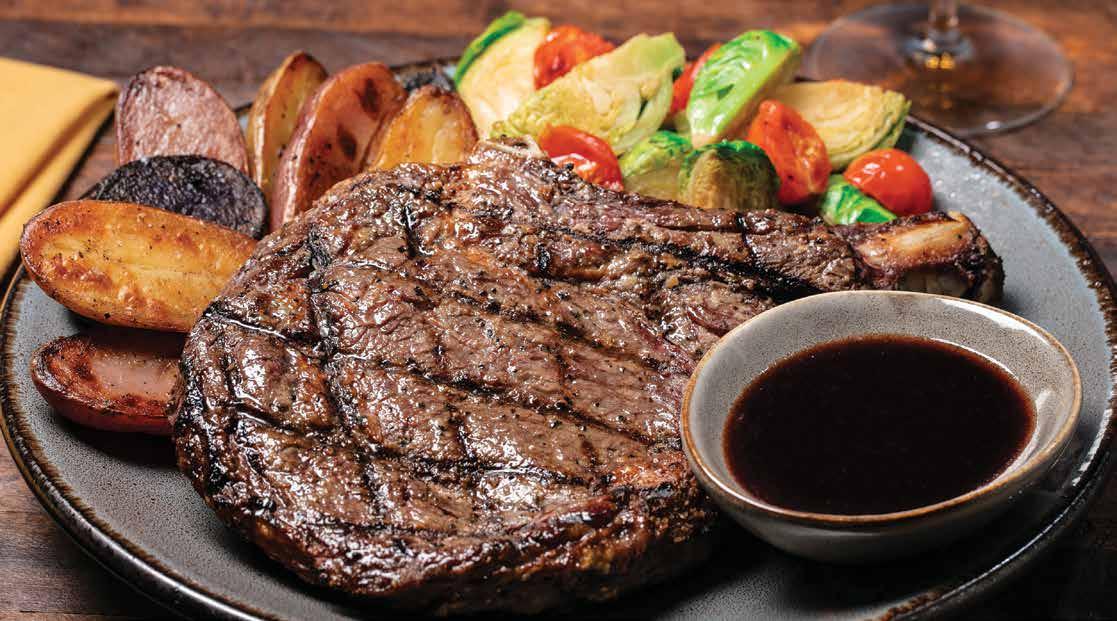
Starring locally sourced and seasonal dishes, Bear Spring Bistro’s Chef de Cuisine Kyle Corcoran takes the farm-to-table concept to heart, walking the fields and talking to local growers in order to build menus from the ground up. “The fun part is going to these farms to see what they have,” Chef Kyle said. “You really never know what you’re going to find.”
So far, his culinary quests have uncovered such gems as a local, family-owned vineyard, which provided varietals for a wine dinner, and honey made by the family of one of the servers, which played a supporting role on a themed menu.
While Chef Kyle has even designed menus around regions –recently exploring Redlands, CA and collecting local products for a wine dinner – the core menu also stays true to the scratchmade kitchen ideal. “We roll our pasta out by hand; the steaks we bring in are all prime and hand cut. We use the scraps to grind into our burgers, so they’re prime as well,” Chef Kyle explained.
The American bistro has a California-cuisine feel with Italian roots, thanks to the influence of Chef Kyle’s Sicilian-born great-grandmother. But Chef says they’re always looking for inspiration. “We dive into culinary traditions we’re not familiar with because it’s important to learn and grow.”
As any guest seeking an unforgettable dining experience knows, the food is just one element. The service, atmosphere, and bar program have to be on point too.
Bear Springs General Manager Gerri Manzo encourages the bar team to let their imaginations run wild. The result is a cocktail program that embraces whimsy while staying true to the mission: complementing the dishes that come out of the kitchen. “I’m really big on exploration and allowing the team to find new ways to express themselves,” Gerri explained. “It’s all part of the atmosphere we’re creating here.”
There are three distinct environments – indoor, the lounge and the outdoor dining space – but currently the latter is the star. Enhanced with louvers, lighting, ceiling fans and heaters, the al fresco space is where you can catch live entertainment or a game.
It’s also where wine dinners are held, which have become a favorite among the regulars, not only for the special menus with expertly paired wines, but for the ambiance too.
“We’ve built a team that cares about the food and the experience. We want our guests to feel like family, we know their palates, we know what new dish or drink they’ll love,” Gerri explained. It’s this dedication to service paired with the always-something-new nature of the menus that makes this bistro a standout option.
When asked what he wants guests to walk away with, Chef Kyle answered, “Memories of the best food, the best drinks, the best service. We want them looking forward to what they’ll try when they come back.”
FAN FAVORITES
There’s a lot to be tempted by, so we’ve narrowed it down to three of the most-ordered (and most-loved) dishes.

Freshly ground burger served on a brioche bun, topped with lettuce, tomatoes, red onion, cheddar cheese, house-made pickles and 1000 Island dressing
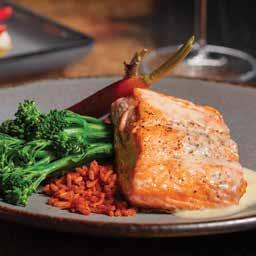
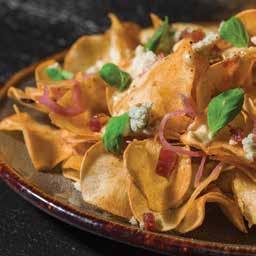
Chef Anthony Olivas’ love of pastries began at 14. That was when he took a job washing mixing bowls, pots and pans at the neighborhood bakery. It wasn’t long before he was promoted to baker’s apprentice, filling, baking and decorating cakes.
Today he’s the Executive Pastry Chef at San Manuel Casino, a position that has afforded him the opportunity to travel the world, exchanging ideas and recipes with chefs in France, Belgium and Spain.
These days, when he’s not in the kitchen, he’s touring local bakeries and pastry shops to feed his imagination – and bring even more whimsical treats to the table. When asked about his favorite dessert, he said a rich chocolate brownie. Now you can make it at home.
RICH CHOCOLATE BROWNIE
4 ounce Ghirardelli Semi-Sweet Chocolate Baking Bar
½ cup Ghirardelli Semi-Sweet Chocolate Baking Chips
½ cup unsalted butter, cut into pieces
1 cup firmly packed brown sugar
1 teaspoon pure vanilla extract
2 large eggs
¾ cup all-purpose flour
¼ teaspoon baking powder
3∕8 teaspoon salt
1. Preheat oven to 350°. Butter and flour an 8-inch square baking pan.
2. Chop the semi-sweet chocolate baking bar into 1-inch pieces.
3. Fill a pot with water and bring to a boil; turn the flame down and place a bowl on top of pot, adding the chopped chocolate bar and butter, stirring occasionally until smooth. Remove pan from heat and let cool to room temperature.
4. Stir brown sugar and vanilla into chocolate mixture; add eggs and mix well.
5. In a bowl, sift flour, baking powder and salt. Slowly fold flour mixture into chocolate mixture, mixing well until blended. Stir in chocolate chips and pour batter into prepared pan.
6. Bake for 25-30 minutes, until a toothpick comes out clean. Remove from oven and cool at least 15 minutes before cutting. Enjoy!
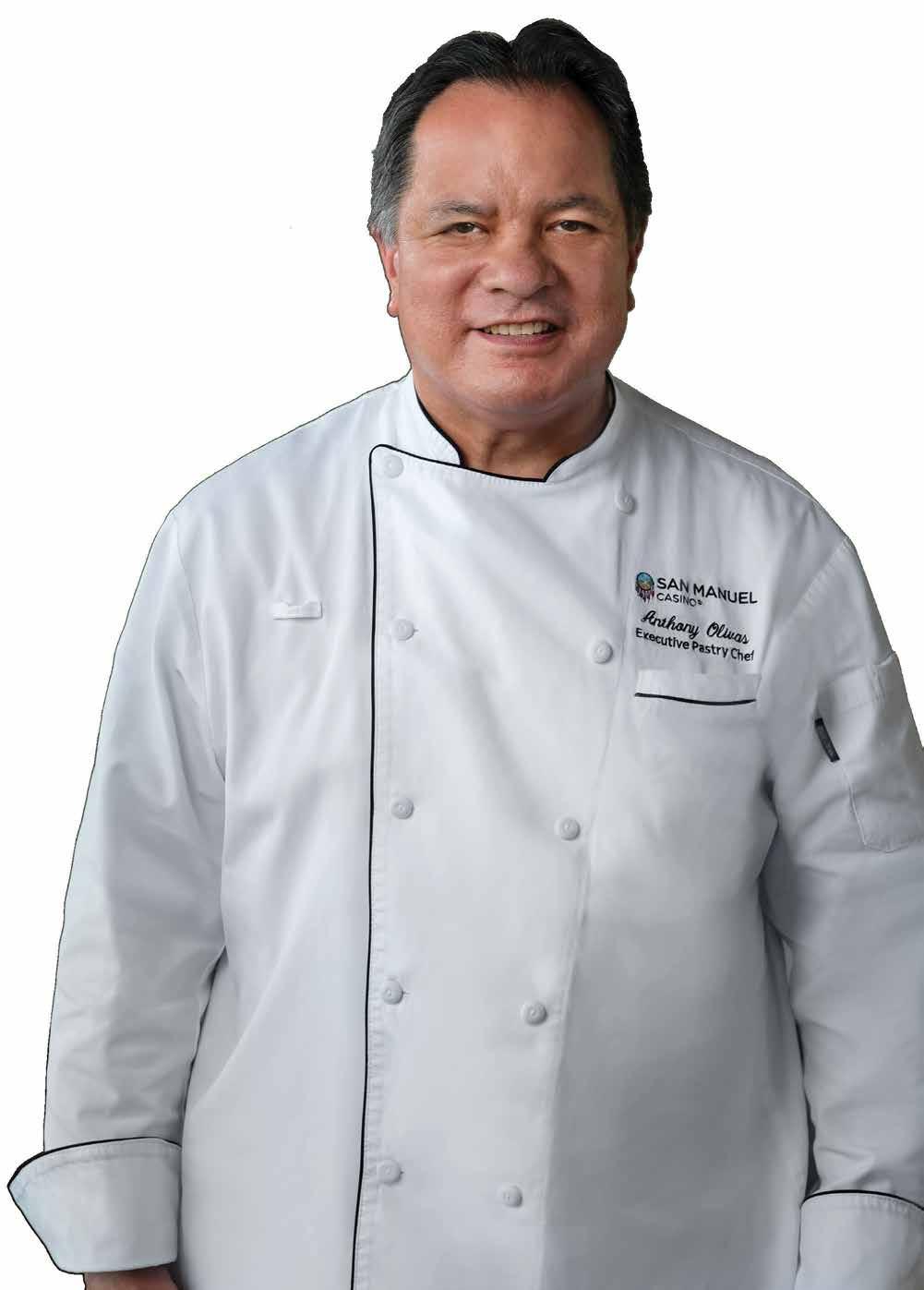
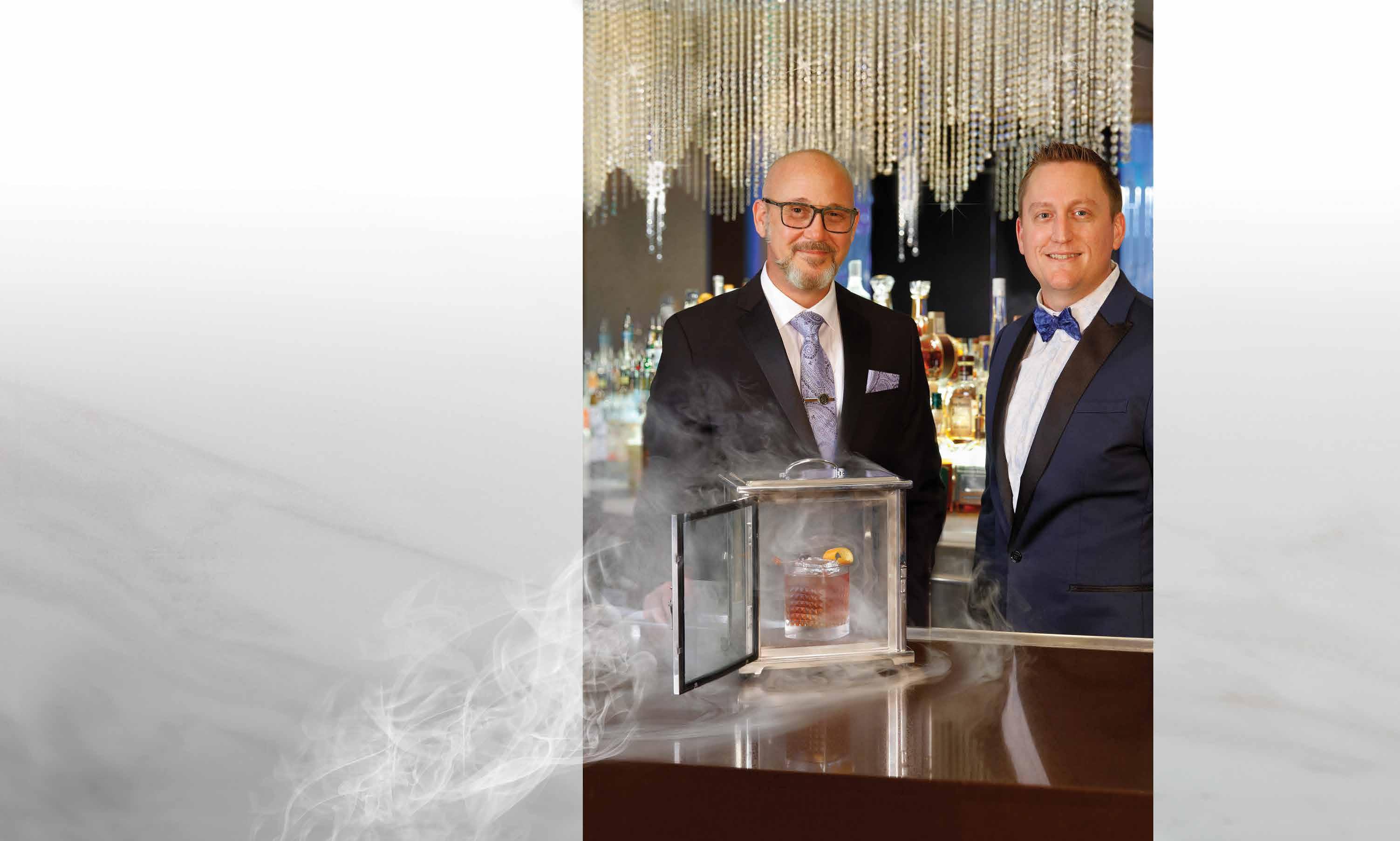
While Los Angeles, New York and Chicago are known for urbane bar experiences, the Inland Empire is proving it can hold its own. And San Manuel Casino is leading the charge.
Joey Gottesman and Chris Rosano have a lofty goal for San Manuel’s bar program – and the Inland Empire itself: to create awareness that there are craft cocktails, and cocktail artisans, right here. The two men are the driving force behind the mixology offerings at San Manuel Casino and have their sights set on transforming the cocktail scene – as well as the guest’s relationship with it. “We’re not only creating fantastic cocktails and inspiring bartenders, we’re also a learning bar where guests can experience complex cocktails without feeling intimidated by a long list of esoteric ingredients,” Joey said.
Guests can also venture out of their comfort zones, while keeping one foot planted in familiar territory. “People say they don’t like gin because they’ve only had London dry gin,” Chris explained. “So, if they like Lemon Drops, we’ll make them a Gimlet because it’s so similar, and we’ll use a botanical gin that finishes with a beautiful bouquet of floral notes. Suddenly they realize they like gin.” With a background in chemistry and biology (Chris) and culinary arts (Joey), creating new drinks is part R & D and part gastronomy. And it all happens in the lab, the bar at the upscale steakhouse, The Pines.
BY JESSICA VILLANO | PHOTOGRAPHY BY JAIME BIONDO

Is there a scotch or cognac you’ve been dreaming of trying?
Collection 86, named for the year San Manuel Casino opened, is one of the most exclusive lists on the West Coast. Curated by Joey and Chris, it boasts fine wines, rare Scotches and cognacs, world-class bourbons, vodkas, tequilas and whiskeys from around the world.
“It’s a master list of the who’s who in spirits, made as approachable as possible. That way people who want to try them, can – at an affordable price,” said Chris.
With seasonal ingredients mise en place, the team conceptualizes the guest experience –presentation, aromatics and taste – and then riffs off one of the five mother cocktails (like mother sauces in French cuisine) to create something new. House-made bitters, syrups and sours add a multidimensional feel, and touches like saline create an unexpected, savory finish.
“I look at things in scientific terms, like how acid reacts with proteins. Joey's background as an executive chef means he knows how to get the brightest flavor out of the ingredients,” Chris said.
Along with seasonal drinks, you’ll find a core list of classics, as well as the bar team’s interpretations of said classics. In fact, they’ve whipped up a side-by-side concept for the Overlook Bar. In the left column of the menu, you’ll find the original cocktail, and on the right, the modern version with a signature twist. (They’re calling it a two-drink-minimum bar because you should definitely try both versions.)
When the two aren’t in the lab, they’re training bartenders on the physical mechanics of making drinks as well as the language, the etiquette and the why behind it all: aeration, maceration, dilution and temperature.
“Our program uses techniques you’ll find in cosmopolitan areas,” Chris said, “and ones we're creating in house.”
One such technique is a modern approach to the centuries-old practice of aging. Instead of barrels, they’re adding staves of seasoned, toasted and charred oak to decanters in order to mellow spirits and cocktails faster and more consistently.
What does this mean for the guest? It means a drink that once took 10 minutes to create now takes two. By taking the shelfstable ingredients of a nine-component cocktail such as the Singapore Sling and decanter batching it, the team can add fresh elements upon order and focus their attention solely on the artistic touches that finish the drink. No long wait at the bar; no trading artistry for speed. “We’re creating an ergonomic craft bartending movement,” Joey said. “We want our guests to discover the difference between drinking and enjoying cocktails. And we want them to walk away saying, that was fantastic, seamless, effortless.”
How does the craftmanship, creativity and technical skill play out in the glass? Here’s a peek at a few of the drinks the bar team has dreamed up.

UNCHARTED TERRITORY
In the spirit of a margarita, the Latitude 34º North features Cazadores Reposado and simple syrup. But the Montenegro Amaro – with 40 botanicals ranging from herbaceous and citrusy to sweet – egg white and atomized chocolate bitters take margarita lovers where they’ve never been before. And the rosemary bubble cap? Well, you just have to try it to believe it.
LOUNGE LIFE
If there’s one drink that defines Tiki culture, it’s the Mai Tai, a punch created by Trader Vic in the ‘40s; seven decades later, the mixology team at San Manuel Casino has perfected it. The Vaulted Mai Tai features barrel-aged Don Q Anejo, Orange Curaçao, Giffard Orgeat and fresh lime juice. But it’s the Kraken Dark Rum float that sets it apart.
THE MASHUP
What happens when you take the elements of a Sazerac and a sour and put them together in one glass? The Shuffle. Botanist Gin, Antica Carpano Sweet Vermouth and atomized Peychaud’s Bitters are enhanced with Montenegro Amaro; then fresh lemon sour, an orange swath and mint garnish are added to keep you on your toes.
DRAMA QUEEN
An iteration of the Old Fashioned, the Fire and Ice makes bourbon, simple syrup and bitters an Oscar-worthy experience, thanks to the dramatic tableside presentation. The drink is placed in a smoking box and then imbued with notes of char and wood. An expressed orange swath and Luxardo cherry top it off.

FOR YOUR OWN GOOD
The recipe for the Whiskey Sour was first published in 1862. But its debut was decades earlier, on ships that sailed the open seas. That’s because scurvy was cured with citrus, and the Whiskey Sour has plenty of it. Nowadays you can just order The Gold Rush. Sazerac and Montenegro rye, fresh lemon juice and honey syrup will cure what ails you. And the egg white foam, dehydrated lemon wheel and Peychaud’s bitters (in the shape of a fleur de lis no less) give it an artistic touch.
SKY’S THE LIMIT
San Manuel Casino elevates the gaming experience on the West Coast with five high limit lounges
BY JENNY WERTH
Step foot into one of the five high limit gaming rooms – Lotus 8 Palace, The Vault Gaming and Provisions, High Limit Tables, High Limit Slots or the new Enclave – at San Manuel Casino and the energy is electric: chips are stacked between games of Baccarat, the slots jingle and purr and hands tap the felt, calling for one more card.
But perhaps the most electrifying part is that these rooms boast the highest limits on the West Coast. “There was a demand for higher denomination slot machines and higher limits on table games in California, but no place offered it,” explained General Manager of San Manuel Casino, Peter Arceo. “So, we decided to push the limit, so to speak. Now we’re competitive with Las Vegas and can serve guests looking for that type of action.”
Not only does San Manuel Casino have the highest limits, it also provides choices for high-end players, all of whom have different tastes. With multiple gaming areas, all offering their own unique vibe, guests will find an environment that suits their style and desires with the same level of privacy and service across all offerings, no matter their taste or inclinations.
On the first floor, as guests enter the Lotus 8 Palace, they’re greeted by the auspicious golden dragon and laughing Buddha against a backdrop of striking Asian-inspired design. Just across the gaming floor, located on either side of the Asian restaurant, Hong Bao, you will find the High Limit Slots and High Limit Table rooms. A custom marble walkway leads guests into the luxurious slots chamber, which offers more than 200 of the newest and hottest slots in the gaming industry. The High Limit Tables gaming space offers the highest table limits yet – $25,000.
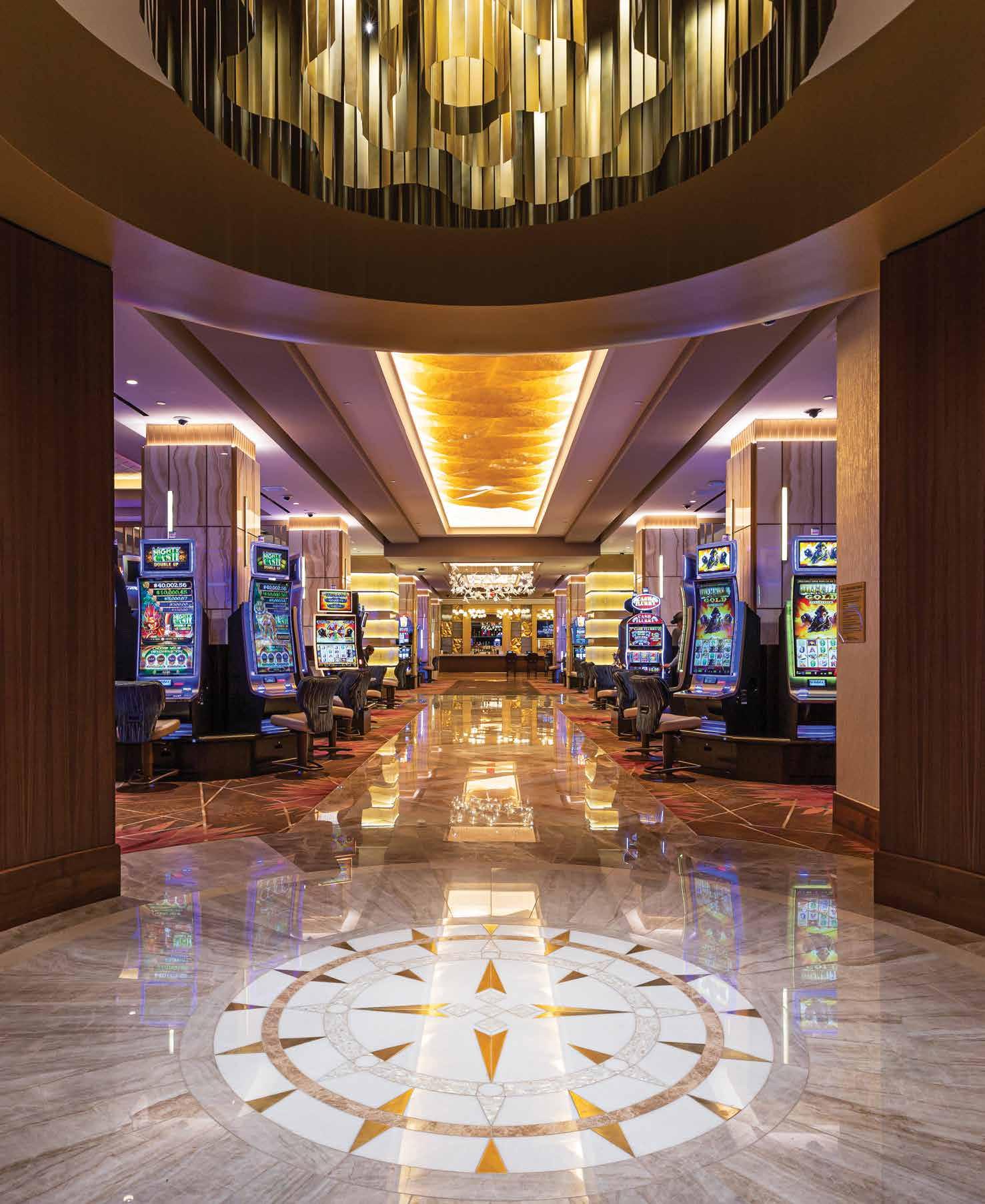

The newest high limit gaming area opened in July, as part of the first phase of San Manuel Casino’s resort expansion. The Enclave is a smaller and more intimate gaming space that offers players their own bar, cashier and restrooms as well as two exclusive gaming areas. The position of the bar and lounge gives players a view of the main casino floor, allowing them to connect and feed off of that energy.
On the second floor, The Vault offers an upscale, intimate experience, complete with private lockers and restrooms. Both lounges offer a bar stocked with top-of-the-line spirits as well as high limit slots and table games, including Blackjack and EZ Baccarat, with limits up to $25,000.
While guests are focused on building the winning hand, the team behind the gaming experience is focused solely on top-of-the line service – where
“Our goal is to create an unforgettable encounter for our guests.We want our guests to have the next-level gaming experience, an experience they can’t wait to come back to.”
needs are not only met, but anticipated. To this end, all of the high limit spaces offer concierge service to ensure each guest has everything they could want. Reservations at the steakhouse? Done. Have a certain dealer you love? No problem. Need a translator? Just one moment, please.
“Our goal is to create a unique, elevated experience for our guests and inspire an undeniable desire to return,” explained Director of High Limit Gaming David Bentley. And nothing makes an experience unforgettable like luxury, incredible décor and impeccable service. In fact, the staff receives continuous and intense training to create
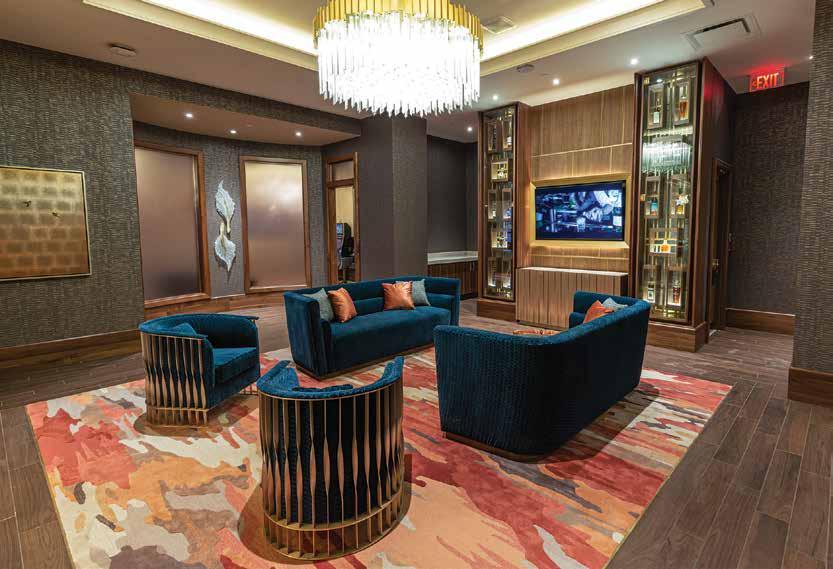
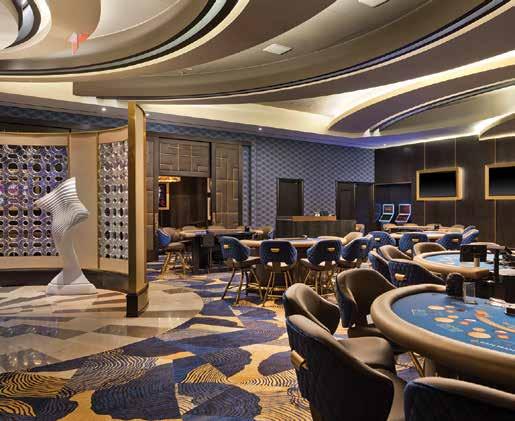
the best environment for guests.
Kenji Hall, Chief Operating Officer of San Manuel Casino, doubled down on this philosophy, saying, “It takes a spectacular team with incredible teamwork to execute this kind of service – and I firmly believe we have the best team members in the country. By creating memorable moments, we show guests just how much we value them. We want them to look forward to their next adventure with us.”
Whether you’re pounding the felt in a Las Vegas mega-resort or hugging the rail at San Manuel Casino, there’s nothing quite like the excitement of a table game.
While playing a game of chance gets the blood pumping, the bonus of human interaction with a living and breathing dealer (not to mention other players) makes the entire experience more interactive, dynamic and exhilarating.
101 TABLE GAMES
That said, not every table-game experience is the same. And San Manuel Casino is a perfect example. State regulations and tribal gaming compacts mean there are a few differences between California and Nevada play. Here’s a rundown of how gaming at San Manuel Casino is unique.
By Matt Villano
Cards Only
Tribal gaming compacts in California prohibit the outcome of a game to be determined by a die or a ball. That means when you’re playing Craps, the final step in the game is determined by cards, not a throw of the dice.
Booze Control
Another variance of the rules governing tribal casinos: alcohol isn’t served 24/7. Guests must purchase their own alcohol due to California state law. But that just gives you a chance to chat with the mixologist about which cocktail you should try next.
Side Bets & Progressives
Table games at San Manuel Casino usually offer two or three side bets and progressives. Earlier this year San Manuel paid out a jackpot worth more than $1 million on a game of Pai Gow.
(Most Progressive jackpots payout between $5,000 and $500,000.)
And while you’ll find side bets at Vegas casinos, you won’t find nearly the number of progressives.
The rules for the table games might be different, but gaming lingo is universal. Here’s a quick lesson on the language:
CASE BET
The last bet usually made with the last money a player has in front of them.
BARBER POLE
A player bet that has different value cheques stacked up in no particular sequence.
SLEEPER
A bet left on a table that a player has forgotten about, usually on a Craps table.
Better Comps
Sign up for a players’ card in Las Vegas and you might be lucky enough to qualify for a free buffet after a 6-hour session. At San Manuel Casino, the comp structure is way more generous, with just a few hours of play usually qualifying you for free food.
Friendly Dealers
In most Vegas casinos, dealers pool tips, which means they’re guaranteed consistent gratuities no matter how friendly they are. At San Manuel Casino, dealers “toke” for themselves. The result? You’re going to find friendly dealers.
MINNESOTA TRIBES were the first in the nation to negotiate & sign gaming compacts with a state government. DID YOU
California in the Lead
California has 66 active tribal casinos belonging to 63 of the 109 federally recognized tribes in the state. – California Gambling Control Commission
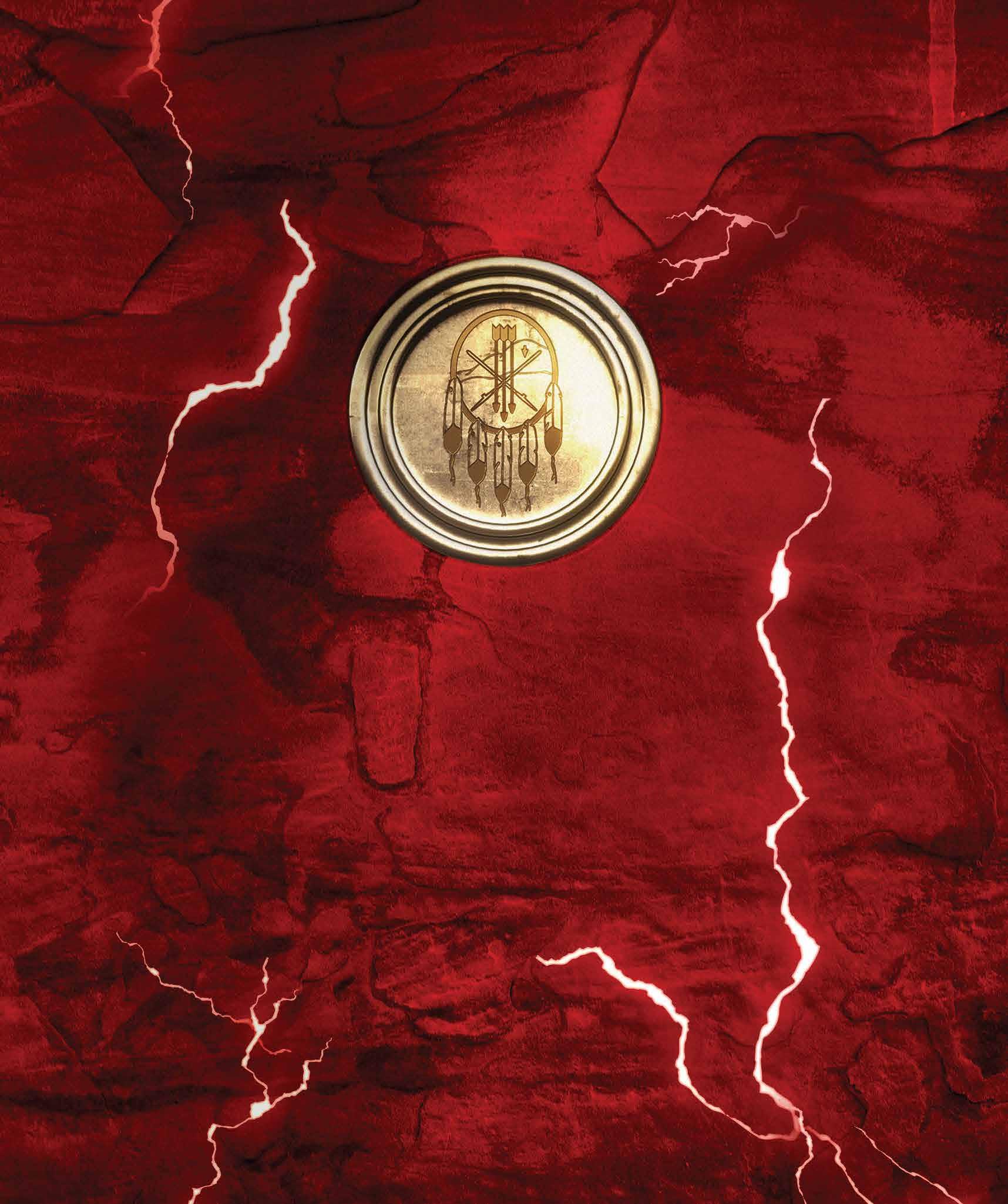





































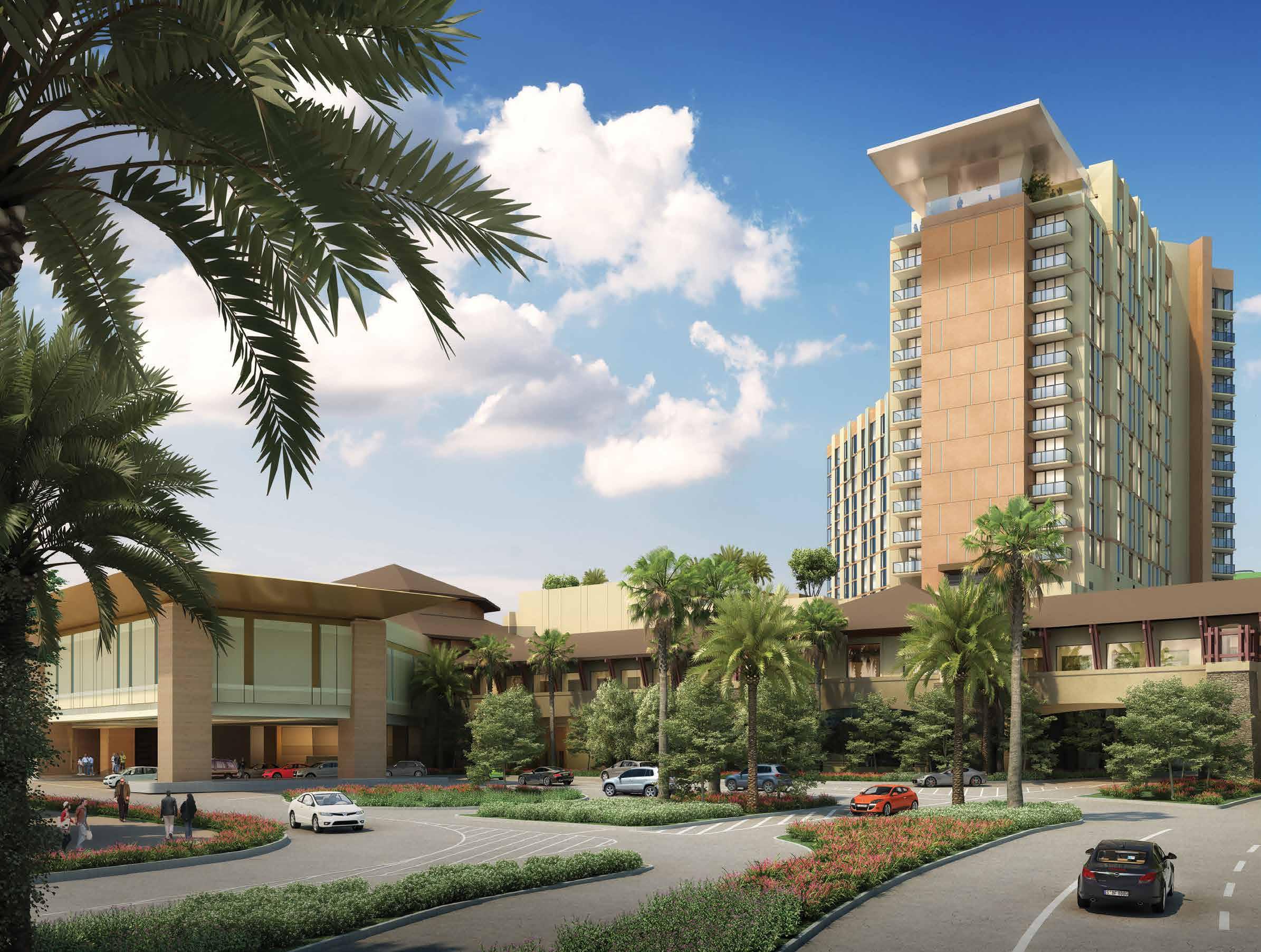

DAWN – OF A –NEW ERA
This winter, the San Manuel Band of Mission Indians will open its first-ever luxury resort as part of the San Manuel Casino expansion. The hotel will include a 17-floor tower with sweeping views of the San Bernardino Valley, the Tribe’s ancestral lands.
From the moment guests step foot inside, they’ll be greeted with the elements of the local mountains: stoneclad walls, wood accents and water features that fill the lobby with the serene sounds of a river. From there, guests can check in to one of the 432 rooms, 127 of which are spacious suites with thoughtfully curated amenities. For those looking to add more thrill, head over to the newly expanded gaming floor. San Manuel Casino is now home to the most slots on the West Coast and the most progressive table games in the U.S. Enthusiasts can take a seat at Blackjack, EZ Baccarat and Pai Gow tables before recharging at one of the new eateries, all offering top-notch cuisine.
If you crave relaxation, the resort’s new pool deck will offer a peaceful hideaway tucked behind a line of native trees. Guests can unwind in nature while relaxing in poolside loungers or a private cabana. The newly appointed spa will also offer relaxation with treatments such as facials, massages and scrubs as well as a steam room, sauna and water sanctuary. The Spa has two lounges where guests can enjoy the natural beauty of the surrounding landscape with floor-to-ceiling windows overlooking the expansive vistas.
Whether you’re looking for the thrilling gaming experience San Manuel Casino is known for, a long day of relaxation or a culinary delight from the resorts’ newest eateries, you’ll find it all here with best-in-class service.
EXPANDED CASINO GAMING SPACE
432
GUEST ROOMS
127 of which are suites
9,013,765
lbs
OF REINFORCING STEEL
Design utilizes special-order beams from Germany and some of the largest structural steel column members in the nation
Guest room CARPETS made from RECYCLED plastic bottles
State of the art full-service
55,985
square feet of windows
Reaching 15 stories tall and topping out at 205 feet
500
The speed the hotel elevators travel in feet per minute (FPM)
EAMES CHAIRS
in guest rooms
Created by renowned designers Charles and Ray Eames in 1965, this lounge and ottoman are featured in the Museum of Modern Art and are a staple of mid-century modern design
800,000
square feet of new ENTERTAINMENT AND HOSPITALITY SPACE (roughly the square footage of LA Coliseum)
Beautiful pool deck with bar and PRIVATE CABANAS
How SWEET It Is
The dessert program at San Manuel Casino isn’t a one-man affair. While it’s true that Executive Pastry Chef Anthony Olivas charts the course, it’s his team of talented chefs that gets him from idea phase to execution. Seeking inspiration from fellow pastry chefs, magazines and cookbooks, Chef Anthony and team are currently whipping up new desserts, specific to seasons and venues. Like this espresso-infused, dark chocolate mousse with white chocolate graham cracker crust, only available at The Pines Modern Steakhouse (when it opens in its new location).
But if you’re willing to skip the dinner and get straight to dessert, head to Big Mo Café where it’s all sweets, all the time. The 24-hour joint serves up carrot, coffee and pineapple upside-down cakes along with cinnamon rolls, eclairs and double-fudge brownies and more.

MUST TRY
Chocolate Bruno with a quenelle of vanilla bean ice cream
San Manuel Casino
Directory
DINING
Big Mo’ Café
Quick Bites
Refuel with quick treats and refreshments at Big Mo’ Café – your 24/7 one-stop destination to satisfy those cravings and get you back to your favorite slots and table games. The desserts and pastries are some of the most popular and photographed items on property! 800-359-2464
Chingon Kitchen
Casual Dining
Authentic Mexican cuisine is served up daily at the original George Lopez’s Chingon Kitchen. Create your ultimate flavor combination from our extensive menu of tacos and taquitos, fresh guacamole, frijoles negros, elote (street corn) and much more!
909-864-5050
Hong Bao Kitchen
Fine Dining
Asian Cuisine with a modern twist. Enjoy specialty-made dishes prepared by our award-winning culinary team such as Shanghai Braised Pork or Kung Pao Chicken. Limited cocktails, wines and spirits curated by a team of award-winning mixologists, including our Matcha Matcha Cocktail. 800-359-2464
Just Barbeque
Casual Dining
JBQ is dedicated to nothing but deliciously mouthwatering, off-the-chain-good BBQ. In fact, it’s so good, it’s probably the best pulled pork on the planet. 800-359-2464
The Pines Modern Steakhouse
Fine Dining
Enjoy an extensive menu of fresh and delicious cuts of meat and seafood in the exquisite setting of The Pines Modern Steakhouse. Discover exclusive cuts of premium USDA beef, rack of lamb and the freshest, high-quality seafood delivered daily, all complemented by locally sourced, organic produce. 909-425-4889
Rock & Brews
Casual Dining
Add a bit of rock ‘n’ roll to your San Manuel Casino experience at Rock & Brews Restaurant. Curate your own “playlist” of rockin’ dishes – from appetizers to juicy hand-crafted burgers – seven days a week, all while classic and current hits play in the background. 909-425-4838
Serrano Vista Cafe
Casual Dining
Serrano Vista Café is a welcoming, casual, yet upscale setting inspired by the citrus groves of Southern California. Serrano Vista will offer classic American comfort food with a California twist, including healthy options 24 hours a day, seven days a week. 800-359-2464
TuTu’s Food Court
Quick Bites
TuTu’s Food Court has you covered with a wide variety of eats and desserts available daily to fit your appetite. 909-864-5050
BARS & LOUNGES
ACES
First rule of Blackjack: always split your aces. Luckily, you never have to split time between entertainment and value at Aces, where you’ll find the perfect balance of craft beers and crowd favorites on tap. 800-359-2464
BAR BAR BAR
Grab a drink or conversation with our friendly barkeeps at BAR BAR BAR, where you’ll find a bevy of cocktails and ice-cold bottled or on-tap brews in a relaxing setting.
800-359-2464
DEUCES
Drop into Deuces for ice cold-drinks, your favorite beers on tap and the best in live sports entertainment on the big screen. 800-359-2464
Finish Line Bar
Whether you’re winding down after a night of hitting jackpots or just getting things started, The Finish Line Bar has you covered with a drink menu for everyone, including cocktails from around the globe. 800-359-2464
The Overlook Bar
Specialty cocktails and a chance to sample something from the exclusive Collection 86 liquor menu make The Overlook Bar a destination fit for royalty. Enjoy a glass of private stock wine or a neat pour of the rarest bourbon while taking in views from the balcony. 800-359-2464
Round Up Bar
Serving up a large selection of bottled and on-tap brews and an assortment of refreshing cocktails and mixes daily.
800-359-2464
Tropical Storm Bar
Whether you’re craving a Hurricane or a Tropical Storm Mojito, our drink list invites you to take a relaxing vacation without leaving the casino. 800-359-2464
Tukut Lounge
Enjoy bar-top video poker or take a seat as you watch themed nightly entertainment. The recently revamped space near the center of the casino on the first floor includes a stage, state-of-the-art sound system and several HD screens. 800-359-2464
RETAIL
1891 Boutique
Find a huge selection of high-end designer brands for both men and women – from sunglasses and handbags to suits and dresses – as well as fine jewelry available, including designs by Native American artists. 909-863-5756
Cache & Carry
Level up your audio experience or simply replace a phone charger at Cache & Carry, where you’ll find cutting-edge electronics and accessories from the brands you love. 800-359-2464
HIS & HERS Boutique Shops
Two high-end shops located next to each other on the first floor of the casino. HIS carries men’s apparel, cigars, luxury lifestyle jewelry, sunglasses, watches and wallets. HERS features home décor, art, high-end fragrances, designer bags and much more! 800-359-2464
PUUHIA’T Roadrunner Gift Shop
Pick up San Manuel logo wear, official sports gear from our professional-team partners, snacks, cigarettes, cold beverages and more. 909-863-5755
R&B Authentic Merch Shop
Add some rockin’ to your shoppin’ like officially licensed rock merchandise, limited-edition photos and much more. 909-425-4814
GAMING
High Limit Slots and Tables
VIP Gaming
The High Limit Slots and High Limit Tables gaming rooms are a best-in-class experience for players who want to bet higher denominations. The space includes an array of amenities including the Collection 86 menu, boasting the finest wines and spirits in the world. 800-359-2464
Lotus 8 Palace
VIP Gaming
Create your own luck and find your Zen in our Lotus 8 Palace gaming room. This space creates an East-meets-West vibe with Asianinspired décor, slot machines and classic casino table games like EZ Baccarat and Buster Blackjack. 800-359-2464
SoCal’s Best Slots
Play 1000s of slots across two stories of mechanical reels, video reels, video keno, in-house progressive jackpots, wide-area and mystery jackpots and wide-area progressive (multi-casino) jackpots. 800-359-2464
Table Games & Progressives
Enjoy a wide variety of Vegas-style table games 24/7 on both levels of the casino such as Blackjack, EZ Baccarat and Pai Gow. San Manuel Casino also features the most table game progressive jackpots in California! 800-359-2464
The Vault Gaming & Provisions
VIP Gaming
Enter a world of mystery, intrigue and big jackpots at The Vault Gaming and Provisions, the ultimate high limit gaming room located on the second floor of San Manuel Casino. This exclusive room features close to 190 high limit slot machines, eight table games and a bar brimming with top-shelf spirits. 800-359-2464
Where to Buy
FASHION – Style + Significance
Page 35
KamiJo Wrap Dress by B.Yellowtail available at byellowtail.com; B.Yellowtail x Faherty Paloma Duster by B.Yellowtail available at byellowtail.com; Navy and White Blanket by Pendleton available at pendleton-usa.com; Feather Necklace by Aaron Rock available at 1891 Boutique
Page 36
Vmaze Maxi Dress by Virgil Ortiz available at virgilortiz.com; Vmaze Hoodie by Virgil Ortiz available at virgilortiz.com; Crush Raven Black Fashion Bootie by Durango Boots available at durangoboots.com
Page 37
“Brings the Water” Floral Dress by B.Yellowtail available at byellowtail.com; Sunrise Eagle Blanket by Pendleton available at pendleton-usa.com; Crush Golden Brown Fashion Bootie by Durango Boots available at durangoboots.com
Page 38
Crow Stripes Duster by B.Yellowtail available at byellowtail.com; Janine Pleated Maxi Skirt by B. Yellowtail available at byellowtail.com; Feather Necklace and Earrings by Aaron Rock available at 1891 Boutique; Triangle Lapis Pendant in sterling silver by Aaron Rock available at 1891 Boutique; Beaded Necklace by Aaron Rock available at 1891 Boutique
Page 39
Vfly Cut-Out Fleece Hoodie by Virgil Ortiz available at virgiloritz.com; Ear Cuff with bezel-set turquoise stones set in sterling silver by Aaron Rock available at 1891 Boutique
Page 40
Sun Centered Sweater by B.Yellowtail available at byellowtail.com; Women Warrior Scarf by B. Yellowtail available at byellowtail.com; Rez Spine All Leather Moto Duffle by Virgil Ortiz available at virgilortiz.com; Crush Golden Brown Fashion Bootie by Durango Boots available at durangoboots.com; Leather Cuffs with assorted precious stones and Silver Cuff by Aaron Rock available at 1891 Boutique
Page 41
Chamisa Dress with neo-felted hand-painted silk and devore velvet by Patricia Michaels available at pmwaterlilyfashion.com; Leather Cuffs with assorted stones by Aaron Rock available at 1891 Boutique
ON TREND – Cool + Collected
Page 71
High Jewelry Red Carpet Collection Sunglasses with 23k gold plate, acetate frame, casted metal bar and hand-placed Swarovski crystals by Chopard available at HERS Store; Artisan Exclusive LimitedEdition Guitar Inspired Sunglasses with string top bar and polarized lenses by John Varvatos available at HERS Store; Happy Diamonds Collection Free Diamonds are Happy Sunglasses with Swarovski crystals and High Jewelry Collection Sunglasses with exaggerated geometrical Swarovski crystals both by Chopard available at HERS Store
Page 72
Headphones and Earbuds by Master & Dynamic available at Cache & Carry; Spine Slim Zip Around Phone/Card Case in pink and blue by Virgil Ortiz available at virgilortiz.com; Wild West Adventure Phone Ring and Bold Collection Case, Down for Whatever Light Pink Tie Dye AirPods Case, Cactus Patterned Clear Case all by Casely available at Cache & Carry or GetCasely.com
Page 73
Orange Hibiscus Soap Bar, Forbidden Fruit Balancing Moisturizer, Royal Caviar Forever Young Eye Cream, Spotlight Brightening + Moisturizing Face Mask, High Class Hydrating Cleanser, Guest List Renewing Body Butter, 24K Brightening Face Oil and Beach House Soy Wax Candle, all by Principle available at 1891 Boutique or principlebodycare.com.
Sip &
When is a cocktail worth 10 grand?
When it’s made with one of the rarest and most expensive bourbons in the world. The Rare and Fine, an iteration of the New Orleansborn Sazerac, features A.H. Hirsch 16 Year Reserve 1974 Bourbon, of which there are fewer than 400 bottles in existence, and aromatized 1996 Chateau Lafite Rothschild Bordeaux. House-made allspice bitters add the depth and complexity that will have you saying, it was worth every penny
Savor

TIP
– of the –
SPEAR
Even the pick holding the expressed orange peel and Luxardo cherry is top-notch. This one is made of 14k gold.
If it still seems extravagant, don’t worry, you get to keep the hand-carved Lalique crystal tumbler and the vintage, locally sourced 14k gold cherry pick.
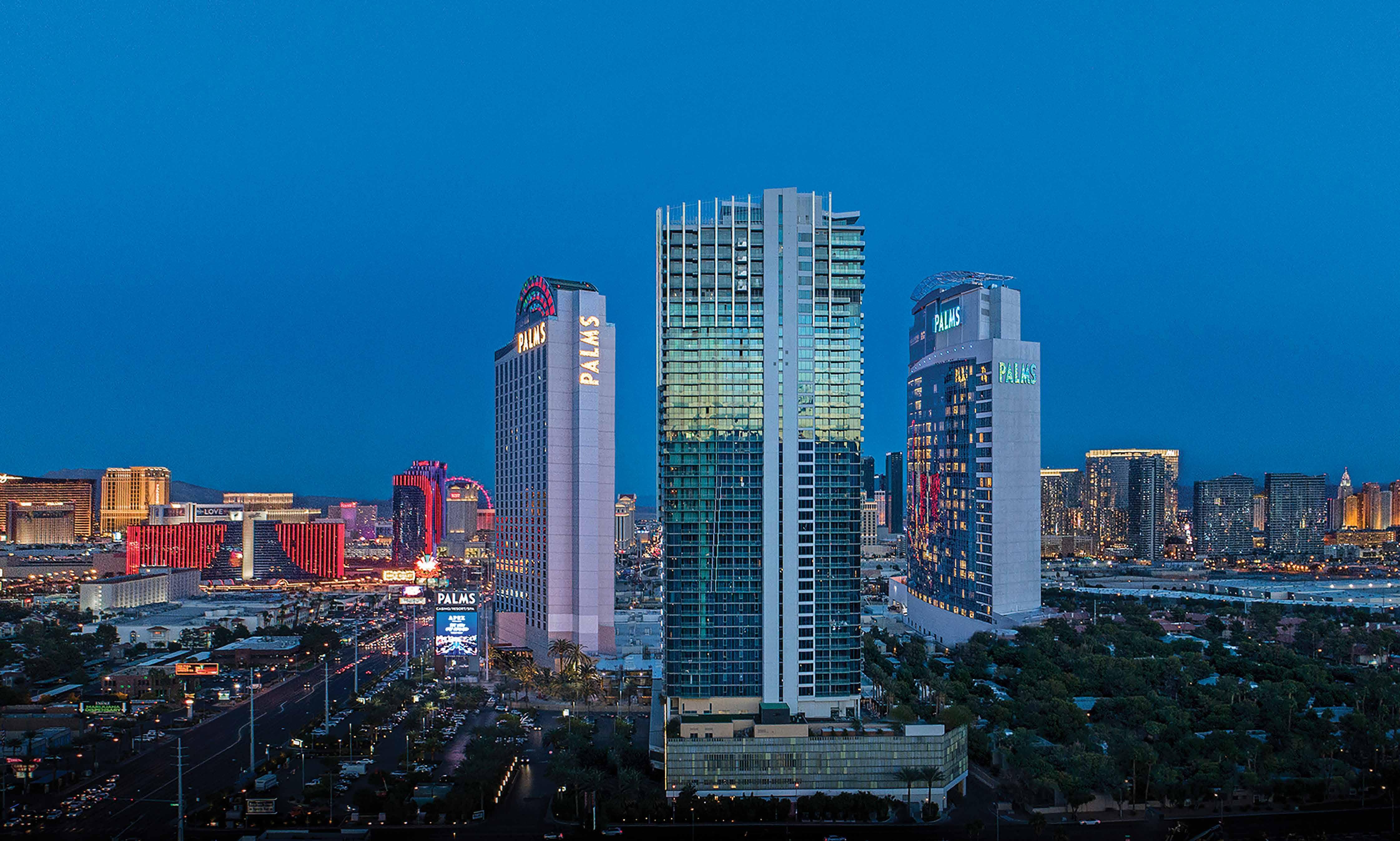
UPWARD Onward - AND -
San Manuel expands portfolio with the San Manuel Gaming and Hospitality Authority’s (SMGHA) agreement to purchase the Palms Casino Resort –becoming the first Native American tribal entity to wholly own and operate a Las Vegas casino resort.

On May 4th , the gaming and hospitality industry awoke to the news that SMGHA had signed an agreement to purchase the Palms Casino Resort in Las Vegas. SMGHA, an independent entity of the Tribe, will own and operate the Palms Casino Resort through subsidiary entities. The acquisition from Red Rock Resorts represents a historic milestone as SMGHA becomes the first Native American tribal entity to wholly own and operate a casino resort in Las Vegas.
As a sovereign government, one of the Tribe’s highest priorities is to secure reliable revenue sources for the future of its nation. Over the last 35 years, San Manuel Casino in Highland, CA, has proven to be such a reliable source and earned a reputation for delivering a premium gaming experience for Southern California guests, many of whom also frequent Las Vegas. This purchase of the Palms Casino Resort represents an important step in expanding the Tribe’s economic diversification efforts beyond the reservation.
The Palms Casino Resort is located just west of I-15 near the Las Vegas Strip, and prior to last year’s closure at the onset of the COVID-19 pandemic, included a casino, approximately 700 hotel rooms and suites, multiple casual and upscale dining options, meeting and convention space, a 2,500-seat theater, a pool and spa, plus other amenities in addition to the Palms Place condominiums. The property was previously purchased by Station Casinos, whose parent company is Red Rock Resorts, in 2016.
SMGHA is currently engaged in the Nevada gaming licensing process, which will take several months to complete. They are looking forward to this exciting new chapter and becoming part of the Las Vegas community.

